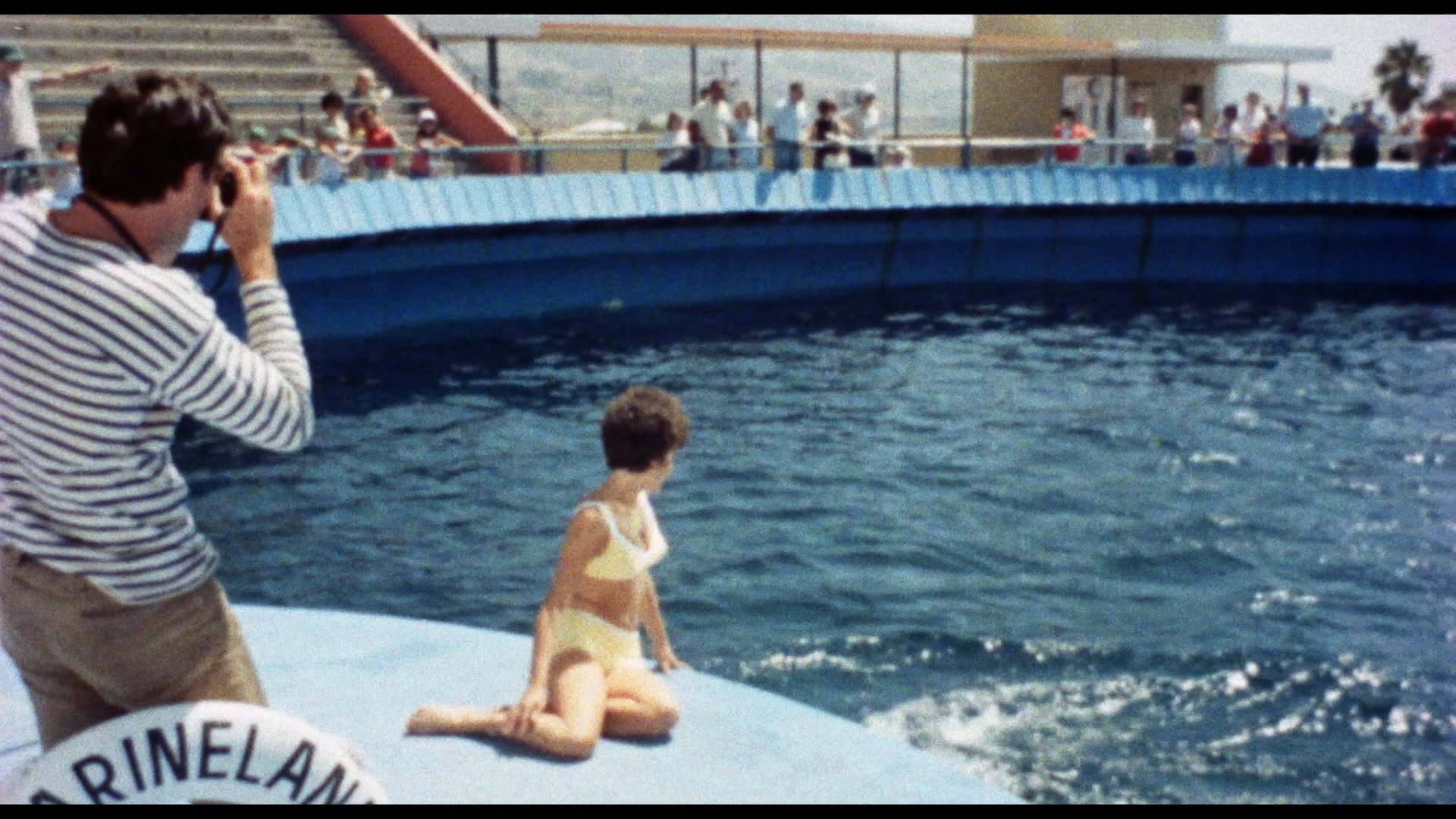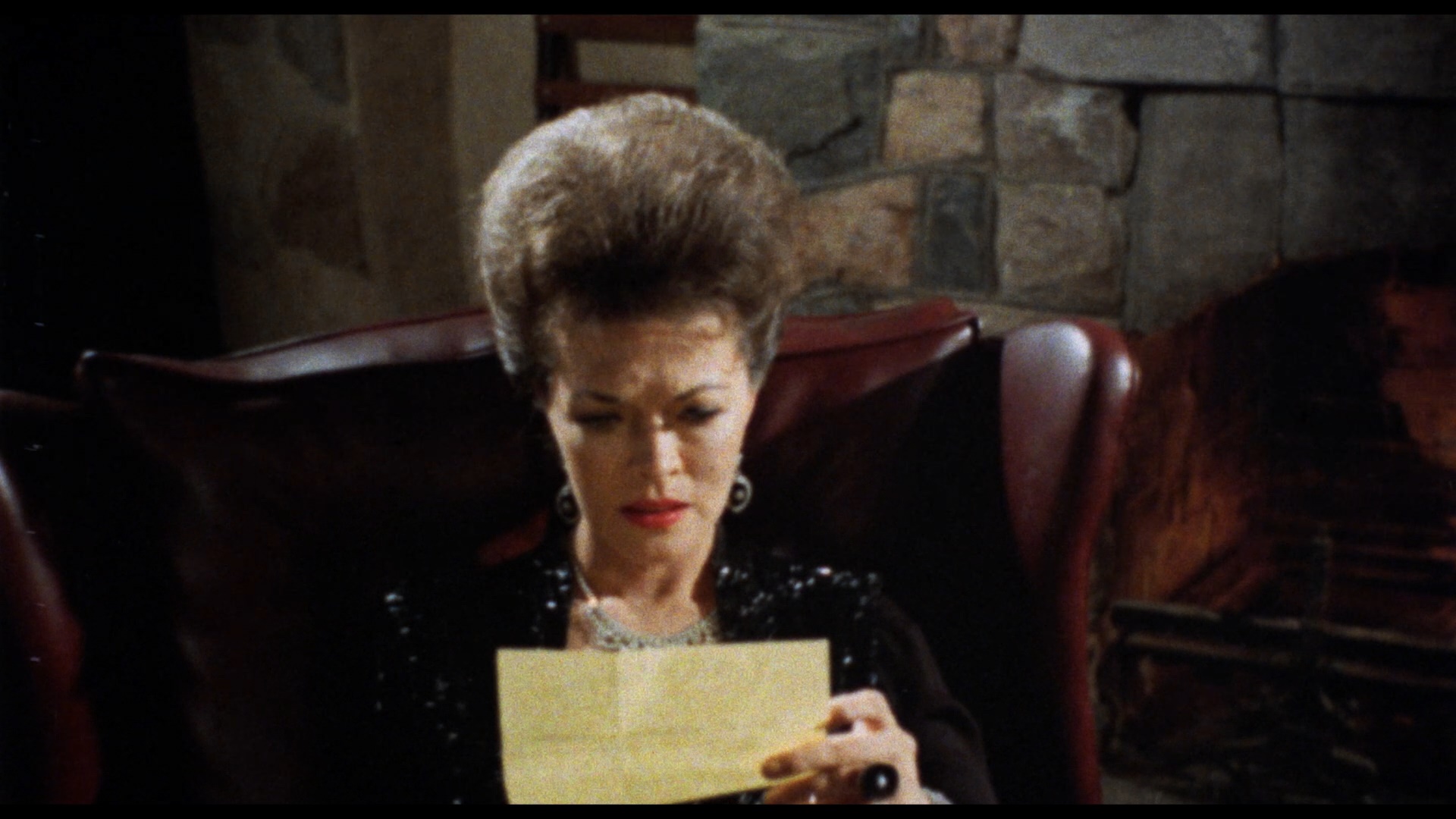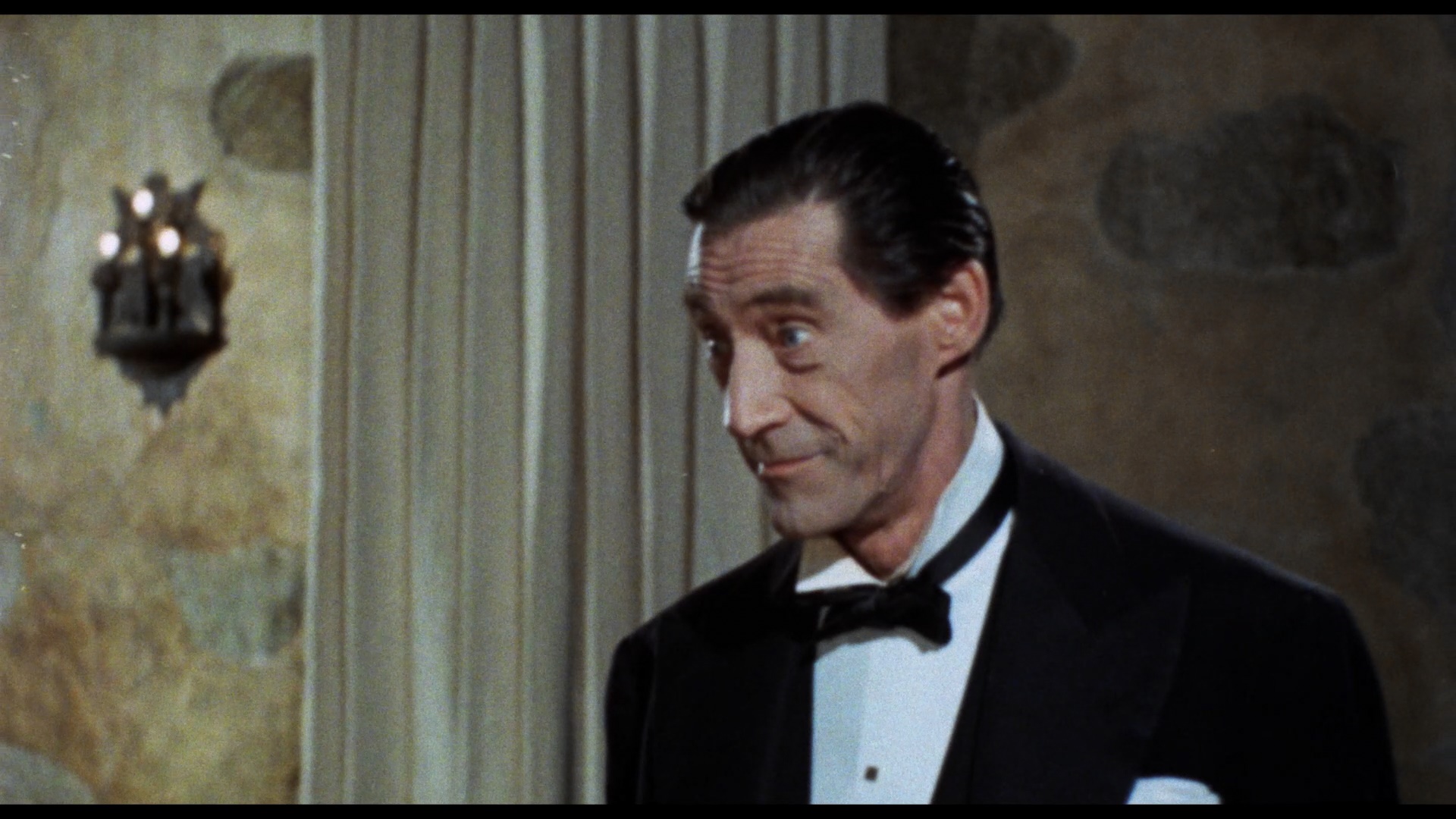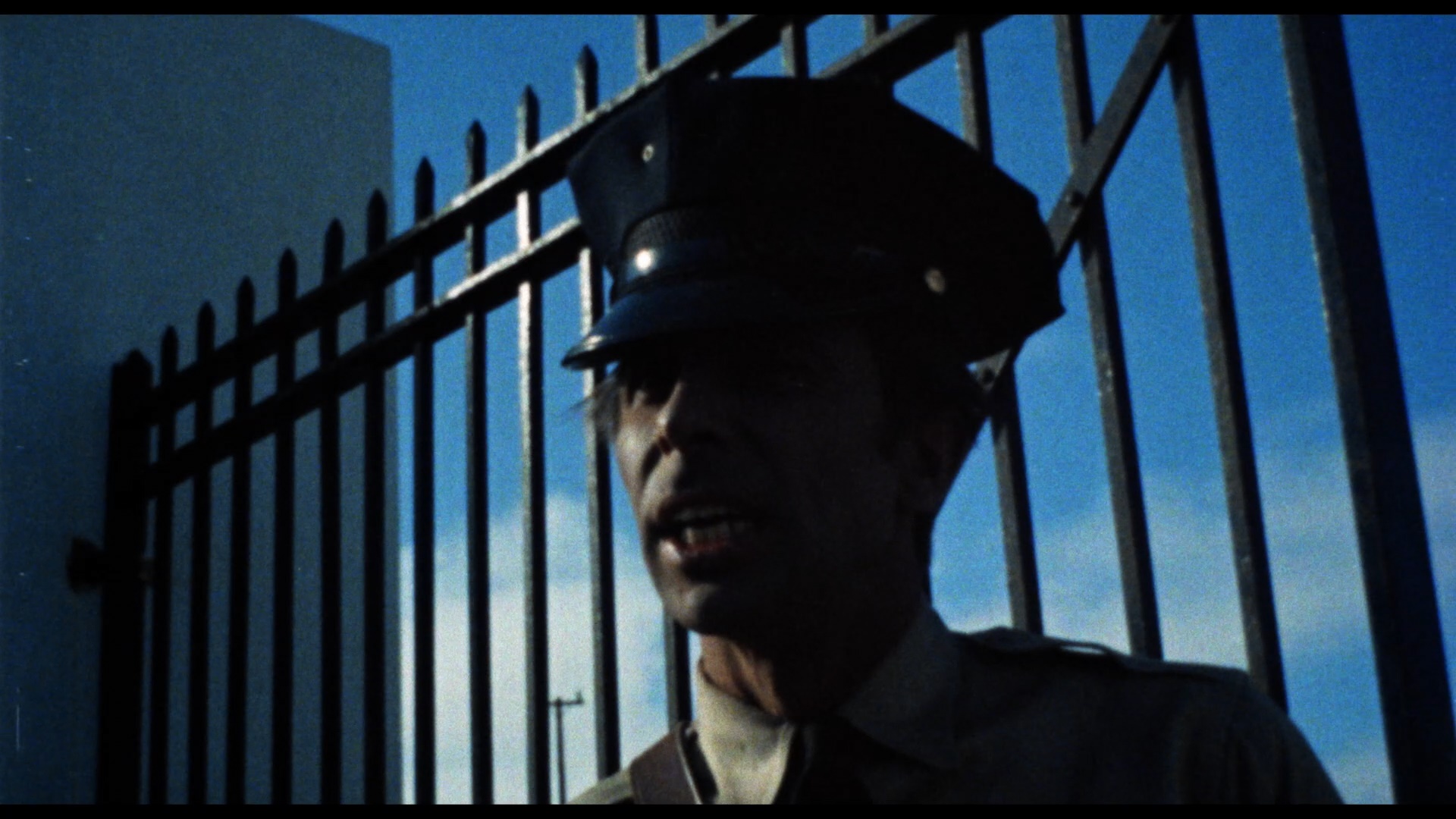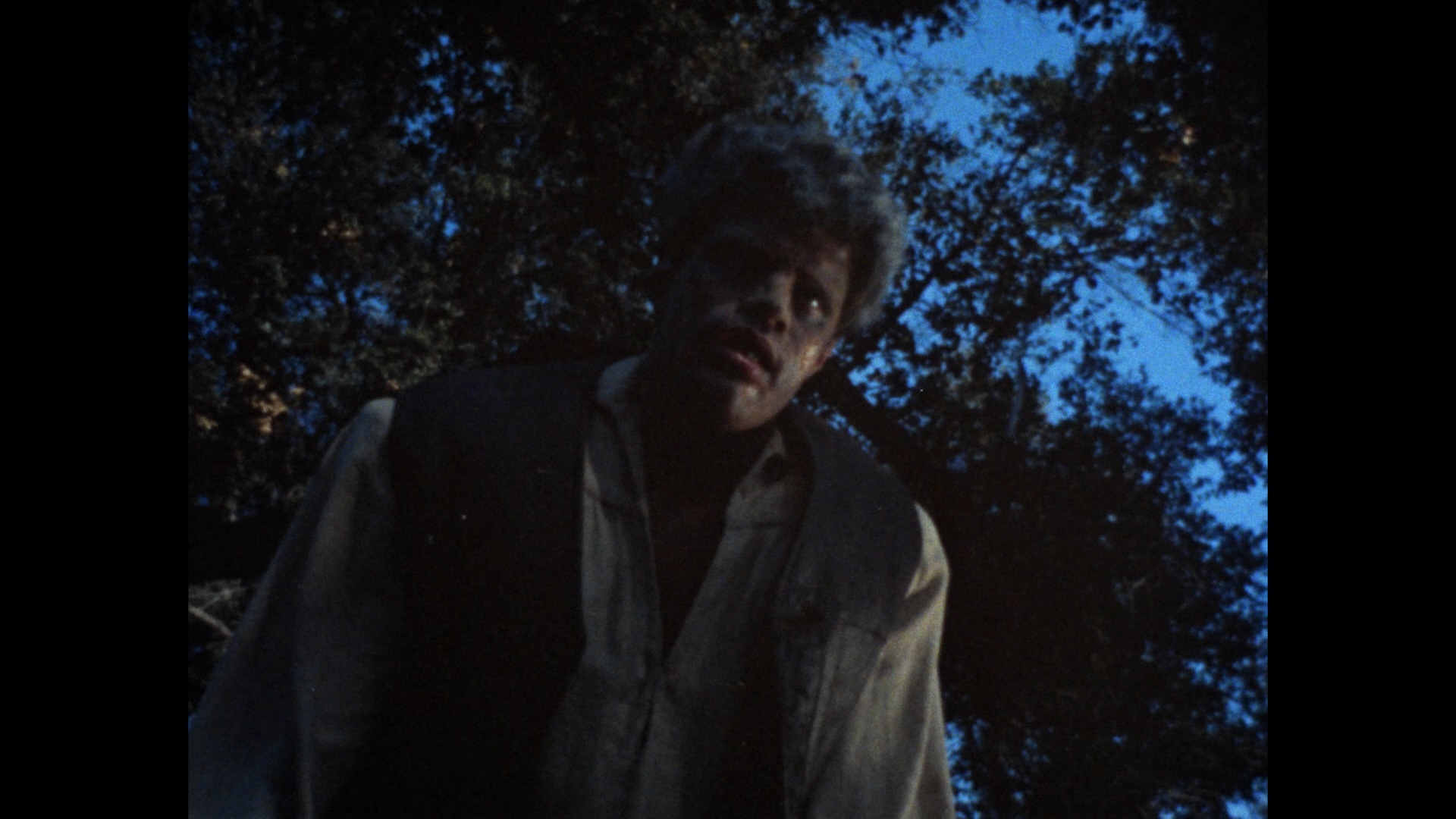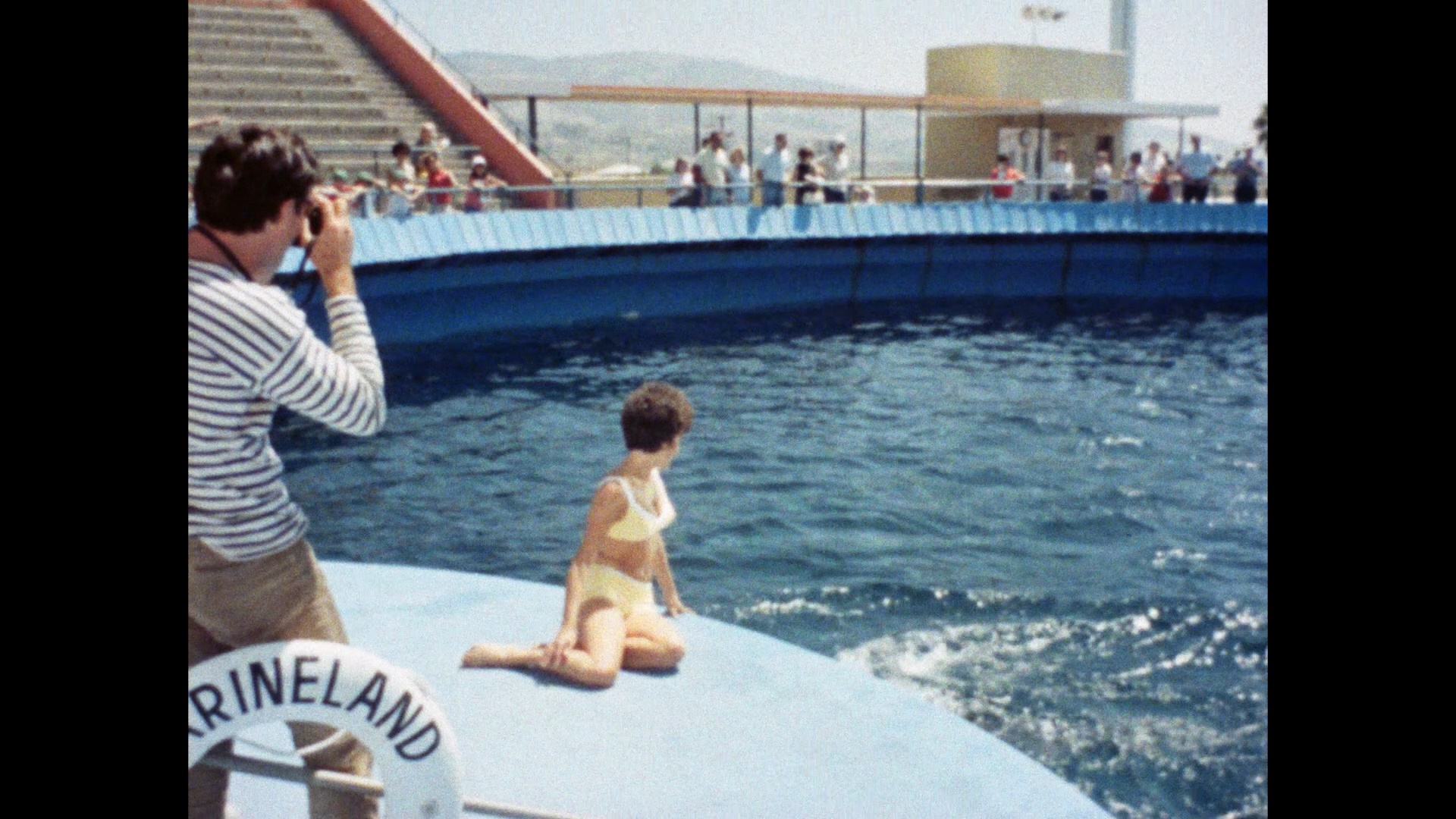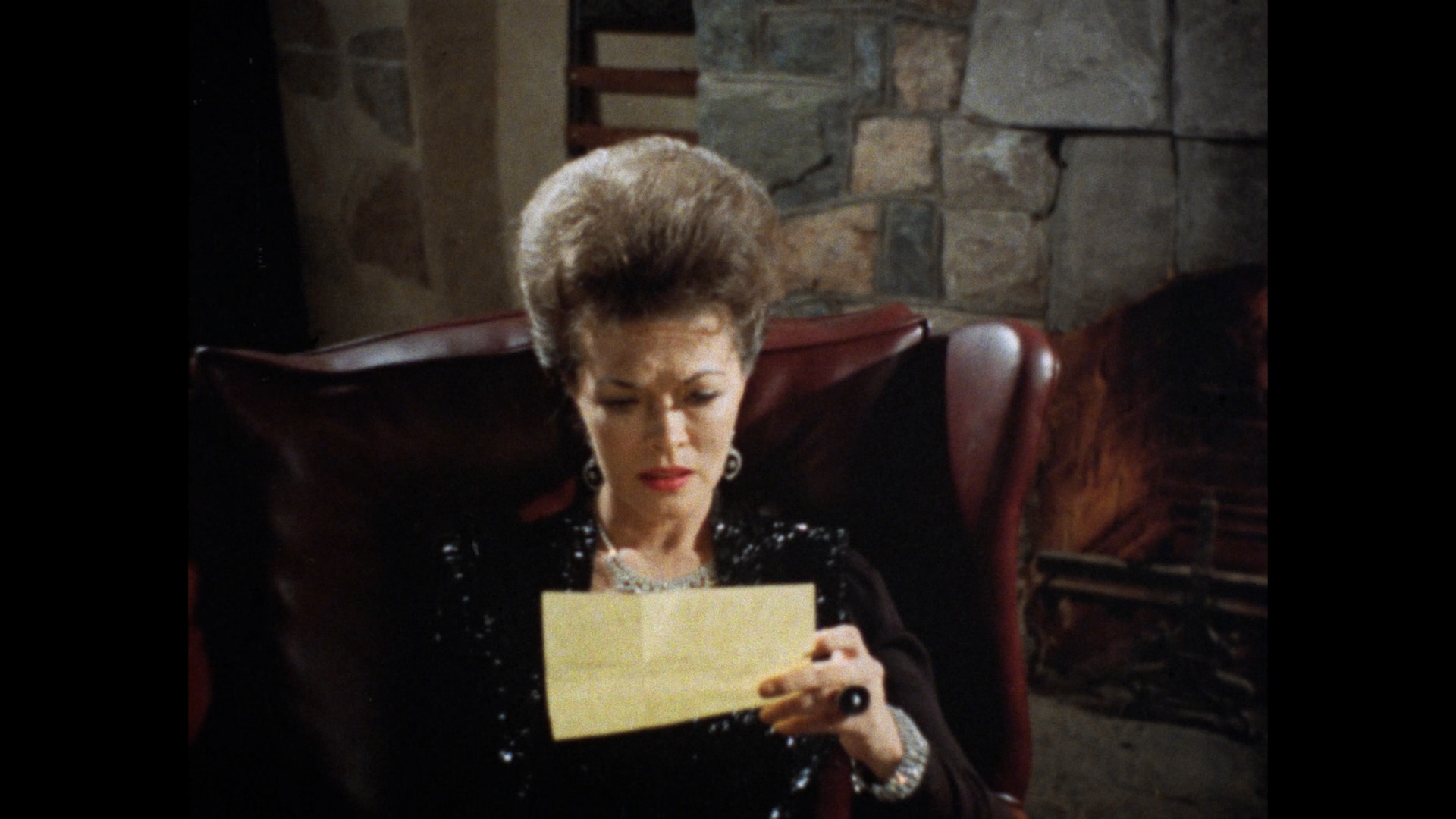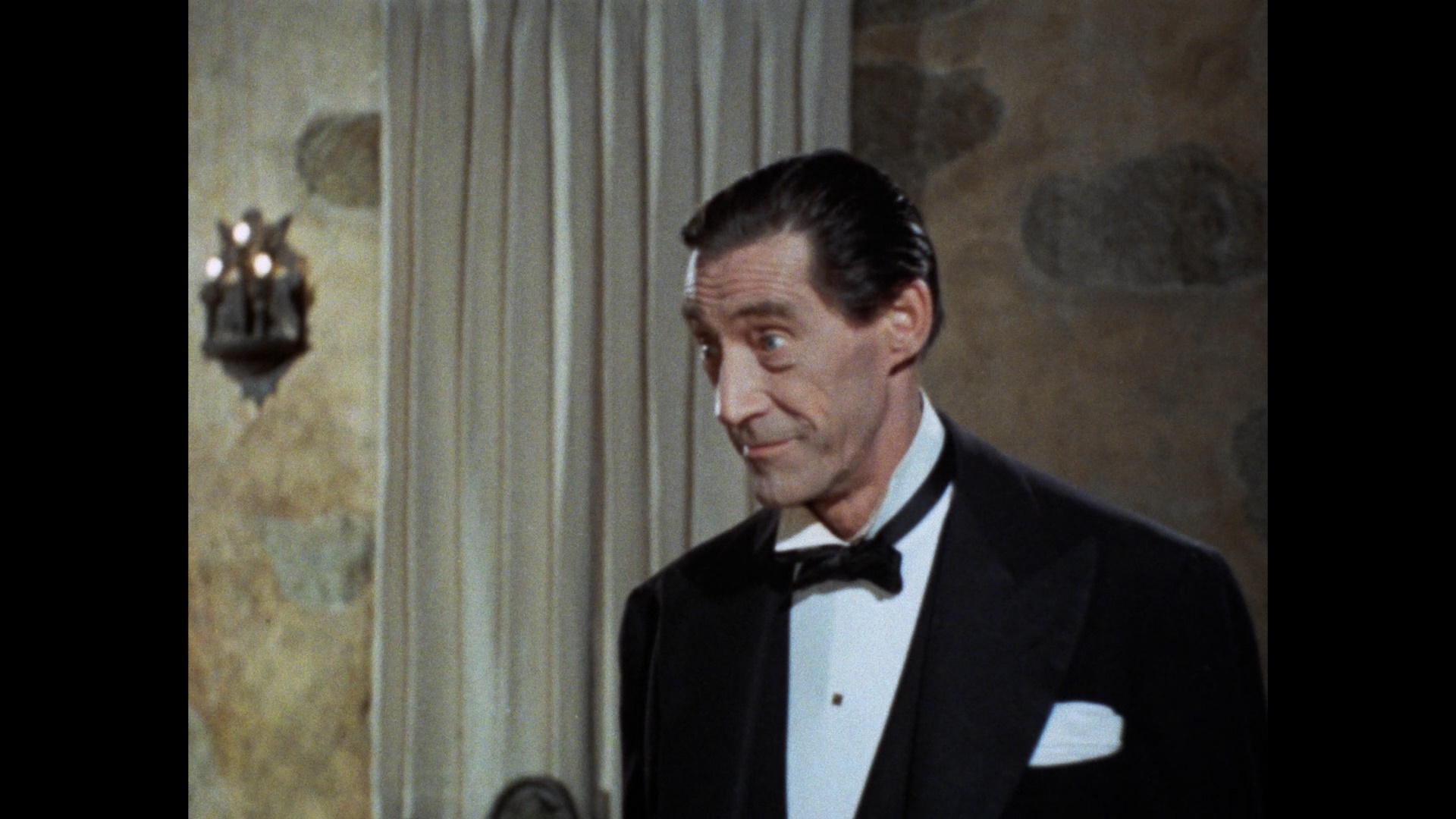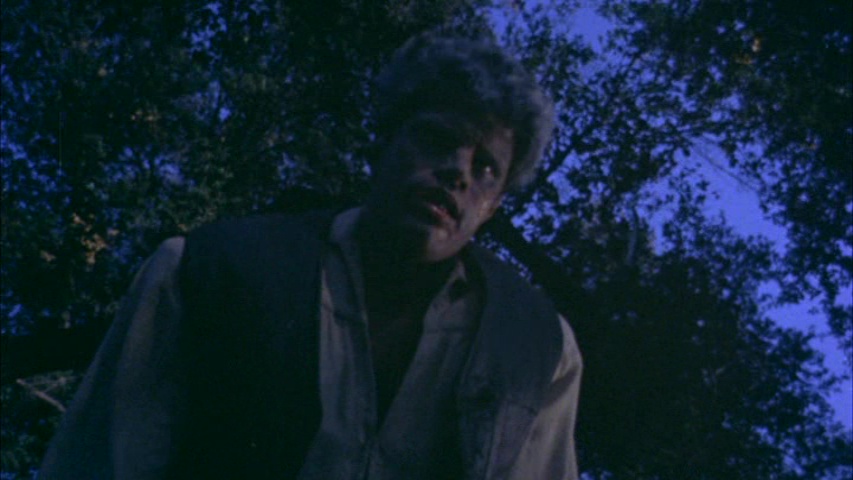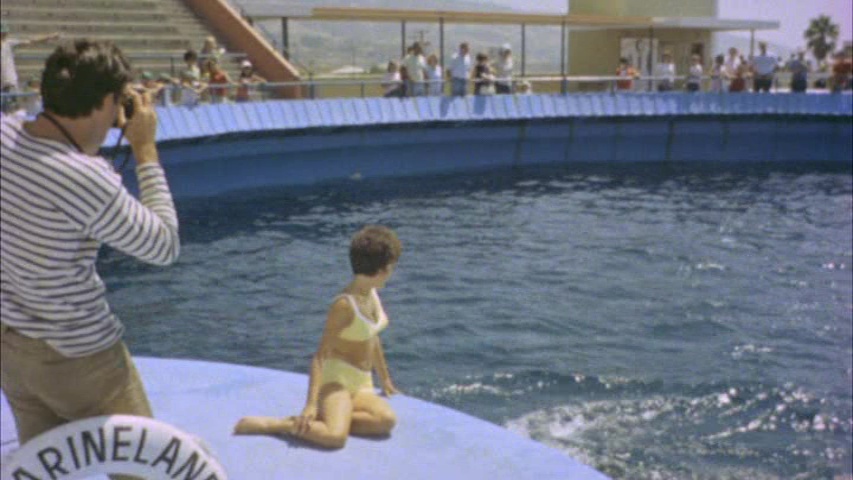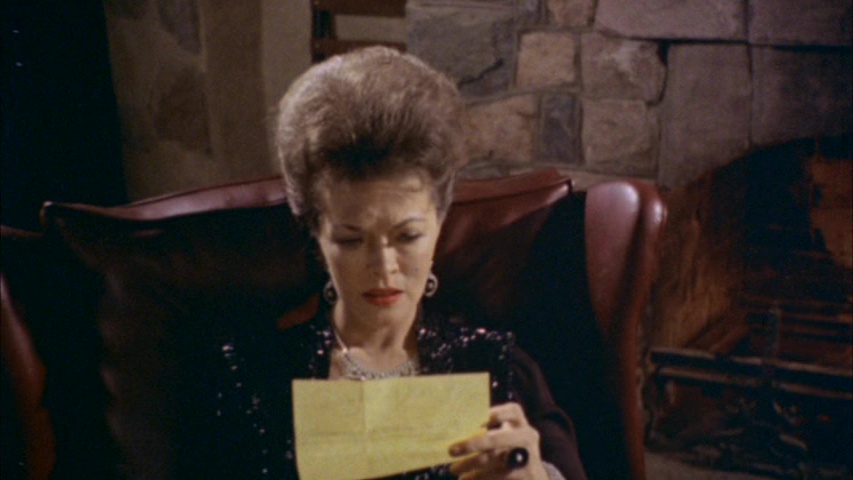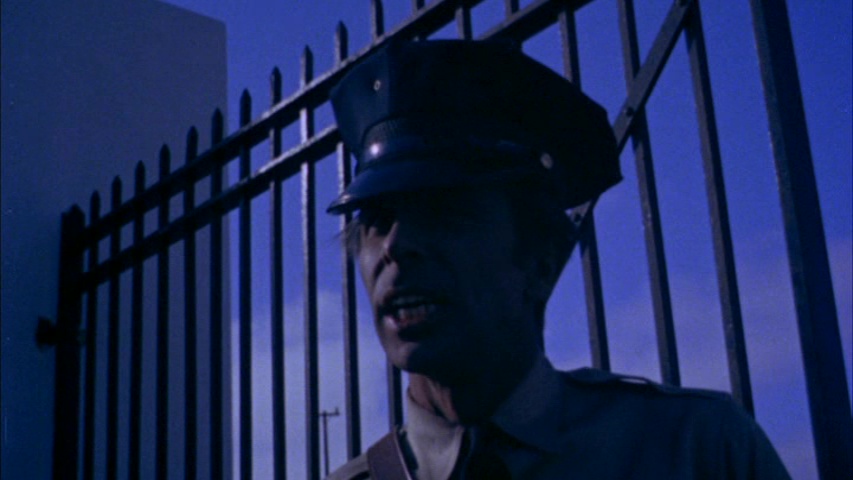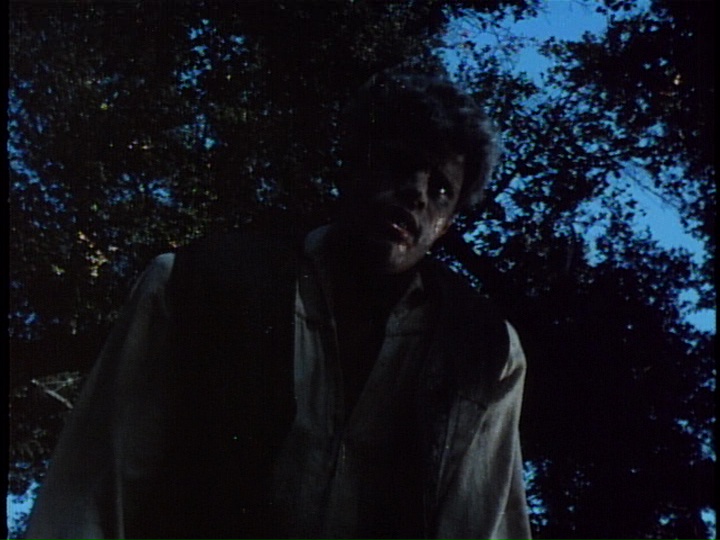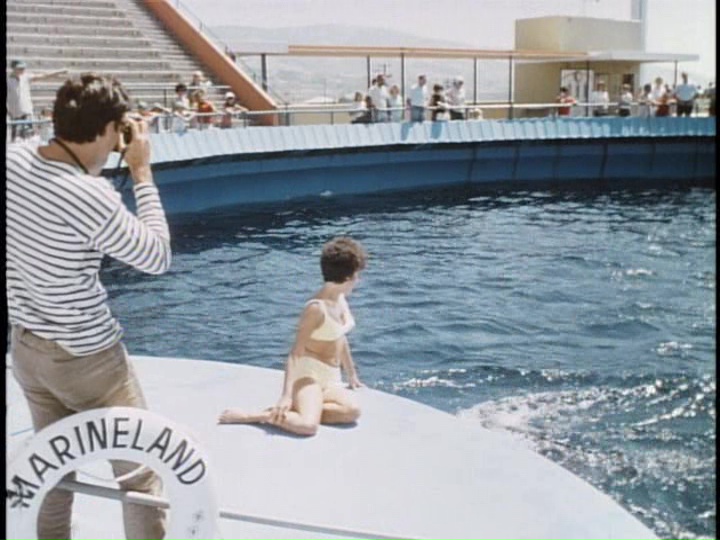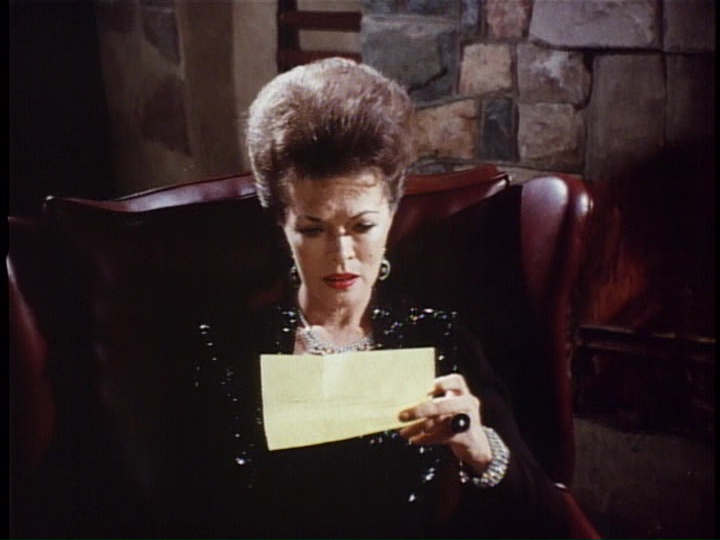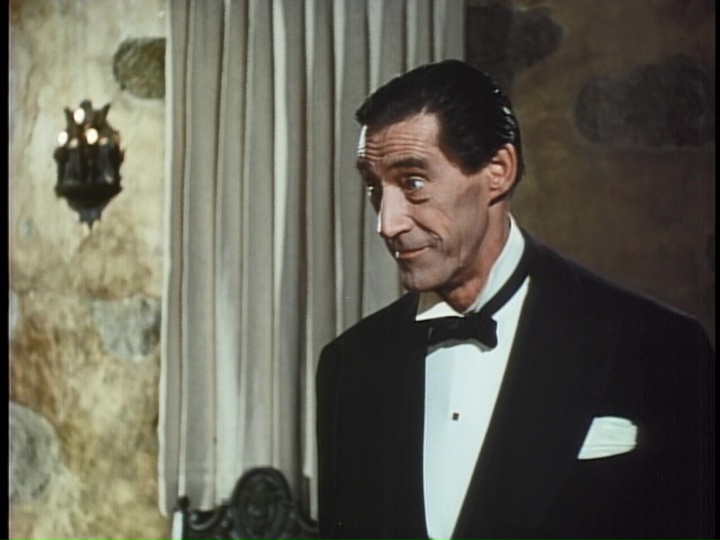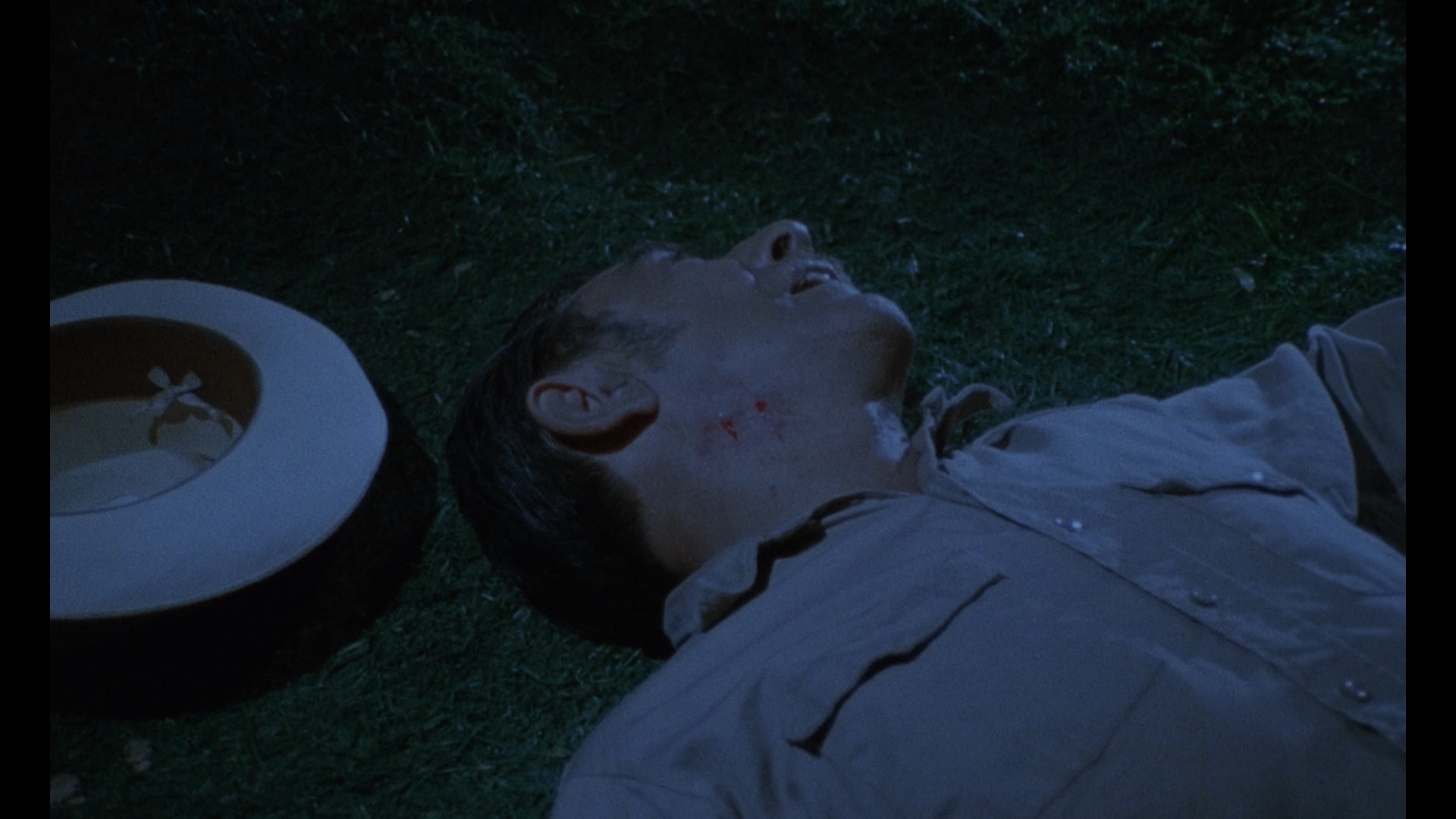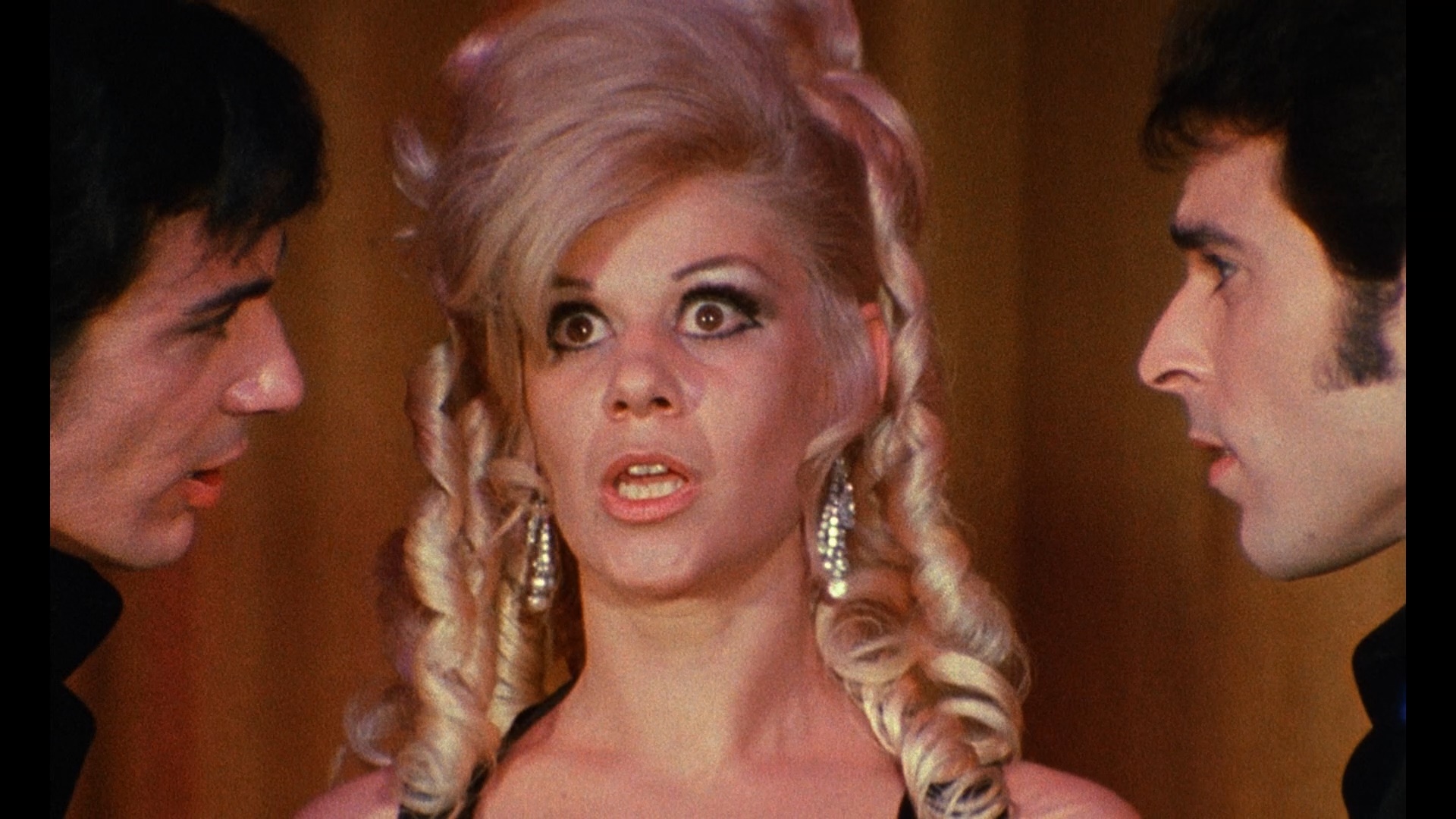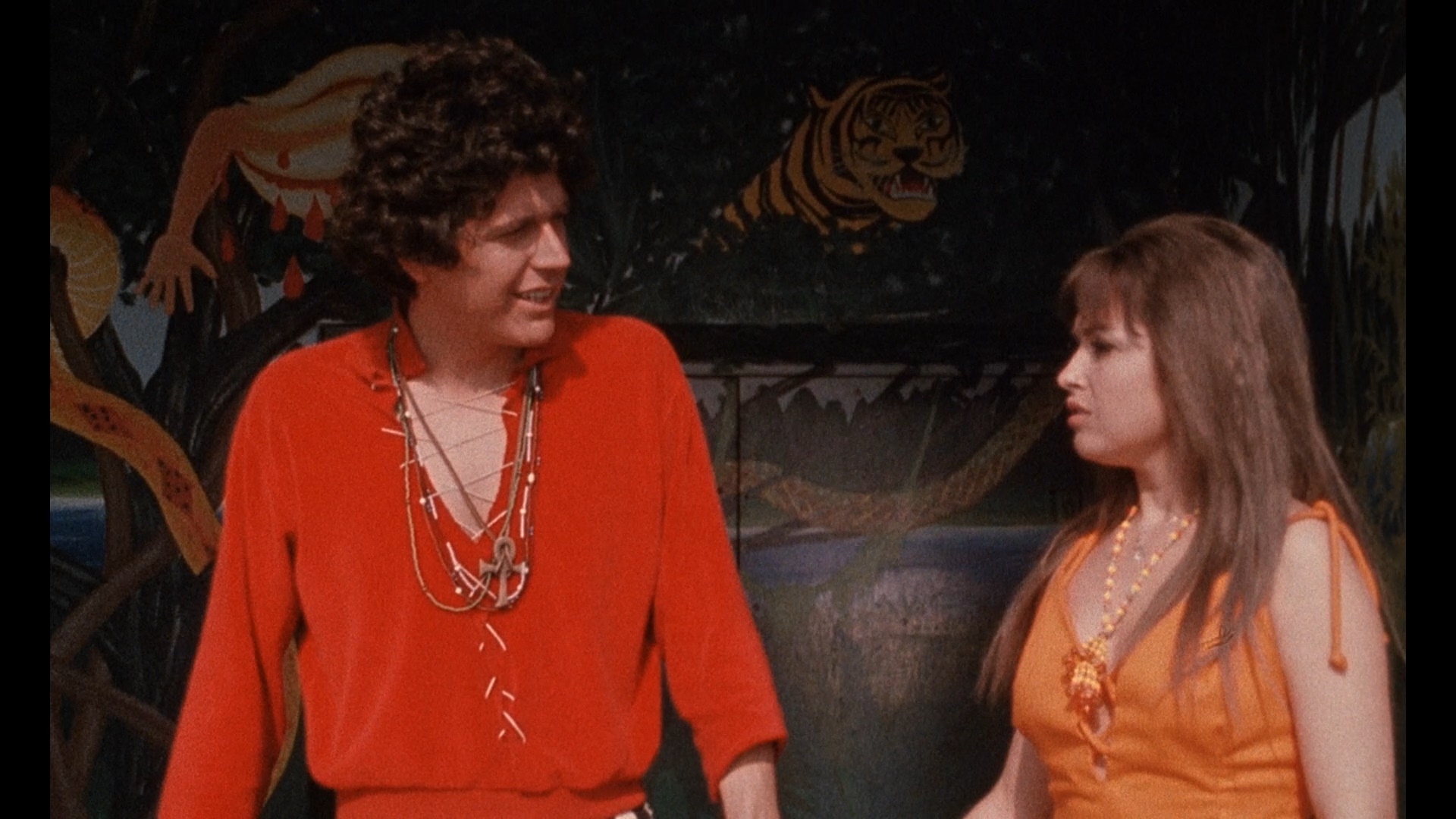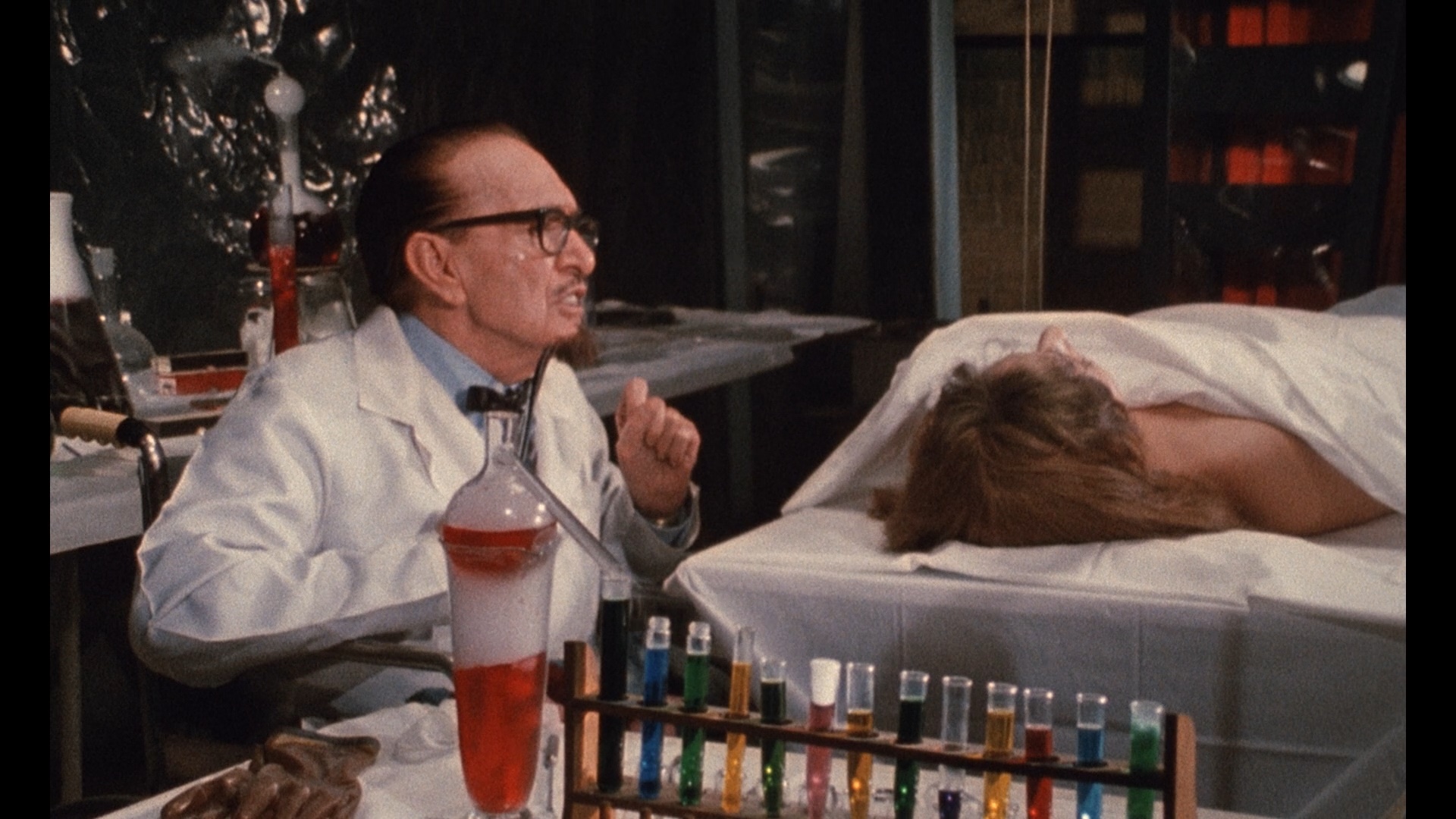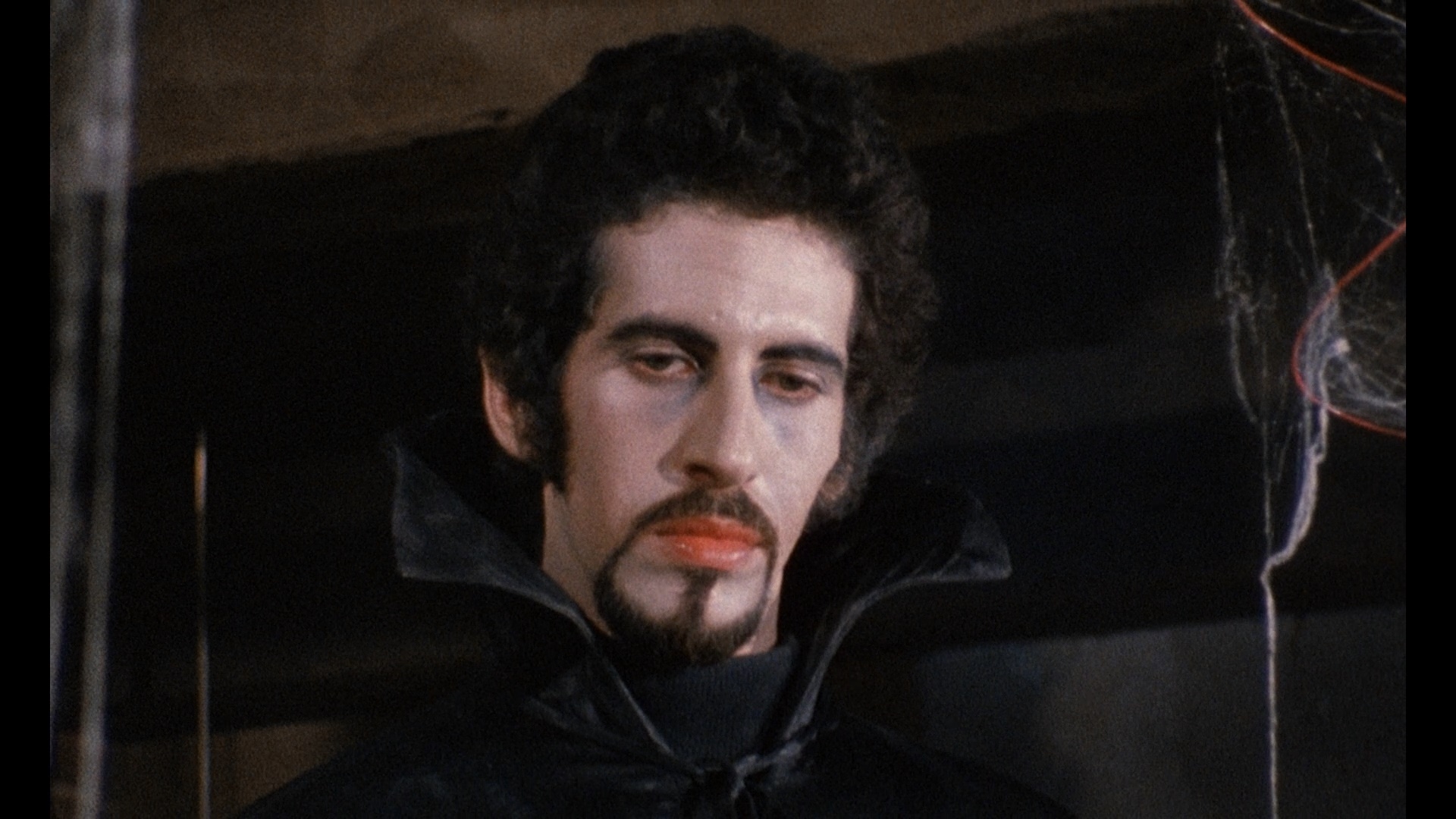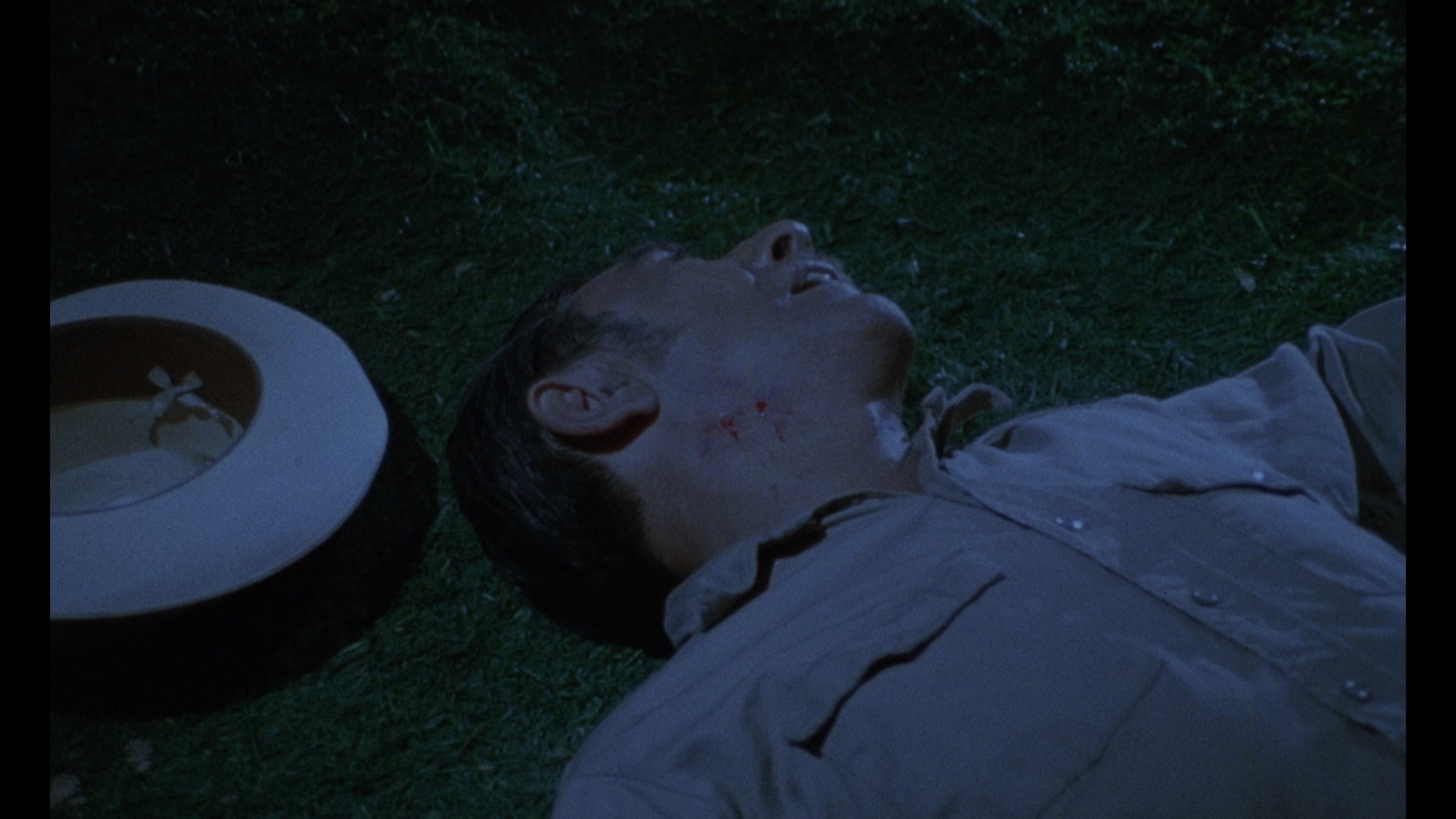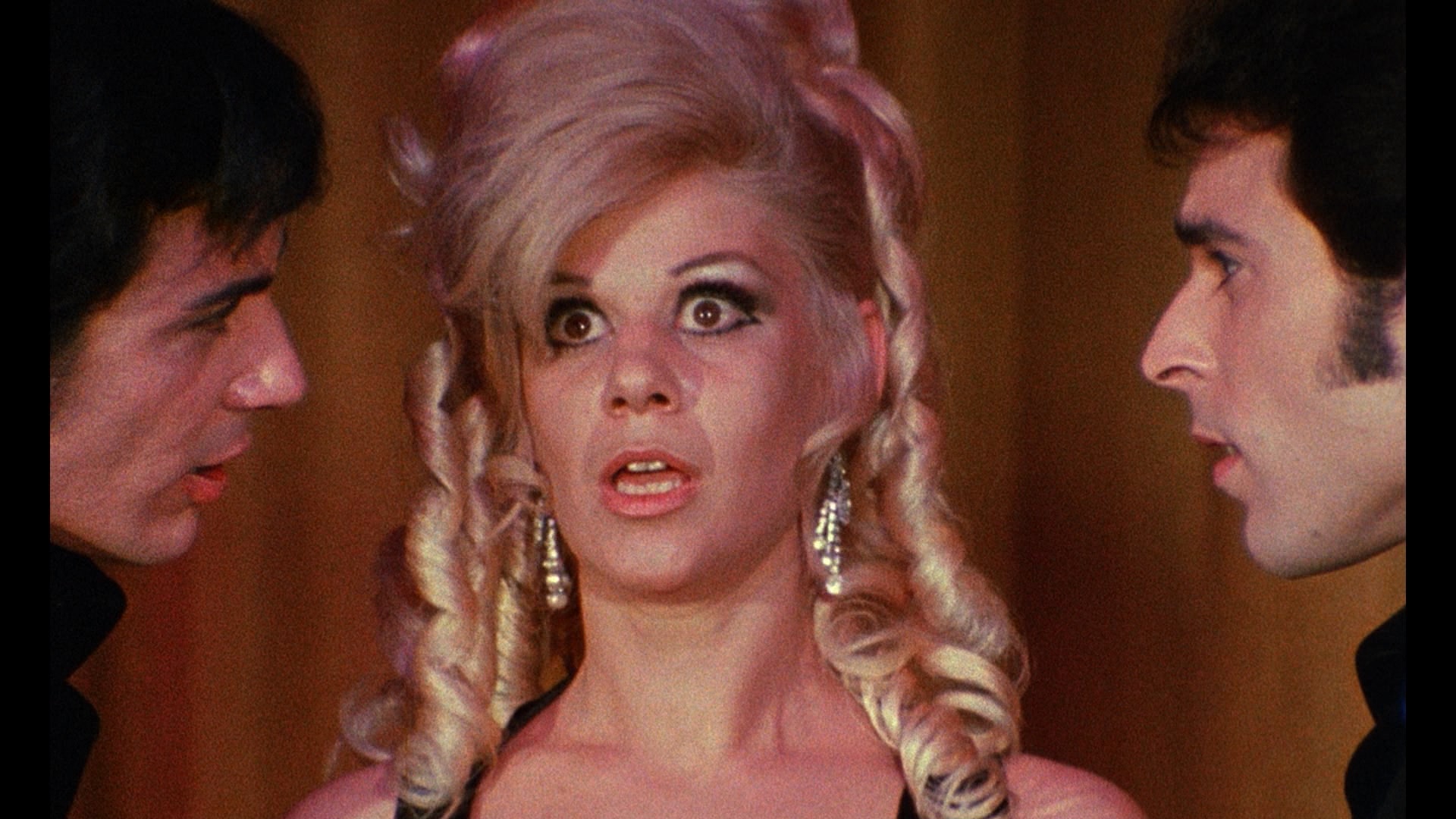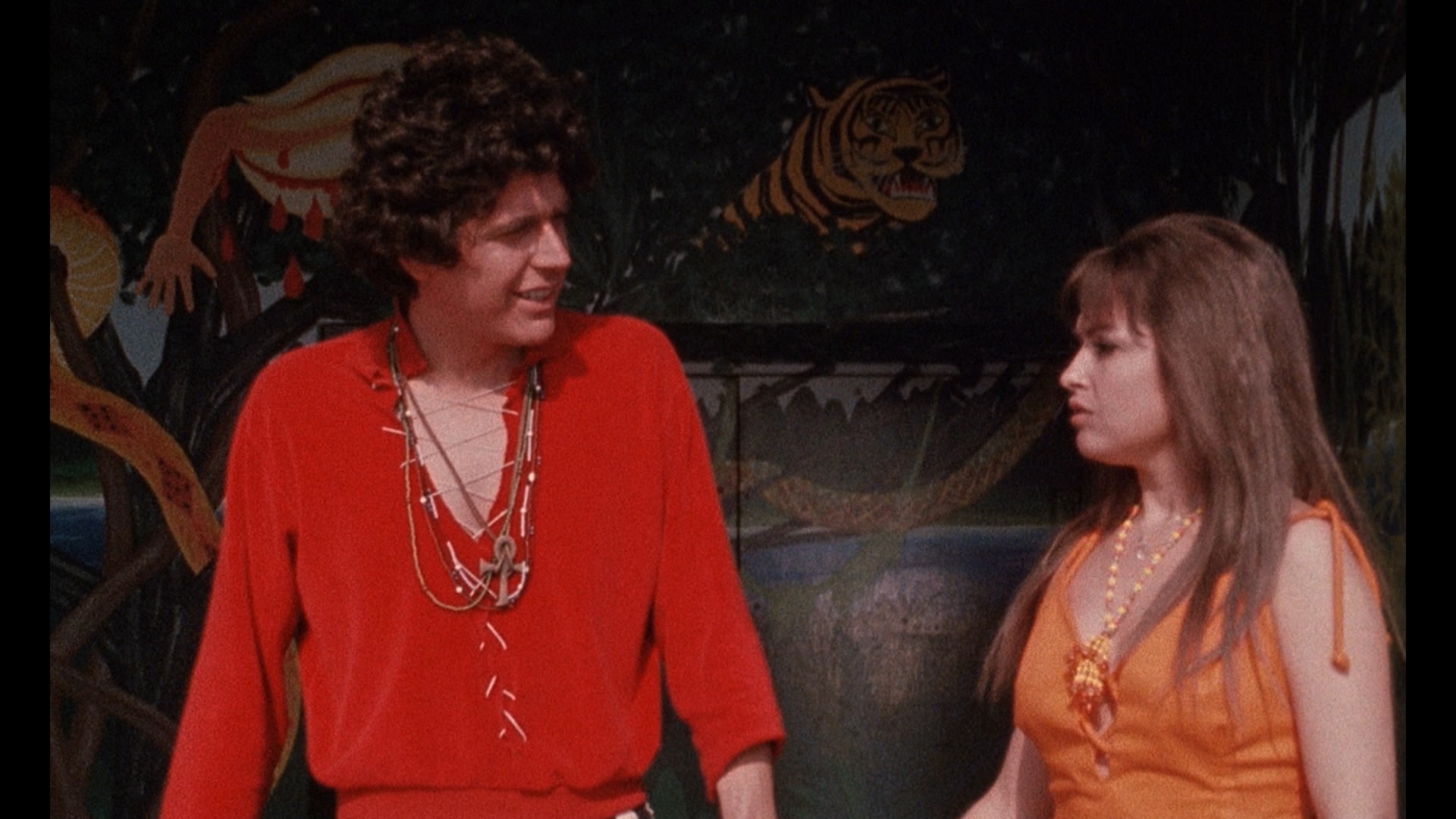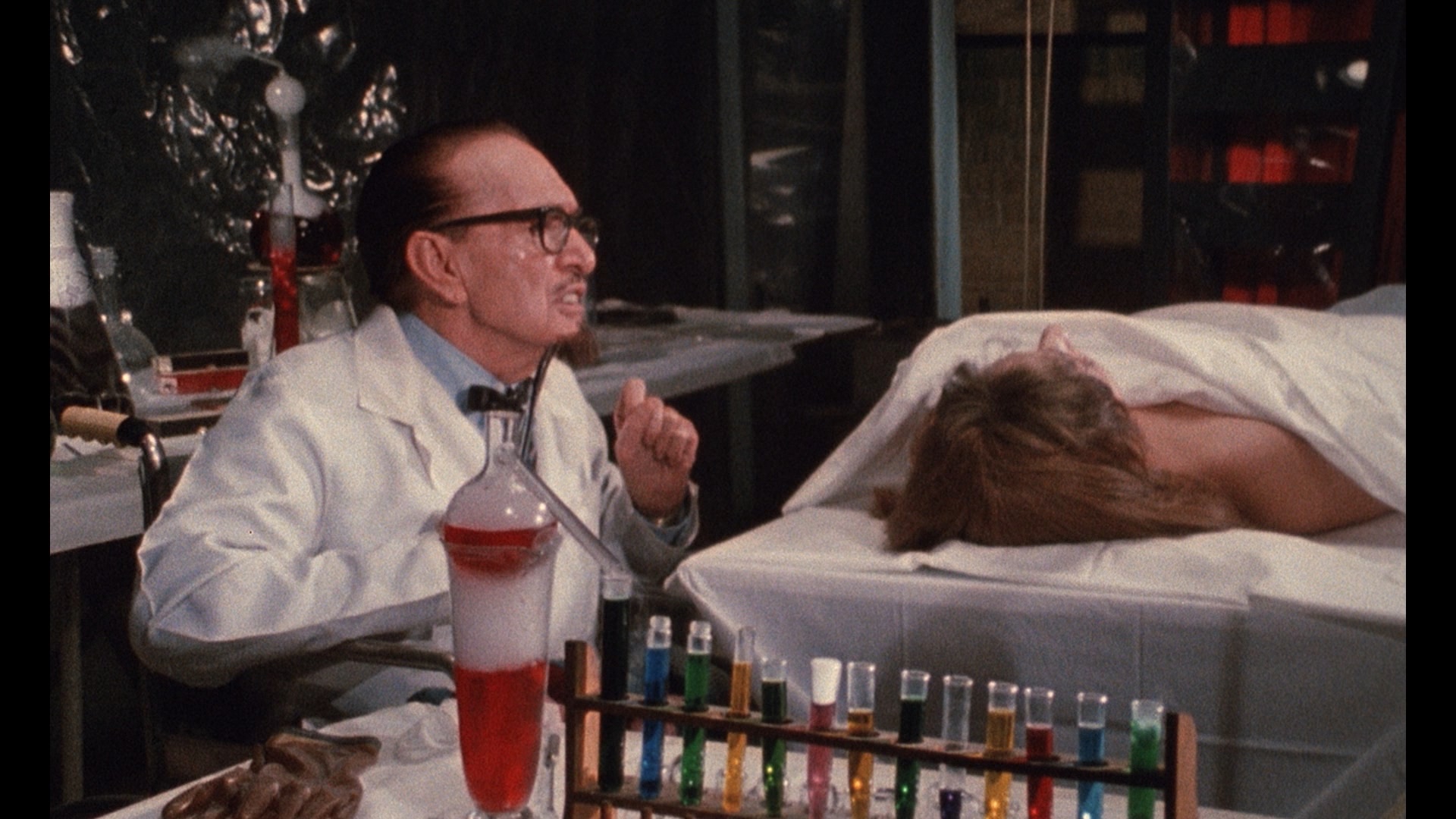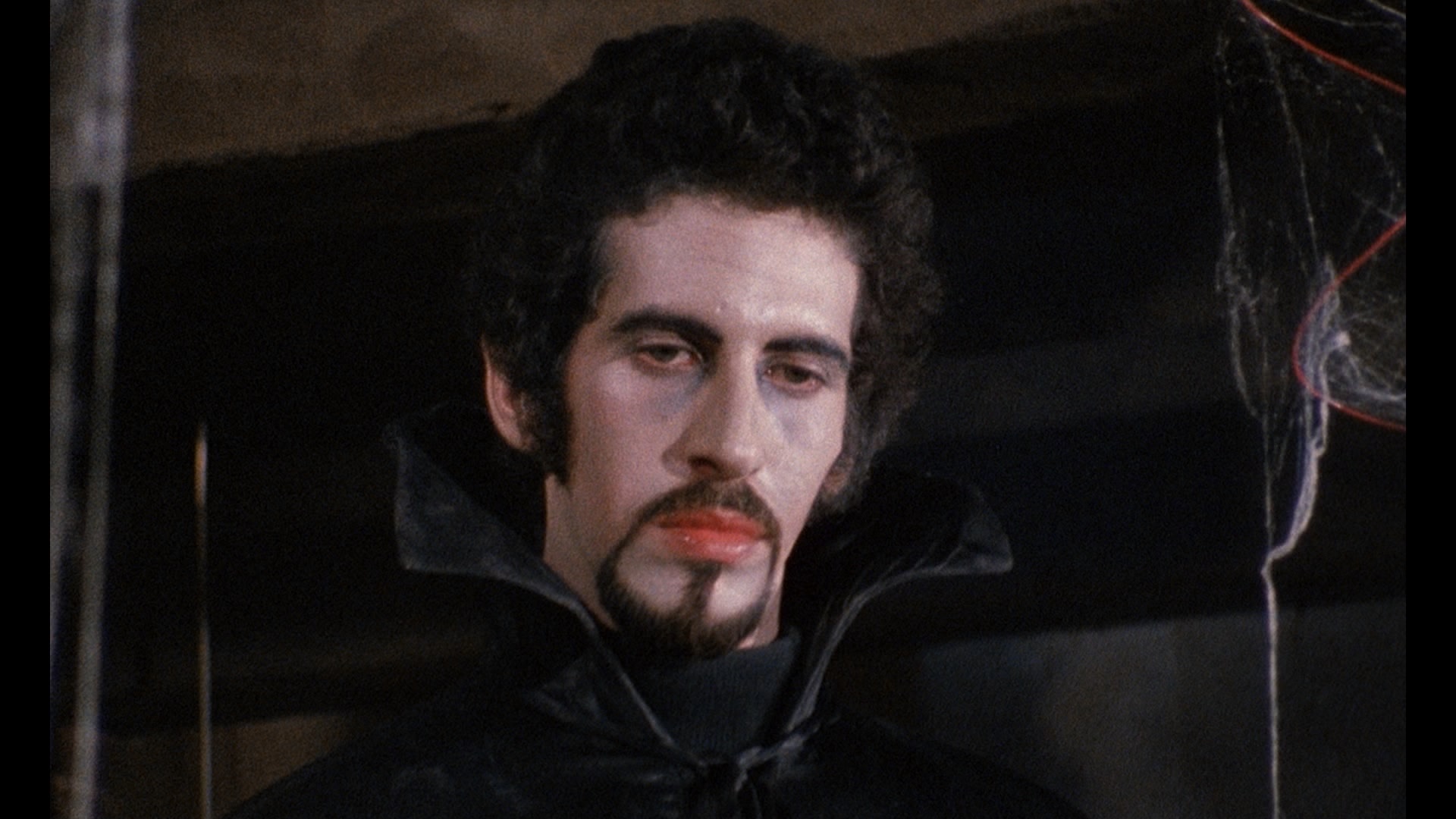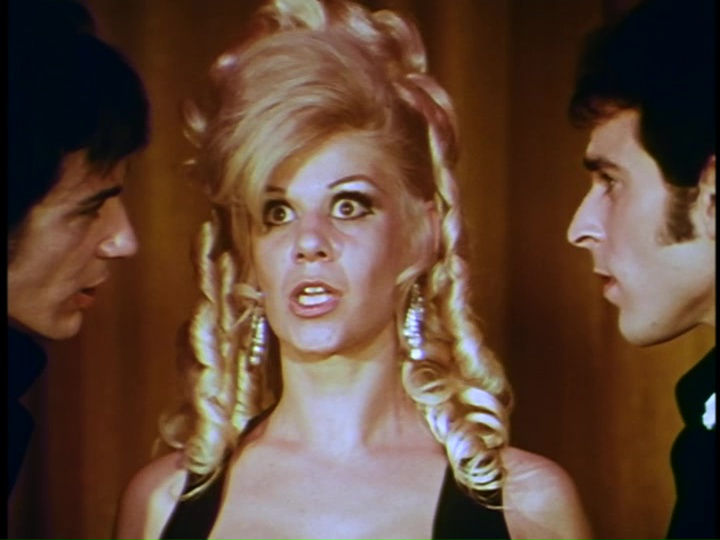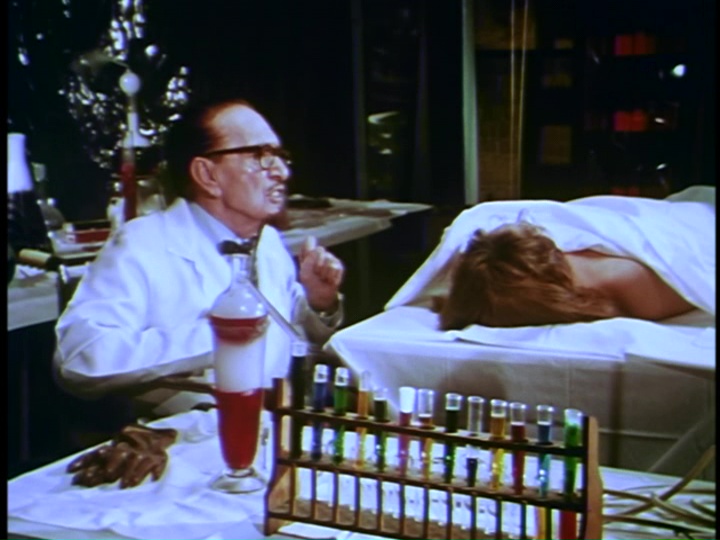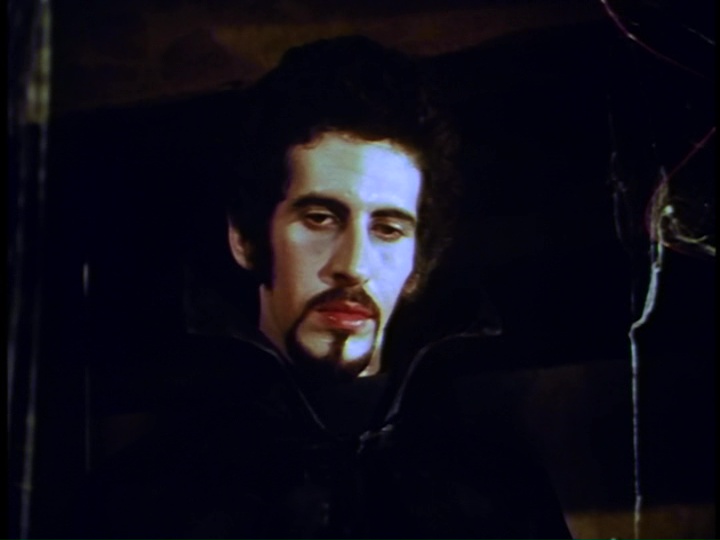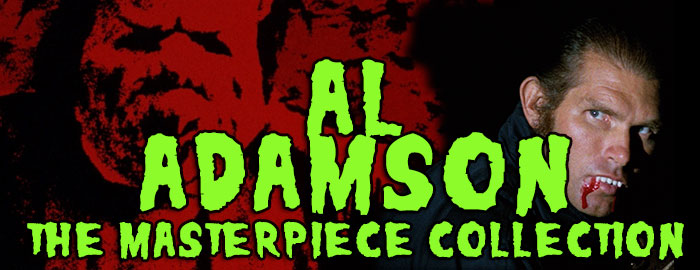
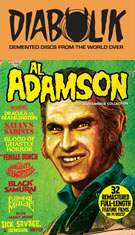
BLOOD AND FLESH: THE REEL LIFE AND GHASTLY DEATH OF AL ADAMSON
Color, 2019, 101 mins. 5 secs.
Directed by David Gregory
Severin Films (Blu-ray & DVD) (US R0 HD) / WS (1.78:1) (16:9)
THE FEMALE BUNCH
Color, 1971, 84 mins. 5 secs.
Directed by Al Adamson
Starring Lon Chaney Jr., Russ Tamblyn, Jennifer Bishop, A'lesha Lee, Geoffrey Land, Leslie McRay, Regina Carroll
Severin Films (Blu-ray) (US R0 HD), Code Red (DVD) (US R0 HD) / WS (1.85:1) (16:9)
PSYCHO A GO-GO
Color, 1964, 83 mins. 29 secs.
Directed by Al Adamson
Starring Roy Morton, Tacey Robbins, Kirk Duncan
Severin Films (Blu-ray) (US RA HD) / WS (2.35:1) (16:9)
FIEND WITH THE ELECTRONIC BRAIN
Color, 1964, 97 mins. 26 secs.
Directed by Al Adamson
Starring John Carradine, Roy Morton, Tacey Robbins, Kirk Duncan
Severin Films (Blu-ray) (US RA HD) / WS (2.35:1) (16:9)
BLOOD OF GHASTLY HORROR
Color, 1971, 85 mins. 18 secs.
Directed by Al Adamson
Starring John Carradine, Kent Taylor, Tommy Kirk, Regina Carrol
Severin Films (Blu-ray) (US RA HD) / WS (2.35:1) (16:9), Troma (DVD) (US R0 NTSC)
HALFWAY TO HELL
Color, 1960, 67 mins.
Directed by Victor Adamson & Al Adamson
Starring Lyle Felice, Caroll Montour, Sergio Virel, David Lloyd
Severin Films (Blu-ray) (US RA HD) / WS (1.78:1) (16:9)
FIVE BLOODY GRAVES
Color, 1970, 86 mins. 41 secs.
Directed by Al Adamson
Starring
Robert Dix, Scott Brady, Jim Davis, John Carradine, Paula Raymond
Severin Films (Blu-ray) (US RA HD) / WS (2.35:1) (16:9)
BLOOD OF DRACULA'S CASTLE
Color, 1969, 90 mins. 53 secs. / 83 mins. 54 secs.
Directed by Al Adamson
Starring John Carradine, Alex D'Arcy, Paula Raymond, Robert Dix, Gene O'Shane, Barbara Bishop, Vicki Volonte, Ray Young
Severin Films (Blu-ray) (US RA HD), Code Red (DVD) (US R0 NTSC) / WS (1.78:1) (16:9), Rhino (DVD) (US R1 NTSC)
HORROR OF THE BLOOD MONSTERS
Color, 1970, 85 mins.
Directed by Al Adamson
Starring John Carradine, Robert Dix, Vicki Volante, Jennifer Bishop
Severin Films (Blu-ray) (US RA HD) / WS (1.85:1) (16:9), Image Entertainment (DVD) (US R1 NTSC)
THE FAKERS
Color, 1968, 94 mins. 49 secs.
Directed by Al Adamson
Starring Broderick Crawford, John Gabriel, Scott Brady, Ken Taylor, Anne Randall, Keith Andes, John Carradine
Severin Films (Blu-ray) (US RA HD) / WS (1.85:1) (16:9)
HELL'S BLOODY DEVILS
Color, 1970, 90 mins. 11 secs.
Directed by Al Adamson
Starring Broderick Crawford, Scott Brady, Kent Taylor, Robert Dix, John Gabriel, Anne Randall, John Carradine, Jack Starrett, William Bonner
Severin Films (Blu-ray) (US RA HD) / WS (1.85:1) (16:9), Media Blasters (DVD) (US R1 NTSC)
DRACULA VS. FRANKENSTEIN
Color, 1971, 90 mins. 48 secs.
Directed by Al Adamson
Starring J. Carrol Naish, Lon Chaney Jr., Zandor Vorkov, Anthony Eisley, Regina Carrol, Russ Tamblyn, Angelo Rossitto, Greydon Clark
Severin Films (Blu-ray) (US RA HD) / WS (1.66:1) (16:9), Media Blasters (Blu-ray ) (US RA HD) / WS (1.85:1) (16:9)
BRAIN OF BLOOD
Color, 1971, 87 mins.
Directed by Al Adamson
Starring Grant Williams, Kent Taylor, John Bloom, Regina Carroll, Angelo Rossitto, Zandor Yokov
Severin Films (Blu-ray) (US RA HD) / WS (1.85:1) (16:9), Image Entertainment (DVD) (US R1 NTSC)
SATAN'S SADISTS
Color, 1969, 86 mins. 49 secs.
Directed by Al Adamson
Starring Russ Tamblyn, Scott Brady, Gary Kent, Kent Taylor, Regina Carrol, Greydon Clark
Severin Films (Blu-ray) (US RA HD), Troma (DVD) (US R0 NTSC)
ANGELS' WILD WOMEN
Color, 1971, 84 mins. 56 secs.
Directed by Al Adamson
Starring Ross Hagen, Kent Taylor, Regina Carrol, Vicki Volante, Preston Pierce
Severin Films (Blu-ray) (US RA HD) / WS (1.85:1) (16:9), Troma (DVD) (US R0 NTSC)
THE NAUGHTY STEWARDESSES
Color, 1974, 109 mins. 15 secs.
Directed by Al Adamson
Starring Robert Livingston, Connie Hoffman, Richard Smedley, Donna Desmond, Tracy King, Sydney Jordan
Severin Films (Blu-ray) (US RA HD) / WS (1.85:1) (16:9)
BLAZING STEWARDESSES
Color, 1975, 98 mins. 2 secs.
Directed by Al Adamson
Starring Yvonne De Carlo, Bob Livingston, Don "Red" Barry, Geoffrey Land, Connie Hoffman, Regina Carrol, T.A. King, The Ritz Brothers
Severin Films (Blu-ray) (US RA HD) / WS (1.85:1) (16:9)
GIRLS FOR RENT
Color, 1974, 91 mins. 9 secs.
Directed by Al Adamson
Starring Georgina Spelvin, Susie Ewing, Rosalind Miles, Preston Pierce, Kent Taylor, Robert Livingston
Severin Films (Blu-ray) (US RA HD) / WS (1.85:1) (16:9)
JESSI'S GIRLS
Color, 1975, 83 mins. 53 secs.
Directed by Al Adamson
Starring Sondra Currie, Geoffrey Land, Ben Frank, Regina Carrol, Jennifer Bishop
Severin Films (Blu-ray) (US RA HD) / WS (1.85:1) (16:9)
NURSES FOR SALE
Color, 1975, 66 mins. 53 secs.
Directed by Al Adamson
Starring Curd Jürgens, Heinz Reincke, Johanna von Koczian
Severin Films (Blu-ray) (US RA HD) / WS (1.85:1) (16:9)
BLACK HEAT
Color, 1976, 94 mins. 24 secs.
Directed by Al Adamson
Starring Timothy Brown, Russ Tamblyn, Jana Bellan, Geoffrey Land, Regina Carrol
Severin Films (Blu-ray) (US RA HD) / WS (1.85:1) (16:9), Shock-o-Rama (DVD (US R1 NTSC)
THE DYNAMITE BROTHERS
Color, 1974, 90 mins. 1 sec.
Directed by Al Adamson
Starring Timothy Brown, Alan Tang, Aldo Ray, James Hong, Carol Speed
Severin Films (Blu-ray) (US RA HD) / WS (1.85:1) (16:9), BCI/Eclipse (DVD) (US R1 NTSC)
MEAN MOTHER
Color, 1972, 87 mins. 8 secs.
Directed by Al Adamson
Starring Clifton Brown, Dennis Safren, Luciana Paluzzi, Lang Jeffries, Marilyn Joi
Severin Films (Blu-ray) (US RA HD) / WS (1.85:1) (16:9), EI (DVD) (US R1 NTSC)
UNCLE TOM'S CABIN
Color, 1976, 98 mins. 12 secs.
Directed by Al Adamson
Starring John Kitzmiller, Herbert Lom, Olive Moorefield, Mary Ann Jenson, Prentiss Mouldon, Marilyn Joi
Severin Films (Blu-ray) (US RA HD) / WS (2.35:1) (16:9)
BLACK SAMURAI
Color, 1976, 84 mins. 7 secs.
Directed by Al Adamson
Starring Jim Kelly, Bill Roy, Roberto Contreras, Marilyn Joi, Biff Yeager
Severin Films (Blu-ray) (US RA HD) / WS (1.85:1) (16:9)
DEATH DIMENSION
Color, 1978, 87 mins. 35 secs.
Directed by Al Adamson
Starring
Jim Kelly, Harold Sakata, George Lazenby, Terry Moore, Aldo Ray
Severin Films (Blu-ray) (US RA HD) / WS (1.85:1) (16:9)
SUNSET COVE
Color, 1977, 87 mins. 21 secs.
Directed by Al Adamson
Starring Jay B. Larson, Nathaniel Burr Smidt, Ray Andrews, John Carradine, John Durren
Severin Films (Blu-ray) (US RA HD) / WS (1.85:1) (16:9)
CINDERELLA 2000
Color, 1977, 103 mins. 25 secs.
Directed by Al Adamson
Starring Catharine Burgess, Jay B. Larson, Vaughn Armstrong, Erwin Fuller, Renee Harmon, Bhurni Cowans, Adina Ross
Severin Films (Blu-ray) (US RA HD) / WS (2.35:1) (16:9), Retro-Seduction Cinema (DVD) (US R1 NTSC)
NURSE SHERRI
Color, 1971, 84 mins. 20 secs.
Directed by Al Adamson
Starring Jill Jacobson, Geoffrey Land, Marilyn Joi, Mary Kay Pass, Prentiss Mouldon, Bill Roy
Severin Films (Blu-ray) (US RA HD), Vinegar Syndrome (Blu-ray & DVD) (US R0 HD/NTSC) / WS (1.85:1) (16:9)
CARNIVAL MAGIC
Color, 1983, 85 mins. 53 secs.
Directed by Al Adamson
Starring Don Stewart, Reginal Carrol, Jennifer Houlton, Howard Segal, Joe Cirillo, Mark Weston
Severin Films (Blu-ray) (US R0 HD), Film Chest (Blu-ray) (US RA HD) / WS (1.85:1) (16:9)
LOST
Color, 1983, 92 mins. 4 secs.
Directed by Al Adamson
Starring Sandra Dee, Don Stewart, Gary Kent, Jack Elam, Sheila Newhouse
Severin Films (Blu-ray) (US R0 HD)
Few 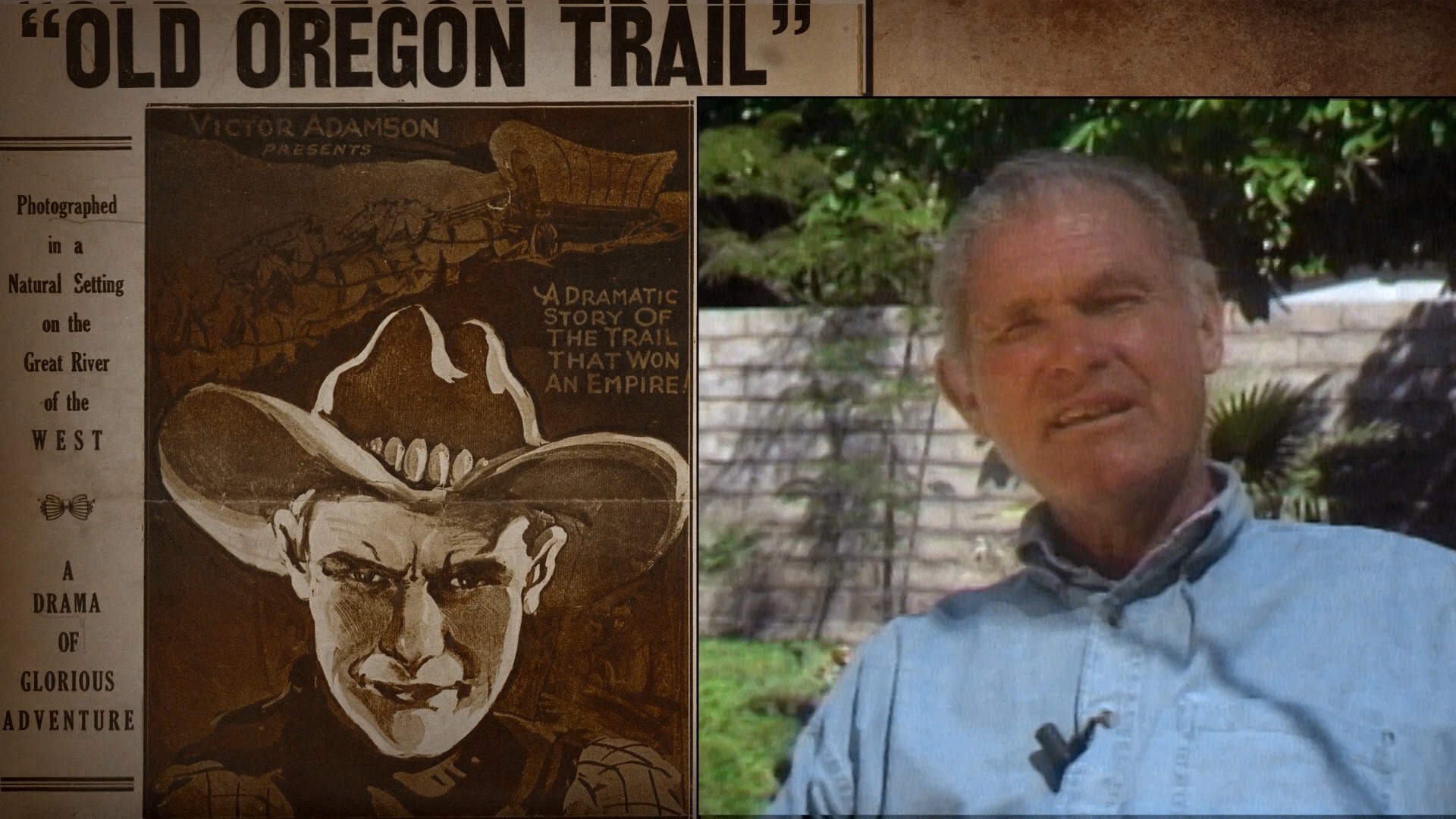 filmmakers inspire
filmmakers inspire 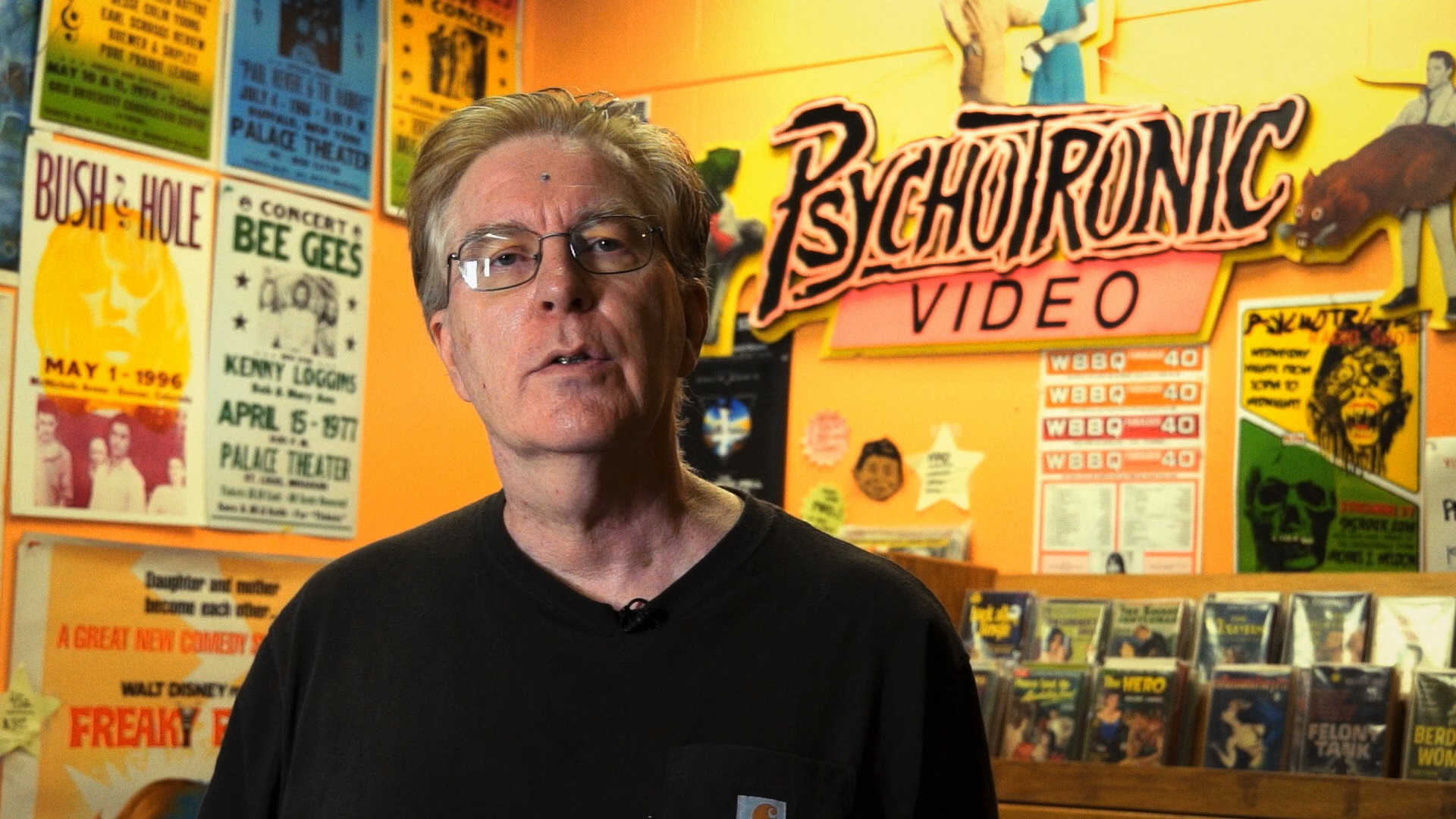 a stronger visceral reaction among horror and exploitation fans than Al Adamson, a scrappy independent filmmaker who built up a repertory of familiar actors as he bounced around from cheapie monster movies to biker movies to indescribable oddities that defy classification. Often working with Independent International's Sam Sherman, Adamson became a familiar name on the drive-in circuit-- albeit often as a warning of sorts for many along with other money-deprived DIY maestros like Andy Milligan, Ray Dennis Steckler, and Ted V. Mikels. By the time he retired from filmmaking in the mid-'80s, he'd left behind a colorful legacy with titles like Dracula vs. Frankenstein, Satan's Sadists, Horror of the Blood Monsters, Nurse Sherri, Carnival Magic, Blazing Stewardesses, Blood of Dracula's Castle, and Black Samurai. Along the way he offered regular employment for actors like his wife Regina Carroll, Lon Chaney Jr., Russ Tamblyn, and Gary Kent, with fleeting but indelible opportunities also given to dozens of Hollywood hopefuls. However, his story didn't end there; in 1995, Adamson vanished from his home in Indio, California, with authorities soon discovering that he'd been murdered at his house by a contractor and buried under a freshly built pool. The grisly homicide made the news at the time and served as a bizarre end to a life and career that was truly stranger than fiction. Now all of his available credited work and a standout new documentary have all been compiled together by Severin Films in the 32-film Blu-ray set, Al Adamson: The Masterpiece Collection, which was also offered in the quickly depleted Bundle of Ghastly Horror and Bundle a Go Go sets.
a stronger visceral reaction among horror and exploitation fans than Al Adamson, a scrappy independent filmmaker who built up a repertory of familiar actors as he bounced around from cheapie monster movies to biker movies to indescribable oddities that defy classification. Often working with Independent International's Sam Sherman, Adamson became a familiar name on the drive-in circuit-- albeit often as a warning of sorts for many along with other money-deprived DIY maestros like Andy Milligan, Ray Dennis Steckler, and Ted V. Mikels. By the time he retired from filmmaking in the mid-'80s, he'd left behind a colorful legacy with titles like Dracula vs. Frankenstein, Satan's Sadists, Horror of the Blood Monsters, Nurse Sherri, Carnival Magic, Blazing Stewardesses, Blood of Dracula's Castle, and Black Samurai. Along the way he offered regular employment for actors like his wife Regina Carroll, Lon Chaney Jr., Russ Tamblyn, and Gary Kent, with fleeting but indelible opportunities also given to dozens of Hollywood hopefuls. However, his story didn't end there; in 1995, Adamson vanished from his home in Indio, California, with authorities soon discovering that he'd been murdered at his house by a contractor and buried under a freshly built pool. The grisly homicide made the news at the time and served as a bizarre end to a life and career that was truly stranger than fiction. Now all of his available credited work and a standout new documentary have all been compiled together by Severin Films in the 32-film Blu-ray set, Al Adamson: The Masterpiece Collection, which was also offered in the quickly depleted Bundle of Ghastly Horror and Bundle a Go Go sets.
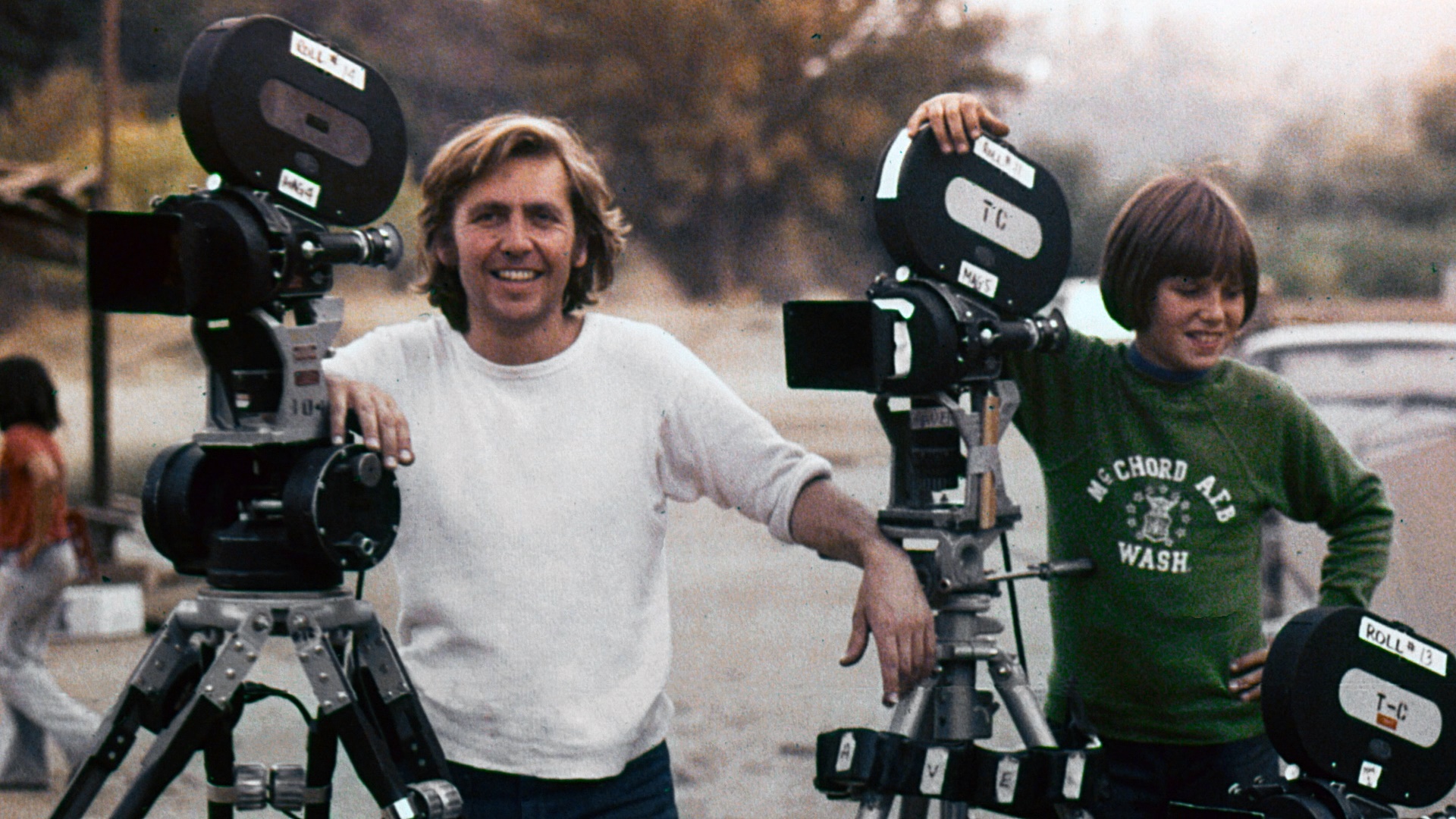 In 2019, Severin's David Gregory and friends embarked on a documentary about Adamson from the genesis of his filmmaking career through his untimely end; the result, Blood and Flesh:
In 2019, Severin's David Gregory and friends embarked on a documentary about Adamson from the genesis of his filmmaking career through his untimely end; the result, Blood and Flesh: 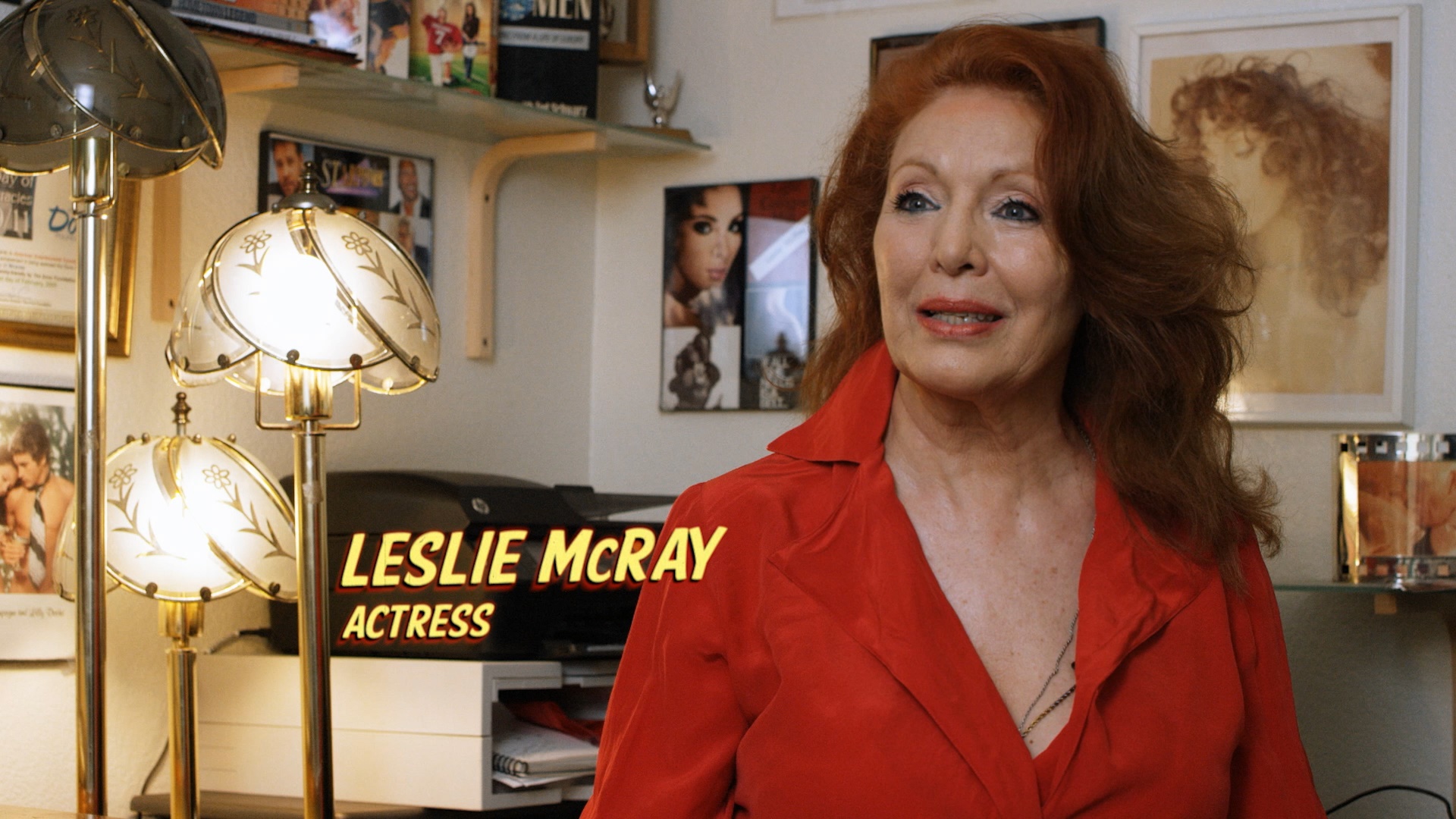 The Reel Life and Ghastly Death of Al Adamson, is a compelling and frequently jaw-dropping that ranks up there with the best feature-length studies of offbeat cinema auteurs like Herschell Gordon Lewis: The Godfather of Gore, King Cohen, and Gregory's earlier Lost Soul: The Doomed Journey of Richard Stanley's Island of Dr. Moreau.
The Reel Life and Ghastly Death of Al Adamson, is a compelling and frequently jaw-dropping that ranks up there with the best feature-length studies of offbeat cinema auteurs like Herschell Gordon Lewis: The Godfather of Gore, King Cohen, and Gregory's earlier Lost Soul: The Doomed Journey of Richard Stanley's Island of Dr. Moreau.
Told more or less chronologically, the doc is guaranteed to increase your appreciation of the dedication and idiosyncratic gusto that can be found in Adamson's output-- even if it meant augmenting a Z-grade black-and-white monster cheapie with new scenes and vibrant color tints to get it out in theaters as Horror of the Blood Monsters. The first hour or so is dedicated entirely to his film career including oddities like the spy saga The Fakers (which was outdated by the time it was set to open and got overhauled into the biker film Hell's Bloody Devils) and his copious films for Sherman. You also get to learn quite a bit about his early romance with Vicki Volante that went by the wayside when he fell for and married Carroll, who remained his muse until her death from lung cancer. Then things take an 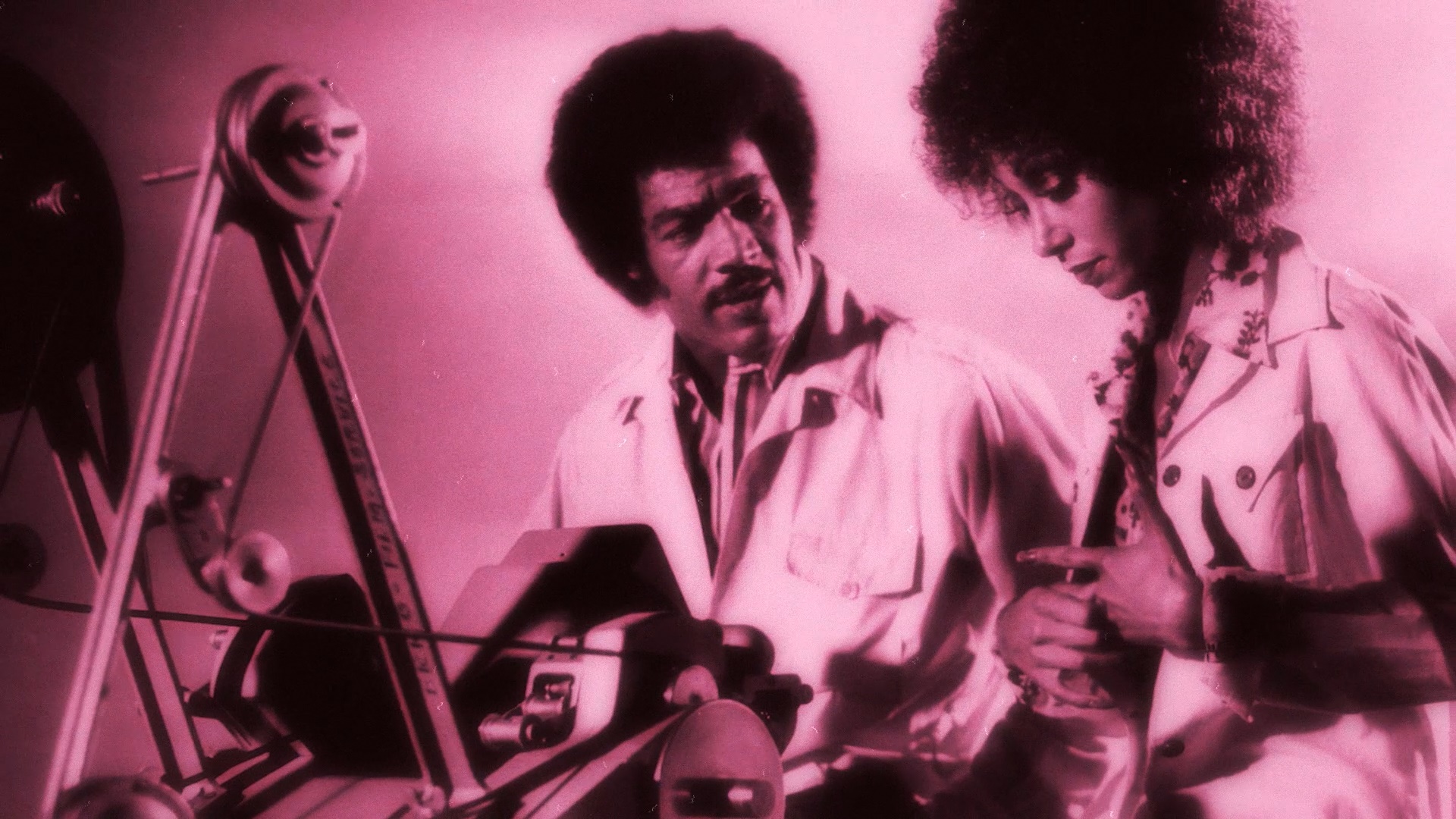 even wilder turn in the third act as we get into his other pursuits including an extended, dizzying detour into UFO conspiracy theories and his attempt to bring it to the public, as well as his
even wilder turn in the third act as we get into his other pursuits including an extended, dizzying detour into UFO conspiracy theories and his attempt to bring it to the public, as well as his 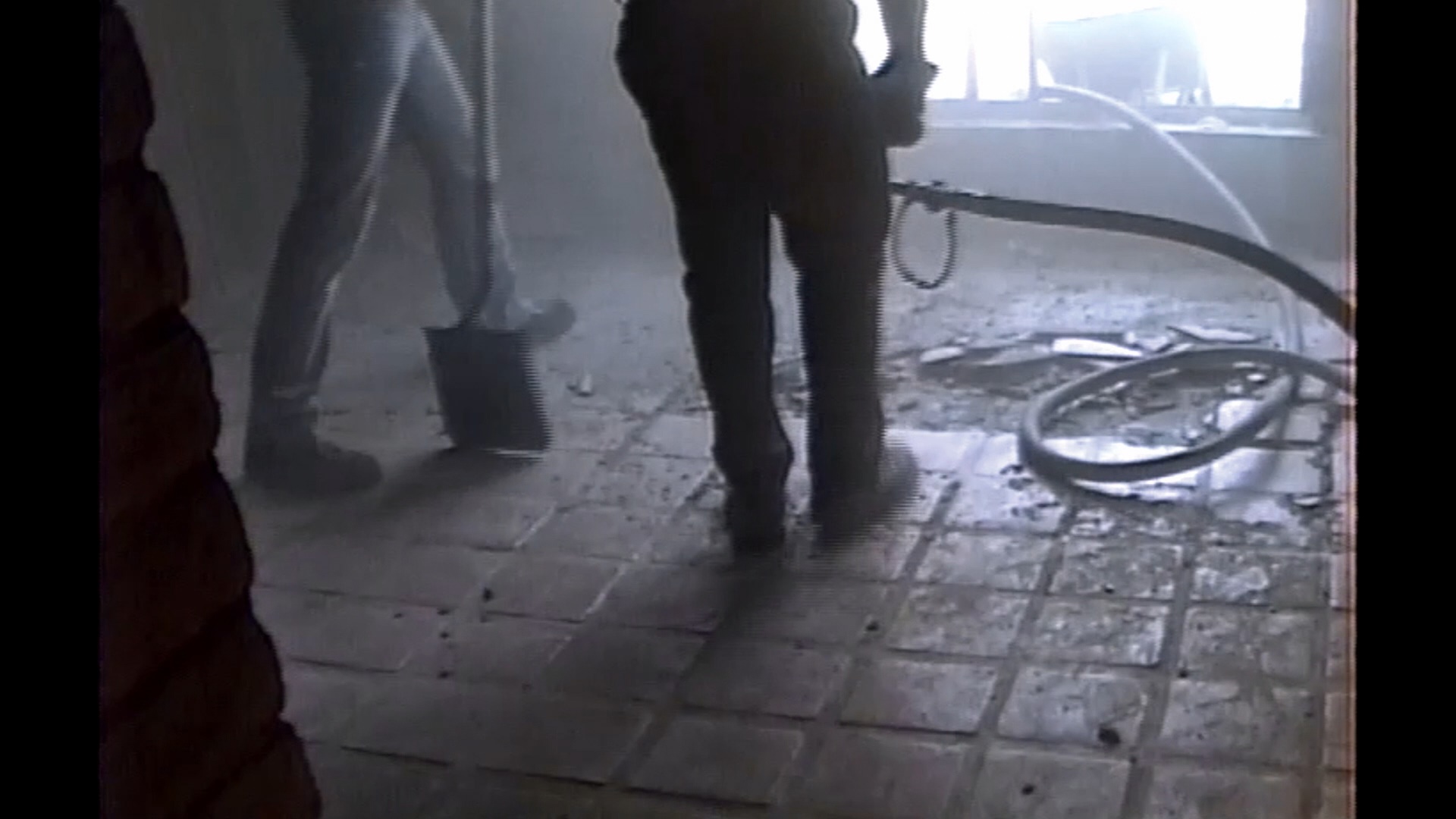 other commercial enterprises. Of course, there's also an extended, in-depth look at the circumstances behind his death with many of the key players involved provided the definitive account of how he came to such a tragic and undeserved end. The whole thing is studded with plenty of archival Adamson footage (mostly from his last interview) along with new chats with a huge number of participants including Sam Sherman, Russ Tamblyn, Vilmos Zsigmond, Zandor Vorkov, John "Bud" Cardos (who seemed to wear at least a dozen hats on Adamson productions), Fred Olen Ray, Marilyn Joi, Greydon Clark, Gary Kent, Leslie McRay, Chris Poggiali, and more.
other commercial enterprises. Of course, there's also an extended, in-depth look at the circumstances behind his death with many of the key players involved provided the definitive account of how he came to such a tragic and undeserved end. The whole thing is studded with plenty of archival Adamson footage (mostly from his last interview) along with new chats with a huge number of participants including Sam Sherman, Russ Tamblyn, Vilmos Zsigmond, Zandor Vorkov, John "Bud" Cardos (who seemed to wear at least a dozen hats on Adamson productions), Fred Olen Ray, Marilyn Joi, Greydon Clark, Gary Kent, Leslie McRay, Chris Poggiali, and more.
Befitting its status as the exploitation-themed doc to beat this year, the film has been rolled out from Severin in a number of different options including its status as the first disc in the Adamson box as well as a standalone Blu-ray and a DVD. Image quality is pristine as you'd expect for a recent production shot digitally, though of course some of the archival footage (especially the news coverage at the very beginning bumped up from SD) has inherent issues due to the format and time period. Audio options are available 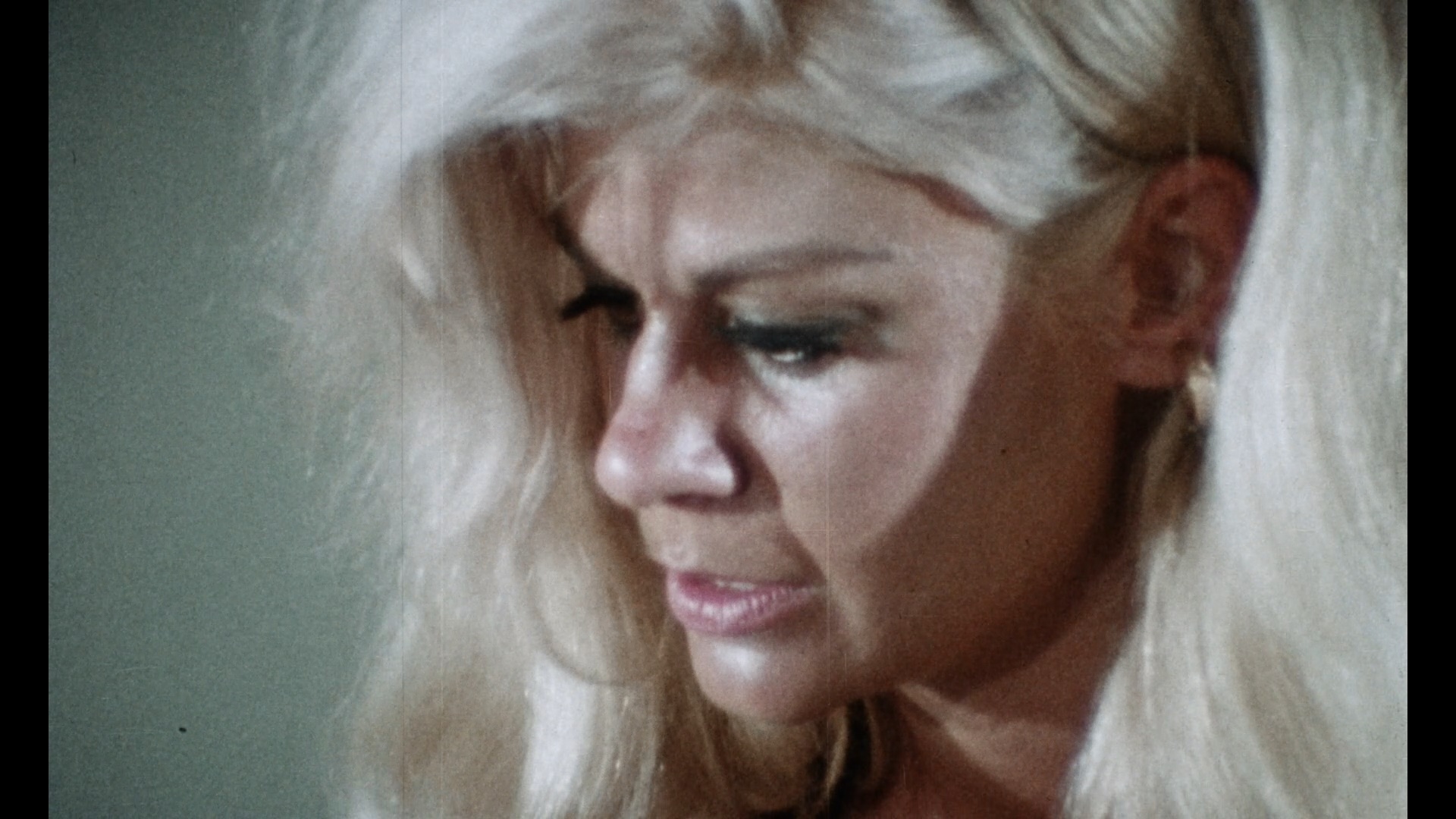 in DTS-HD English 5.1 and 2.0 (both of which sound solid given that most of the
in DTS-HD English 5.1 and 2.0 (both of which sound solid given that most of the 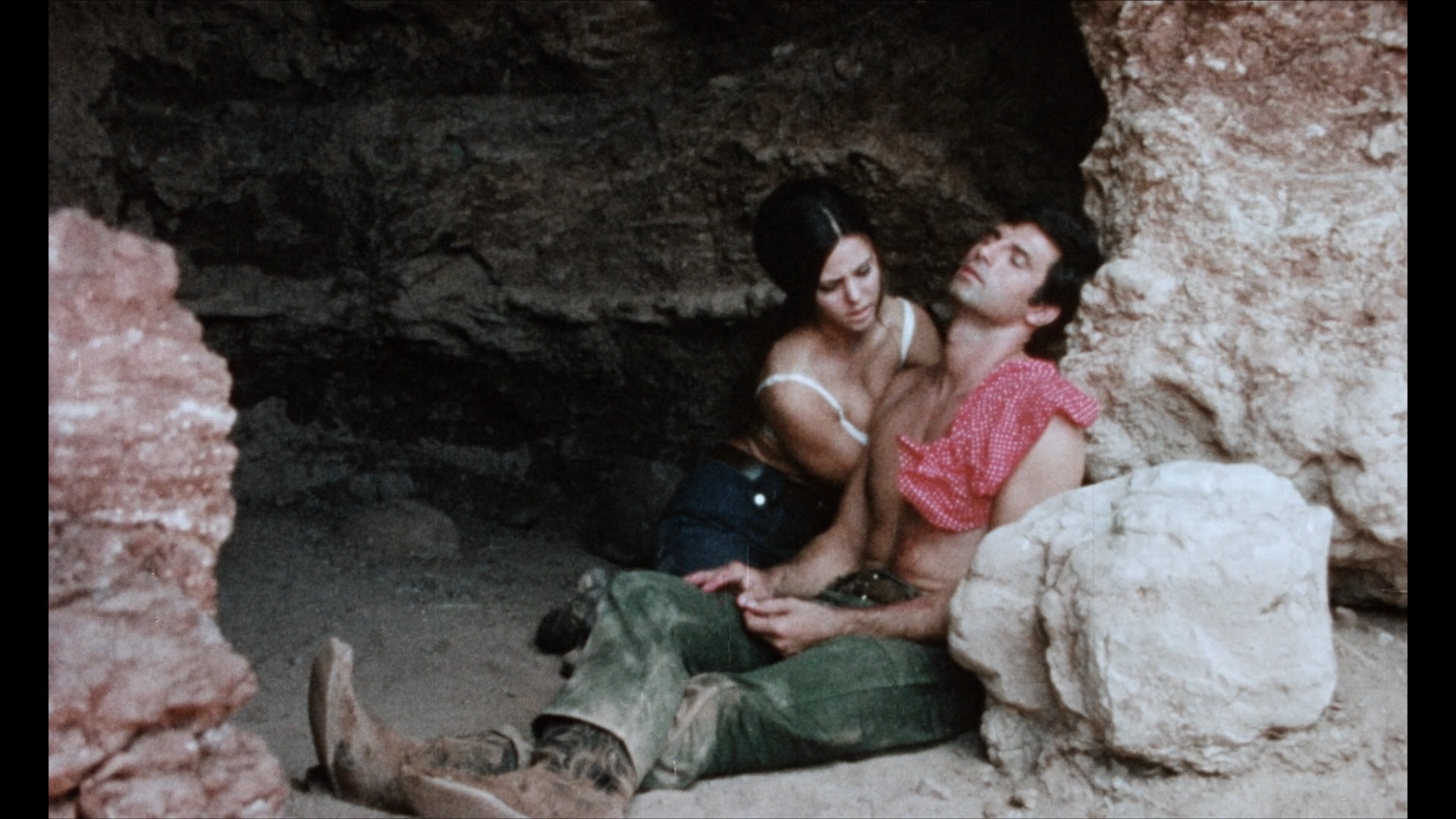 channel separation involves the lively music score) with optional subtitles in English, Spanish, French, and Portuguese. A reel of outtakes (20m10s) is an amalgam of bonus interview footage (mostly with Sherman but also featuring Clark, Kent, and a funny storage unit visit with Tamblyn), followed by a promo reel for the incomplete Beyond This Earth alien research project (3m9s), a trailer, and a poster gallery.
channel separation involves the lively music score) with optional subtitles in English, Spanish, French, and Portuguese. A reel of outtakes (20m10s) is an amalgam of bonus interview footage (mostly with Sherman but also featuring Clark, Kent, and a funny storage unit visit with Tamblyn), followed by a promo reel for the incomplete Beyond This Earth alien research project (3m9s), a trailer, and a poster gallery.
Also included on the same disc is the Adamson bad girl epic The Female Bunch from 1971, culled from the best surviving film material. Made at the height of Adamson's productivity, it's one of a string of films (along with the apparently extinct Lash of Lust) partially shot at the infamous Spahn Ranch while it was being occupied by the Manson Family. In this case the Manson parallels are a little spooky as the story revolves around Sandy (Nesa Renet), a struggling waitress who becomes involved in a desert female gang who get their kicks by using men and smuggling drugs over the border. Mostly though it's an excuse to spend time hanging out with the bizarre cast including a scene-stealing Jennifer Bishop as leader Grace, a very pitiful-looking Lon Chaney Jr., Russ Tamblyn in a glorified cameo, a very underused Regina Carroll, and the debut appearance of drive-in staple 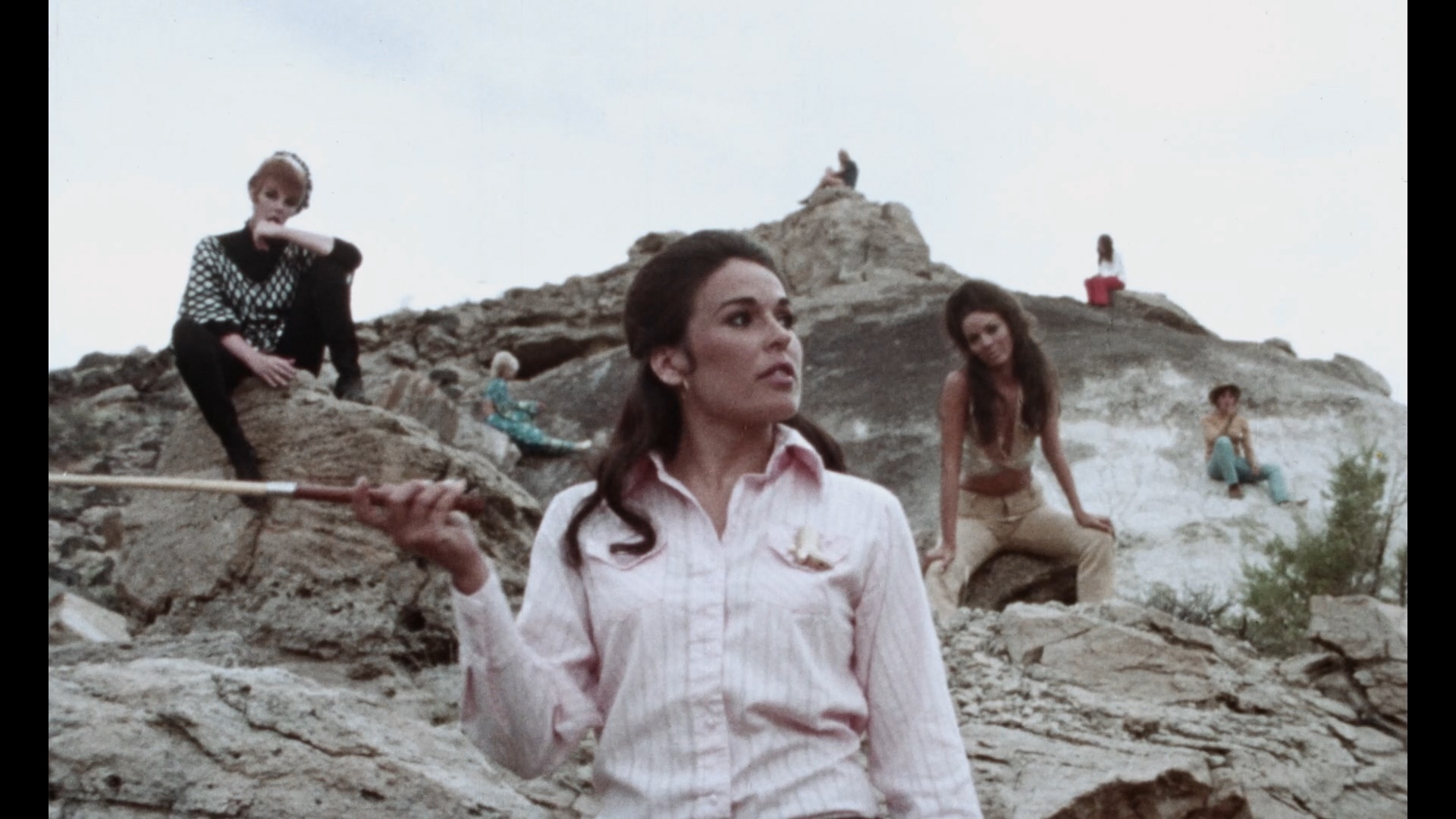 Geoffrey Land.
Geoffrey Land. 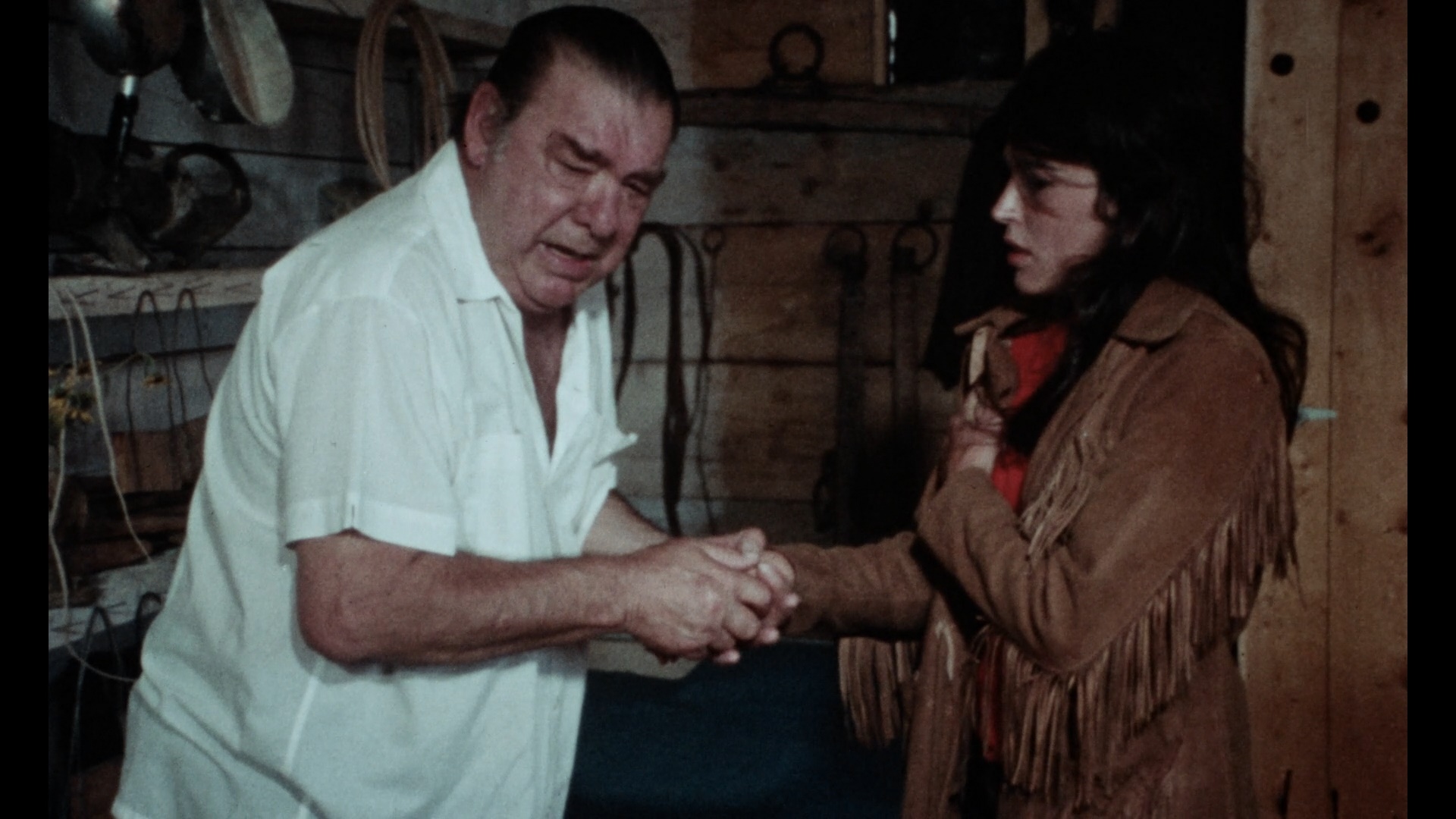
An opening disclaimer notes that the best portions of the existing prints were used to assemble this transfer, which is apparently as good as it's ever going to get since the original negative is long gone. It's pretty erratic and scratchy at the beginning but settles down after a few minutes and looks pretty solid if mostly faded throughout. Due to those element issues, some footage that existed back in the VHS days was irretrievable now but is presented as an extended scenes reel (2m2s); consisting of Lon Chaney Jr. swilling booze and slightly extended footage of the nude shower scene, a dark sex scene, and some more fire at the end. Using the interview sessions from the main doc, "The Bunch Speaks Out" (15m26s) hones in on this particular film with McRay (who kicks it off talking about her surprise appearance as the key art for A Lizard in a Woman's Skin), Tamblyn, and Sharyn Winters leading the chat about the film (originally entitled A Time to Run) and their warm memories of working with Adamson. Two theatrical trailers are also included to let you know how this film is "turning women's lib into a menacing reality!"
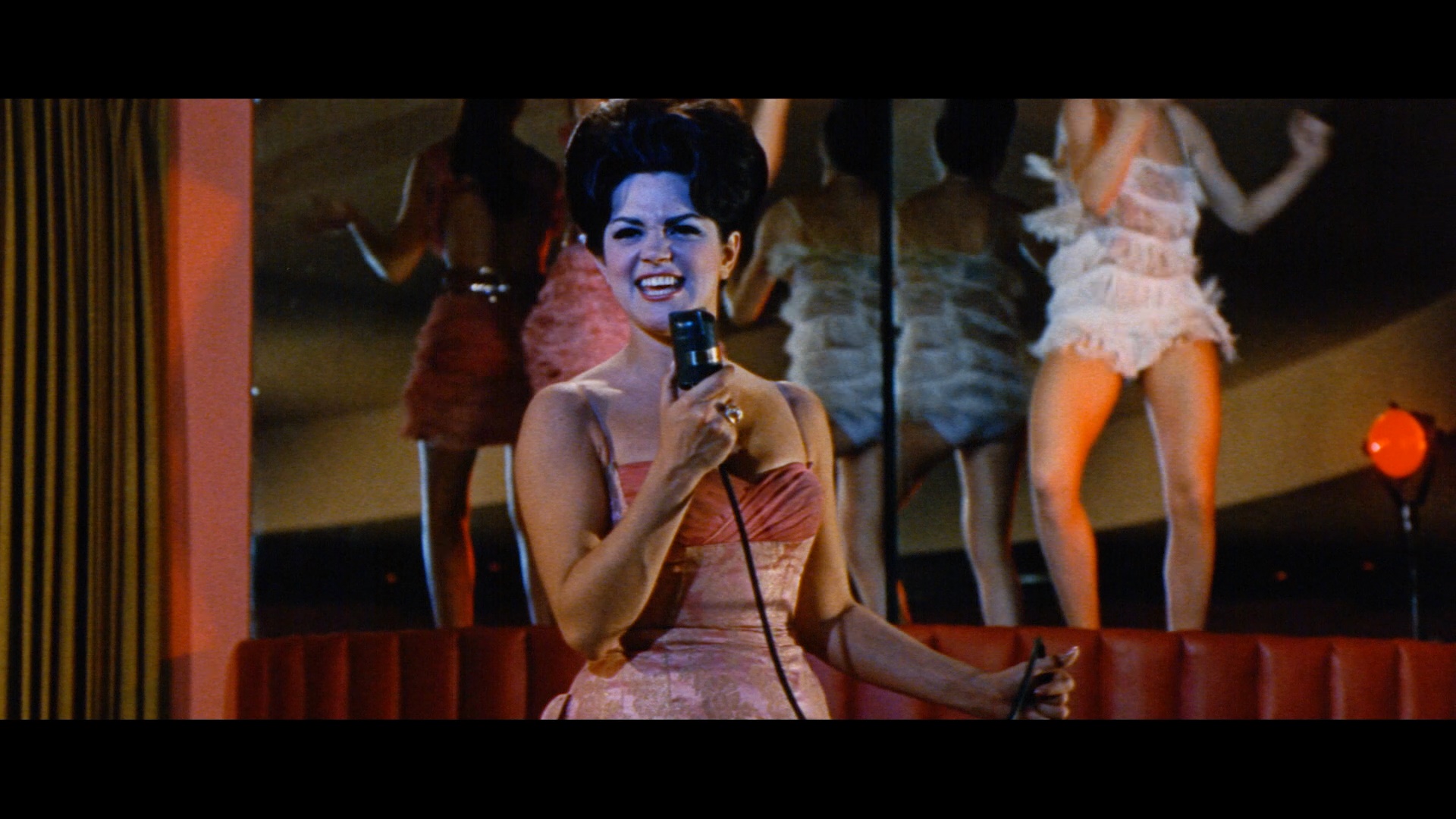 Disc two i
Disc two i s as good a representation as any of the confusion that plagues Adamson's career with multiple versions and reworked footage muddying the waters of so many of his directorial credits. Three films are included here starting with Adamson's first proper directing credit, 1964's Psycho a Go-Go. Anyone used to his rougher later efforts might be shocked here to find a proficient little slice of groovy '60s fun shot in scope and featuring a relatively solid narrative grasp. The whole thing starts off with a bang thanks to a catchy number performed by one of talent agent Al's clients at the time, Tacey Robbins, who serves as a kind of musical Greek chorus here. The plot is a basic caper yarn probably inspired by The Desperate Hours about some jewelry store thieves whose job goes very wrong with their loot ended up on the back of a pickup truck. They manage to find the owner and make life a living hell for the family in possession of the gems (now stashed inside a doll), which leads to a violent showdown in the snow.
s as good a representation as any of the confusion that plagues Adamson's career with multiple versions and reworked footage muddying the waters of so many of his directorial credits. Three films are included here starting with Adamson's first proper directing credit, 1964's Psycho a Go-Go. Anyone used to his rougher later efforts might be shocked here to find a proficient little slice of groovy '60s fun shot in scope and featuring a relatively solid narrative grasp. The whole thing starts off with a bang thanks to a catchy number performed by one of talent agent Al's clients at the time, Tacey Robbins, who serves as a kind of musical Greek chorus here. The plot is a basic caper yarn probably inspired by The Desperate Hours about some jewelry store thieves whose job goes very wrong with their loot ended up on the back of a pickup truck. They manage to find the owner and make life a living hell for the family in possession of the gems (now stashed inside a doll), which leads to a violent showdown in the snow.
The presence of one unhinged murderous character, Joe (Morton), gave Adamson the opportunity to retool the underperforming film by shooting new scenes with John Carradine as a mad scientist, with the end result released as The Man with the Electronic Brain and also known as The Man with the Synthetic Brain, a title sometimes also applied to the third incarnation in 1971. A confounding viewing experience, Blood of 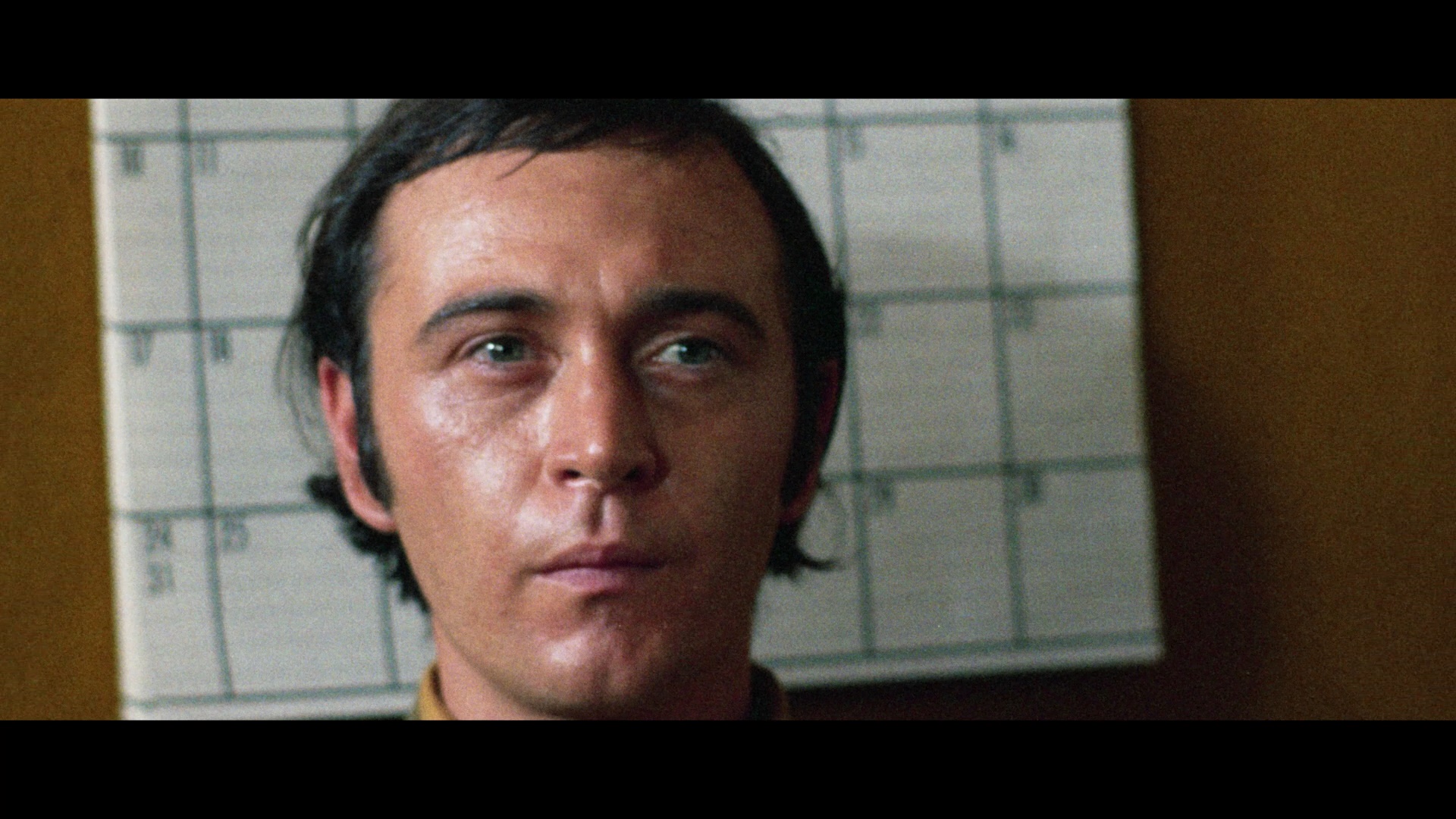 Ghastly Horror dispenses with most of the nightclub footage, retains the scenes with Carradine, and grafts on new
Ghastly Horror dispenses with most of the nightclub footage, retains the scenes with Carradine, and grafts on new 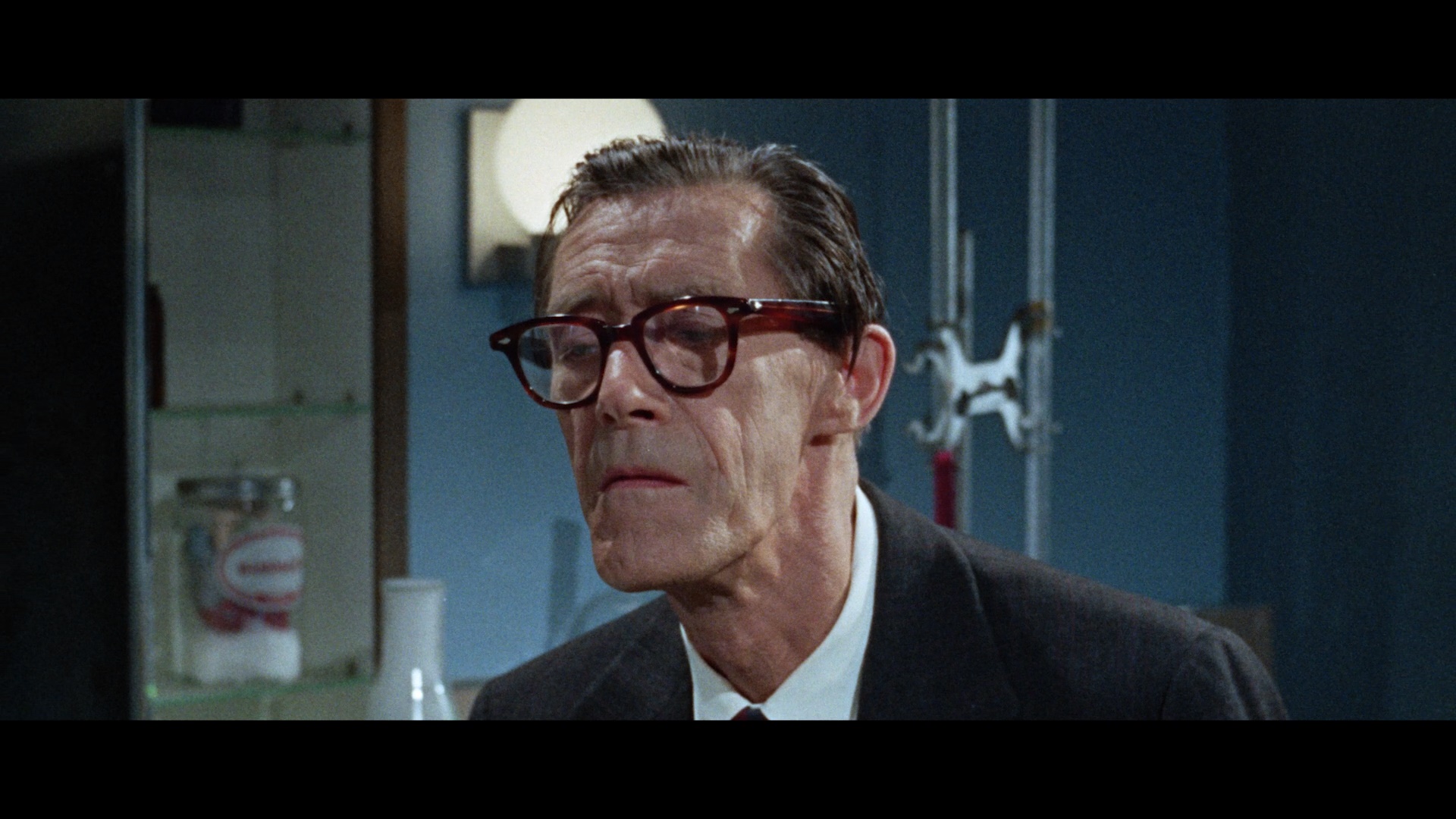 scenes with Tommy Kirk, Regina Carrol, and Kent Taylor to add a subplot about a police investigation (which promptly disappears two thirds of the way through) and another crazed killer, this time played by future smut actor Richard Smedley (The Suckers). The footage for all three versions was shot in scope, but the gap in years means you can see some very evident shifts in film stock and shooting style with the most recent material looking more improvised and claustrophobic. (Also, former Disney star Kirk looks really sickly here, which doesn't help things.)
scenes with Tommy Kirk, Regina Carrol, and Kent Taylor to add a subplot about a police investigation (which promptly disappears two thirds of the way through) and another crazed killer, this time played by future smut actor Richard Smedley (The Suckers). The footage for all three versions was shot in scope, but the gap in years means you can see some very evident shifts in film stock and shooting style with the most recent material looking more improvised and claustrophobic. (Also, former Disney star Kirk looks really sickly here, which doesn't help things.)
Anyone who's watched any of the variations on this film in the past should be floored by what's on display here with the Techniscope camera negative for Blood of Ghastly Horror used as the main source and portions from IB Technicolor prints for almost all of the rest. What emerges is a far more splashy, entertaining experience than the cropped, poor quality versions we've had until now (especially the dire Troma DVD of Ghastly which is so heavily cropped and zoomed in it's unwatchable). Obviously there are some flaws here and there and some quality shifts, but it's such a gargantuan leap that this truly qualifies as a whole new viewing experience. As with the other films in this set, the DTS-HD MA English mono track is perfectly fine for something pulled off a print; optional English SDH subtitles are also included. It's also 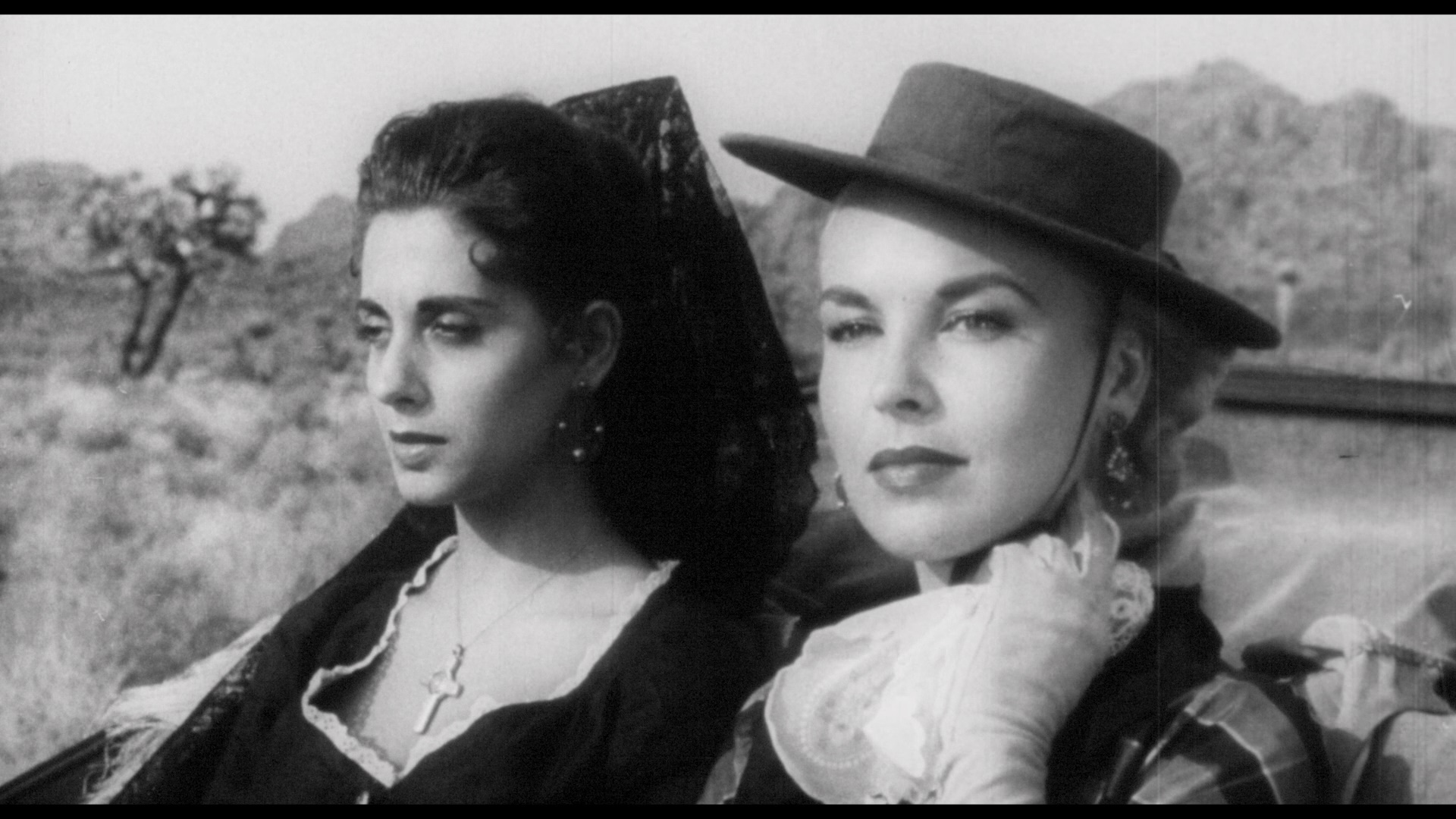 worth
worth 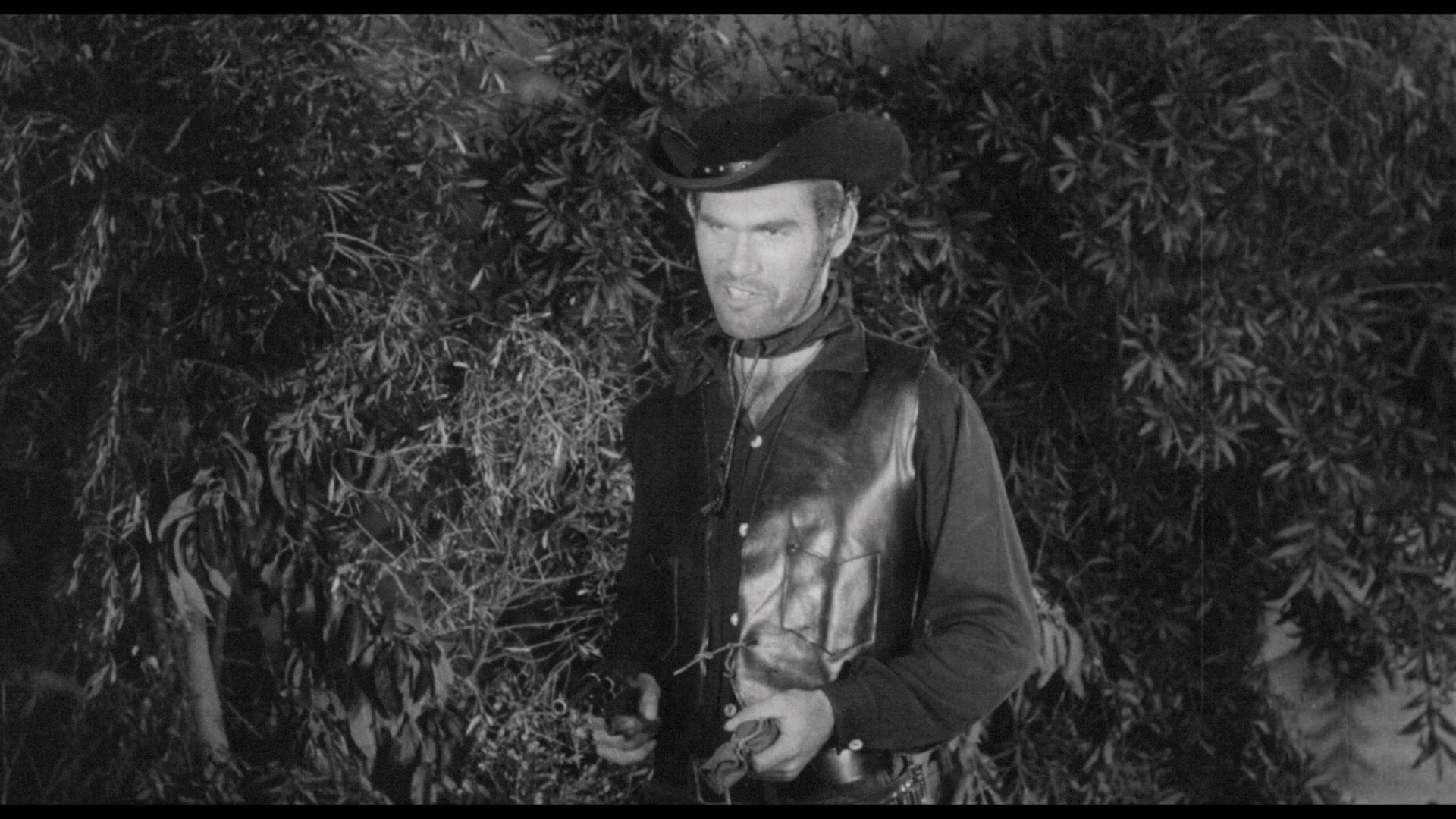 noting that this disc is Region A, which also applies to everything except discs one, twelve, and fourteen. Extras include the trailers for all three versions, an alternate Synthetic Brain opening pulled from a video source, and an archival audio commentary by Sam Sherman ported over from the Troma Ghastly release.
noting that this disc is Region A, which also applies to everything except discs one, twelve, and fourteen. Extras include the trailers for all three versions, an alternate Synthetic Brain opening pulled from a video source, and an archival audio commentary by Sam Sherman ported over from the Troma Ghastly release.
If you're watching this set in order, disc three will throw you for a loop as it pairs up two Adamson westerns. First up is the very rare feature Halfway to Hell (or Half Way to Hell according to the press materials), making its home video debut in any format from the sole surviving print. This one was actually directed by Al's father, Victor (under the name "Denver Dixon"), with Al pitching in on uncredited directing duties as well and appearing in a minor role under the name "Rick Adams." Shot in 1958 and released two years later, the film feels far older and recalls the tone of Republic serial westerns with a standard storyline about Mexican resistance leader Escobar (Felice) running a gauntlet of violent threats in the desert when his girlfriend, Maria (Montour), makes a run for the border with her best friend and ends up in deep trouble with bandits and bounty hunters. Image quality here is fine all things considered, especially since the heavily damaged film element had to be scanned in separate portions and assembled later.
Also on the disc is the far better known Five Bloody Graves from 1970, Independent International's attempt to ride the wave of ultra-violent oaters inaugurated by The Wild Bunch. This one actually saves most of the rough stuff for the very end, which actually isn't surprising 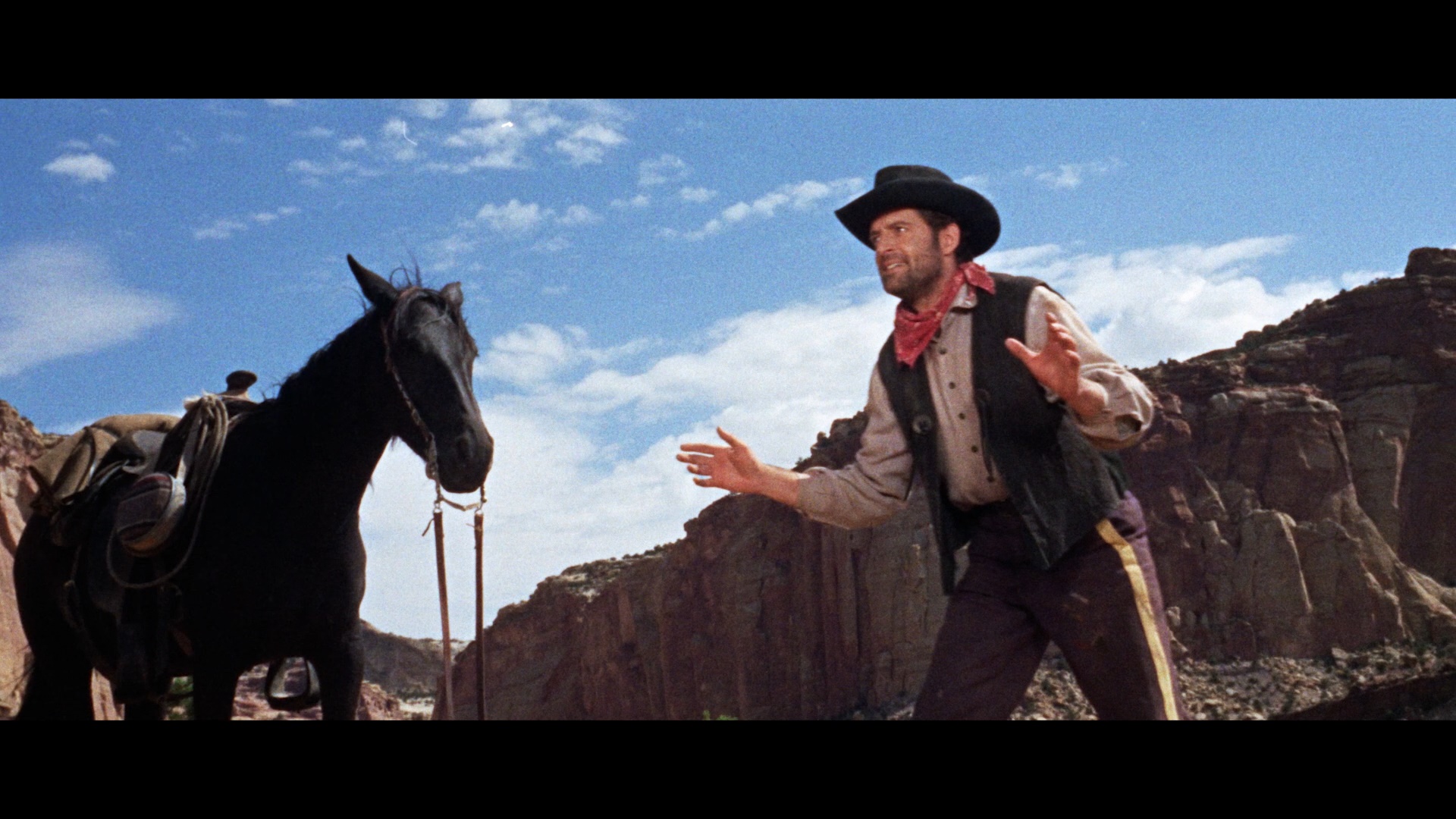 given that it was actually shot in '66 (and spiced up with more violent
given that it was actually shot in '66 (and spiced up with more violent 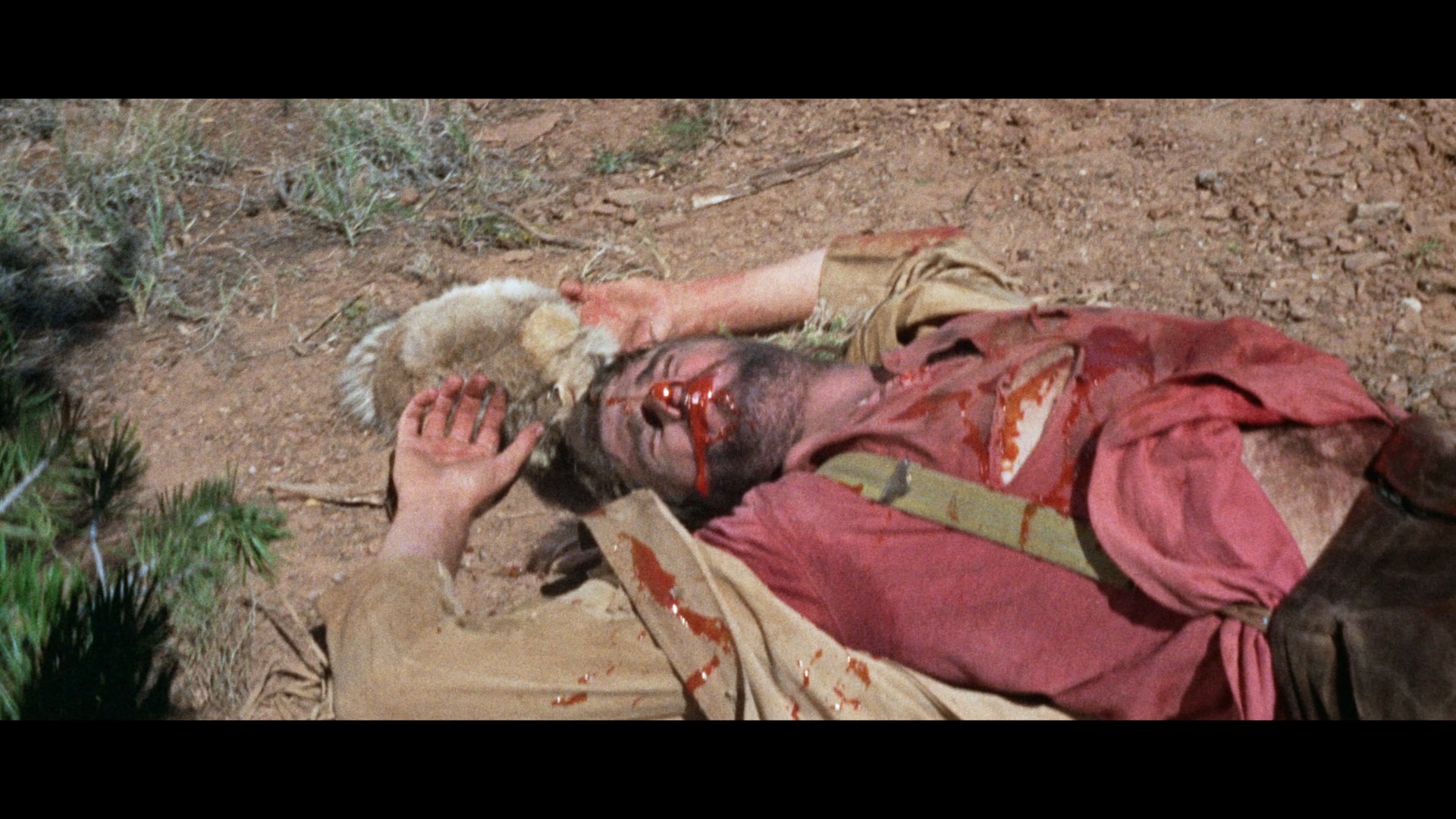 footage for some later screenings). The story here is also fairly standard material about a revenge-seeking gun for hire, Ben Thompson (co-screenwriter Dix), who's scouring the West for the Native American who killed his wife. Along the way he encounters a variety of other colorful characters, many slathered in brownface to very odd effect, and it's all shot very skillfully by a young Vilmos Zsigmond, who also lensed the original version of Psycho a Go-Go.
footage for some later screenings). The story here is also fairly standard material about a revenge-seeking gun for hire, Ben Thompson (co-screenwriter Dix), who's scouring the West for the Native American who killed his wife. Along the way he encounters a variety of other colorful characters, many slathered in brownface to very odd effect, and it's all shot very skillfully by a young Vilmos Zsigmond, who also lensed the original version of Psycho a Go-Go.
This release marks the first real opportunity to appreciate the very vibrant, striking imagery captured in Techniscope with a fresh scan of the original negative, a far cry from the sorry, heavily cropped versions we've had before (including a pretty cruddy DVD from Retro Shock-o-Rama). A partial audio commentary with Sherman is ported over from the earlier DVD, and you also get a video interview with Dix, "Outside of Tucson" (16m6s), who shares a handful of his many stories about his career including his famous Hollywood dad, his role in the surprise hit Forbidden Planet, his big break with Samuel Fuller, and his intersection with Adamson, which also brings in a bit of interview commentary from Cardos and Tamblyn as well. Also included are alternate Five Bloody Graves main title and end credits sequences (2m11s) as 5 Bloody Days to Tombstone, and a radio spot and video-sourced trailer for Five Bloody Graves.
It 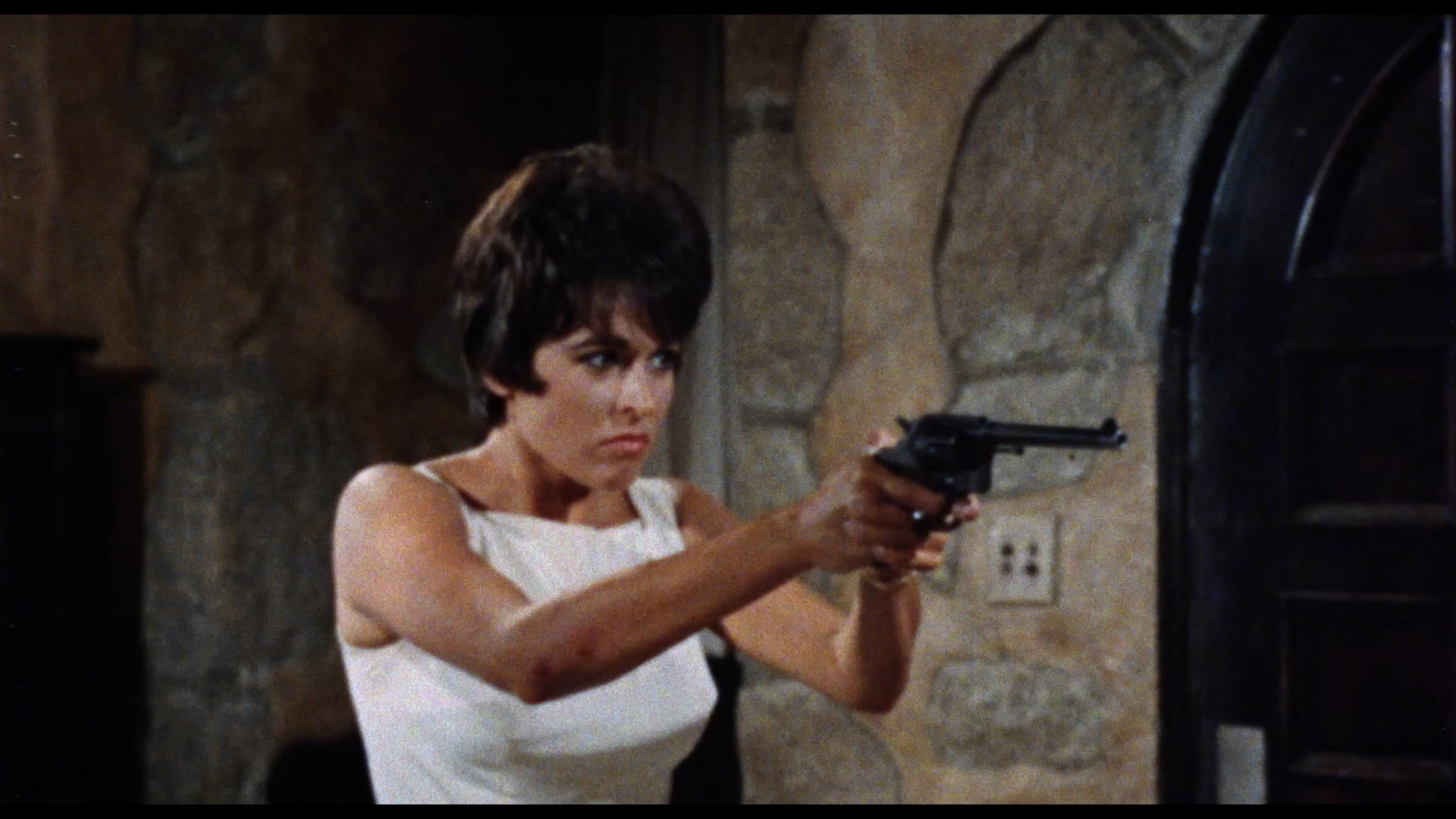 was inevitable that Adamson would
was inevitable that Adamson would 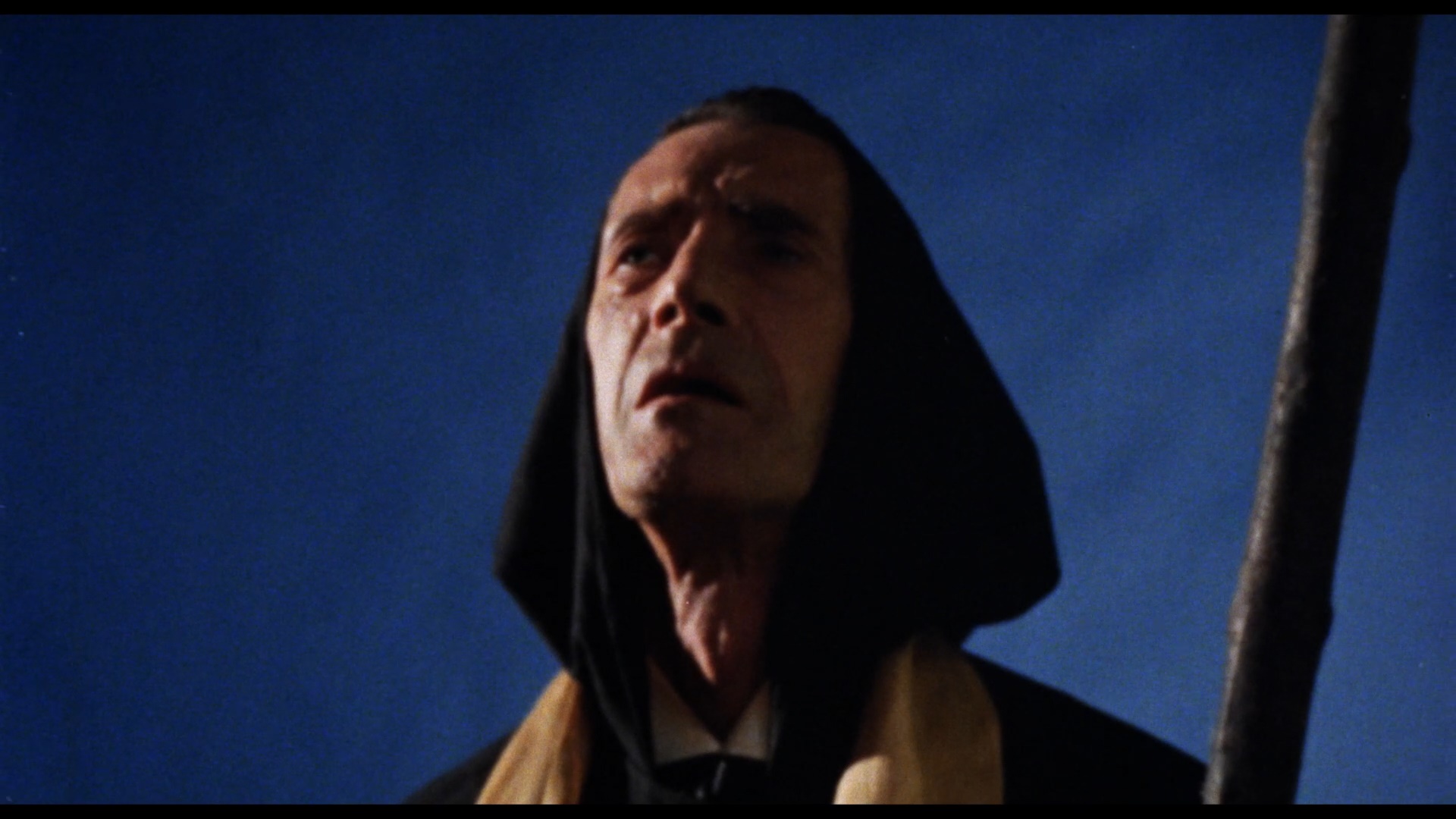 cross paths with the drive-in factory Crown International at some point, and that came to pass with one of his most widely circulated films, Blood of Dracula's Castle, which turns up on disc four in the box. This cheapie features a memorable title and the can't-miss proposition of horror vet John Carradine in one of his many vampire movie roles, but as usual Adamson doesn't do it the way you'd expect. Carradine plays George, the butler for the stuck-up Count Dracula (Horrors of Spider Island's D'Arcy) and his wife (Hand of Death's Raymond), who like to keep random kidnapped women chained up in their California castle dungeon for their blood supply. A jailbird named Johnny (Dix) clobbers the prison guard who helped him escape (a cameo by production manager Cardos) and eventually crashes the castle along with unfortunate photographer Glen (O'Shane) and his girlfriend Liz (The Mad Room's Bishop), who think they've inherited the castle but have a big surprise waiting for them. Then there's the Count's drooling, misshapen manservant Mango (Blue Sunshine's Young), who does the aforementioned kidnapping and bloodletting when he isn't stumbling around scaring people in the dark.
cross paths with the drive-in factory Crown International at some point, and that came to pass with one of his most widely circulated films, Blood of Dracula's Castle, which turns up on disc four in the box. This cheapie features a memorable title and the can't-miss proposition of horror vet John Carradine in one of his many vampire movie roles, but as usual Adamson doesn't do it the way you'd expect. Carradine plays George, the butler for the stuck-up Count Dracula (Horrors of Spider Island's D'Arcy) and his wife (Hand of Death's Raymond), who like to keep random kidnapped women chained up in their California castle dungeon for their blood supply. A jailbird named Johnny (Dix) clobbers the prison guard who helped him escape (a cameo by production manager Cardos) and eventually crashes the castle along with unfortunate photographer Glen (O'Shane) and his girlfriend Liz (The Mad Room's Bishop), who think they've inherited the castle but have a big surprise waiting for them. Then there's the Count's drooling, misshapen manservant Mango (Blue Sunshine's Young), who does the aforementioned kidnapping and bloodletting when he isn't stumbling around scaring people in the dark.
Even more than usual, Al seems to be struggling with the pacing here and resorts to padding. Lots and lots and lots and lots of padding. The opening with the first victim, a hapless female driver (Volonte), spends a silly amount of time sharing her radio-listening and driving habits with the audience, and there's an early trip to a marine animal park for good measure, too. That said, there's something hypnotically weird about the whole thing, especially with Mr. and Mrs. Drac sitting around talking like a couple of elitist country club members. Not surprisingly, this one proved exploitable enough to live on for many years after its first release (when it was usually paired up with another Crown title, Nightmare in 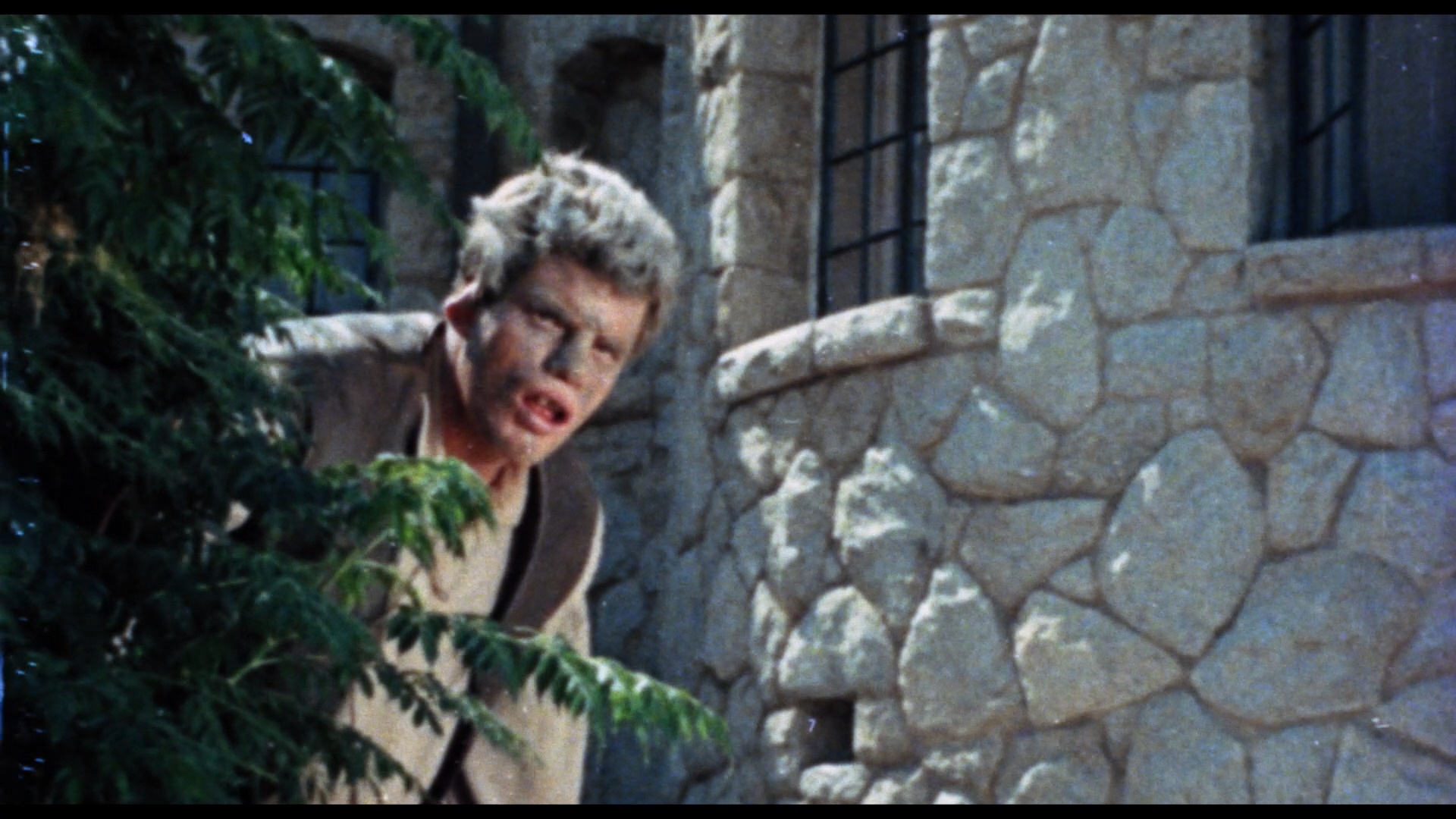 Wax, also with Cardos). In its theatrical form the film ran 84 minutes, but when it needed to be lengthened for TV, an additional five minutes
Wax, also with Cardos). In its theatrical form the film ran 84 minutes, but when it needed to be lengthened for TV, an additional five minutes 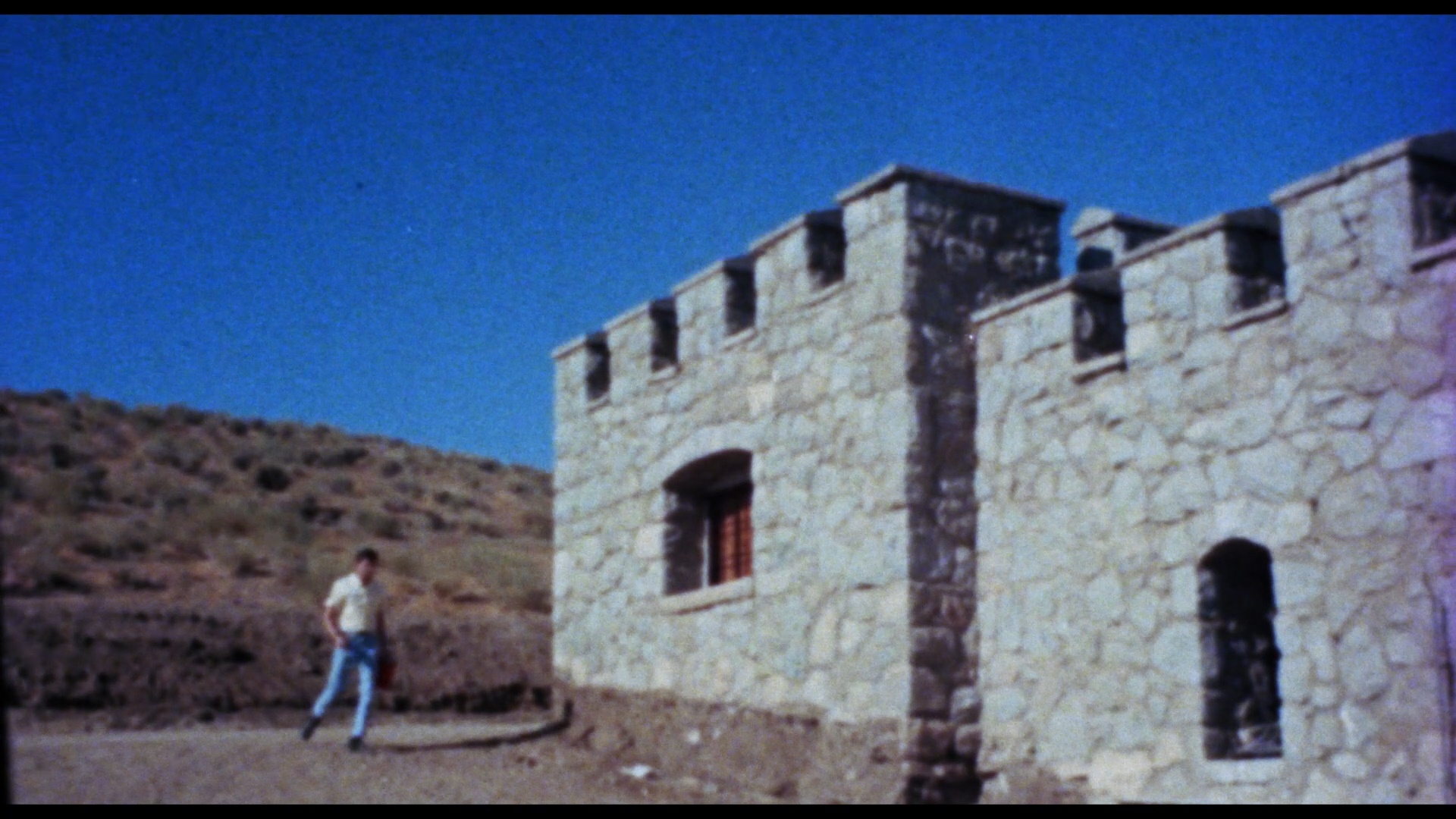 were added expanding upon Dix's odd relationship with the full moon. In this expanded cut, Dix actually turns into a werewolf and rampages through the sagebrush at random intervals through the first half of the film, all accompanied by some pretty wild psychedelic rock guitar music.
were added expanding upon Dix's odd relationship with the full moon. In this expanded cut, Dix actually turns into a werewolf and rampages through the sagebrush at random intervals through the first half of the film, all accompanied by some pretty wild psychedelic rock guitar music.
The shorter theatrical version made its DVD debut as part of Rhino's Horrible Horrors Vol. 2 set (paired up on the same disc side with Nightmare in Wax, appropriately enough), in a mediocre transfer with several intervals of severe print damage. BCI announced a reissue of the two films as a remastered double feature but closed shop before the DVD could be released, but their source eventually made it out of the gate from Mill Creek in the budget-priced Gorehouse Greats Collection which smushes 12 movies into three discs with the usual substandard compression. Paired up with The Hearse, the Scorpion Releasing DVD from 2012 not only features a fresh transfer (finally framed at 1.78:1 without those huge open expanses of dead space at the top) but the expanded cut as well, with those daffy werewolf scenes finally back in for the first time on DVD. They're actually the most lively and entertaining part of the movie, so it's nice to finally have them back even if they just barely connect with the rest of the movie. Rather than the traditional hosting bits, Katarina Leigh Waters returns here for "Kat's Eyes," a 28-minute interview with Cardos in which the two sit down to chat about his start in show business, his arbitrary duties on a few of Adamson's films, and his various memories of working in different capacities on cult films well through the 1980s. It's 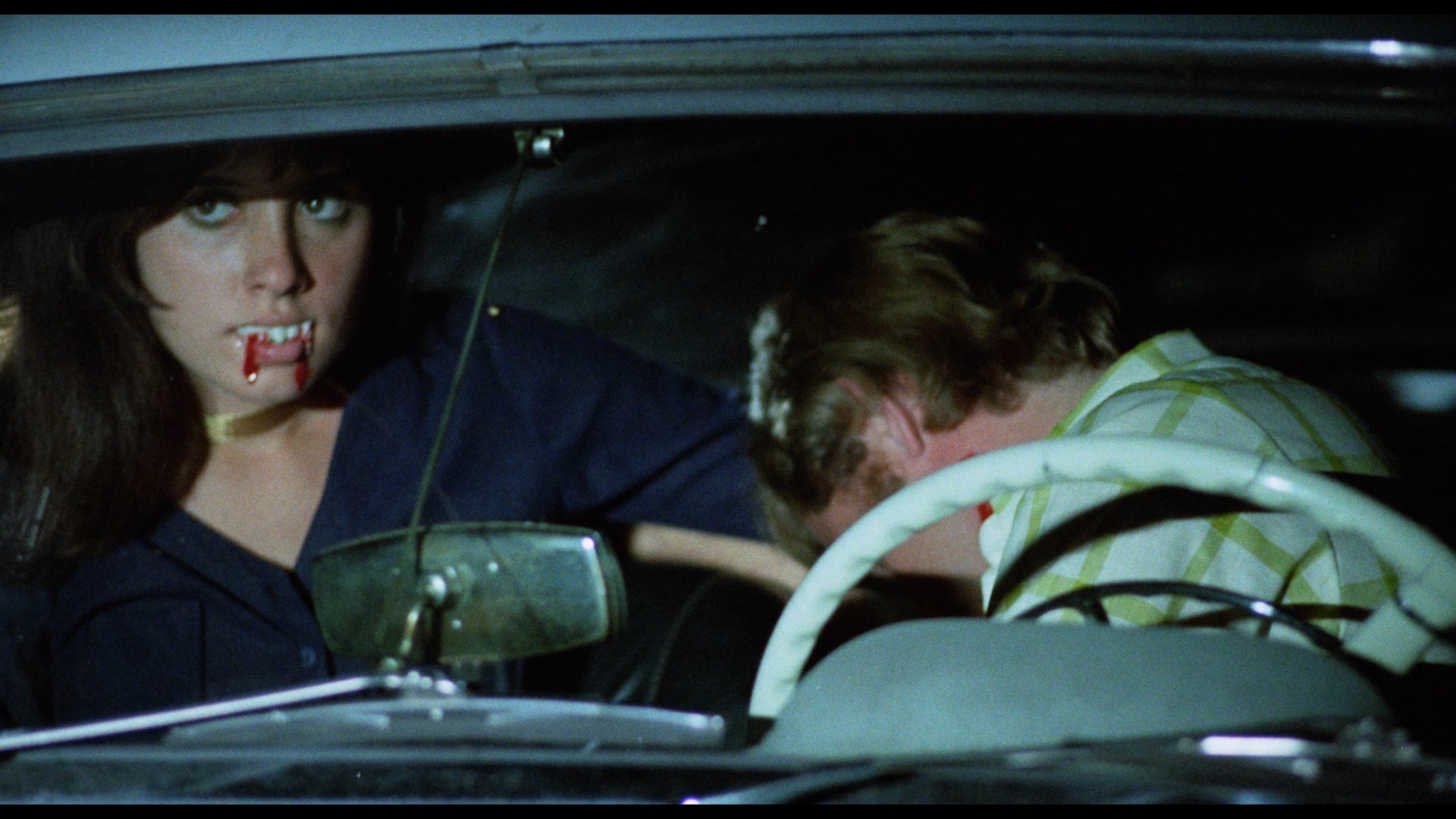 a fun piece that goes well with his commentary tracks elsewhere and a welcome addition to one of Adamson's strangest but most widely-seen monster outings
a fun piece that goes well with his commentary tracks elsewhere and a welcome addition to one of Adamson's strangest but most widely-seen monster outings 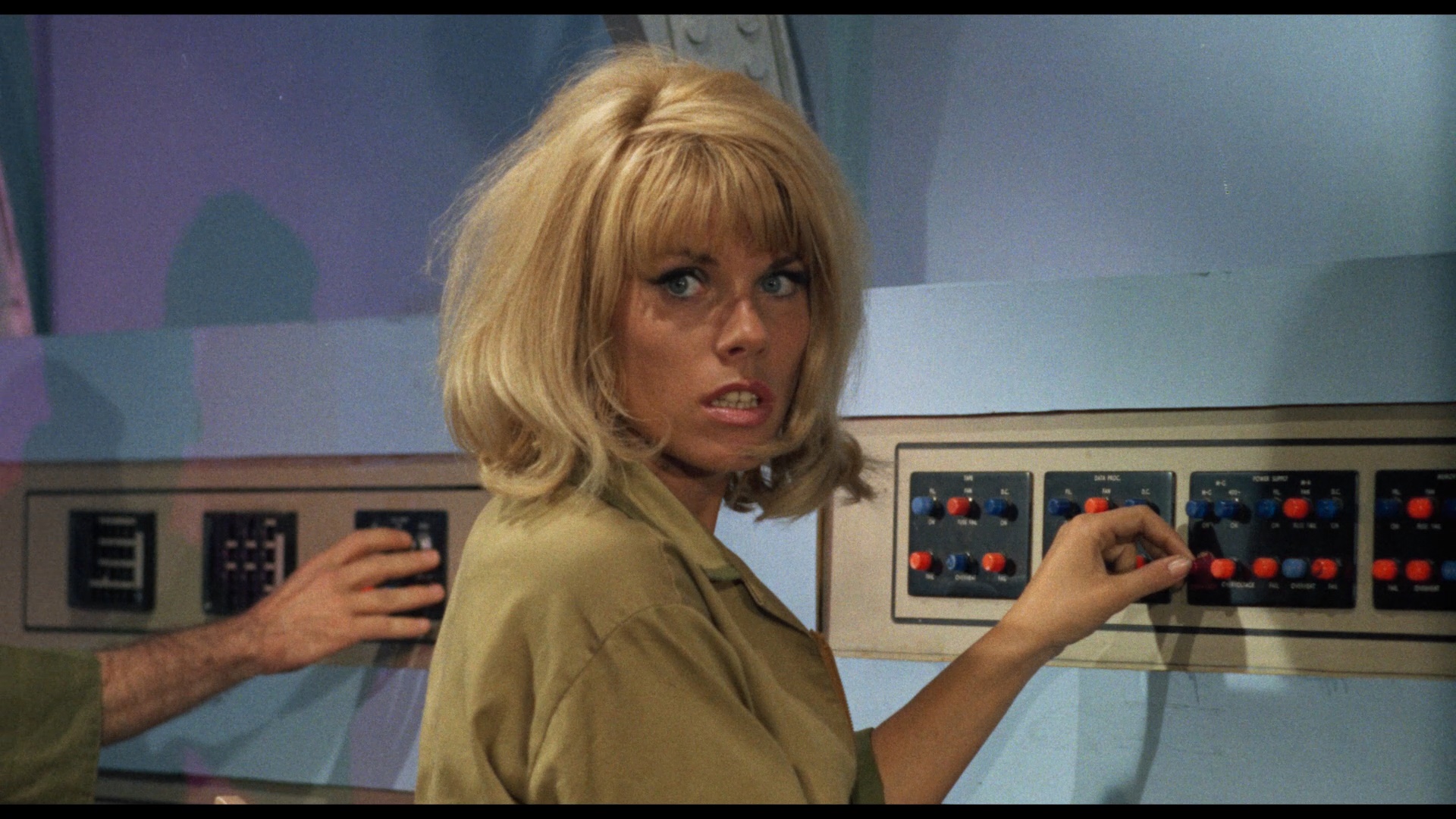 as few have seen it before. The Blu-ray is taken from the best surviving material, 16mm CRI of the TV version which also serves as the base for the theatrical cut with exclusive portions of the latter sourced from a 35mm print. The theatrical version is framed at 1.85:1 and the TV version (under the title Dracula's Castle) is open matte at 1.33:1, which often looks far more visually comfortable. Extras include a partial audio commentary by Brian Albright, a brief audio interview with D'Arcy by David Del Valle (2m42s), and the theatrical trailer.
as few have seen it before. The Blu-ray is taken from the best surviving material, 16mm CRI of the TV version which also serves as the base for the theatrical cut with exclusive portions of the latter sourced from a 35mm print. The theatrical version is framed at 1.85:1 and the TV version (under the title Dracula's Castle) is open matte at 1.33:1, which often looks far more visually comfortable. Extras include a partial audio commentary by Brian Albright, a brief audio interview with D'Arcy by David Del Valle (2m42s), and the theatrical trailer.
Also on the same disc is one of the nuttiest patchwork jobs in Adamson's career, 1970's Horror of the Blood Monsters, which started off as an attempt to make something commercial out of a Filipino black-and-white prehistoric adventure film called Tagani. Aggressive color tints were added, sci-fi footage culled from The Wizard of Mars was rounded up, and new scenes were shot in two separate rounds to make it all palatable for American audiences. The bulk of the new footage is a batch of interstellar travel scenes with Carradine as a doctor leading a crew to a planet that's wreaking vampiric havoc on Earth, with Dix and Volonte 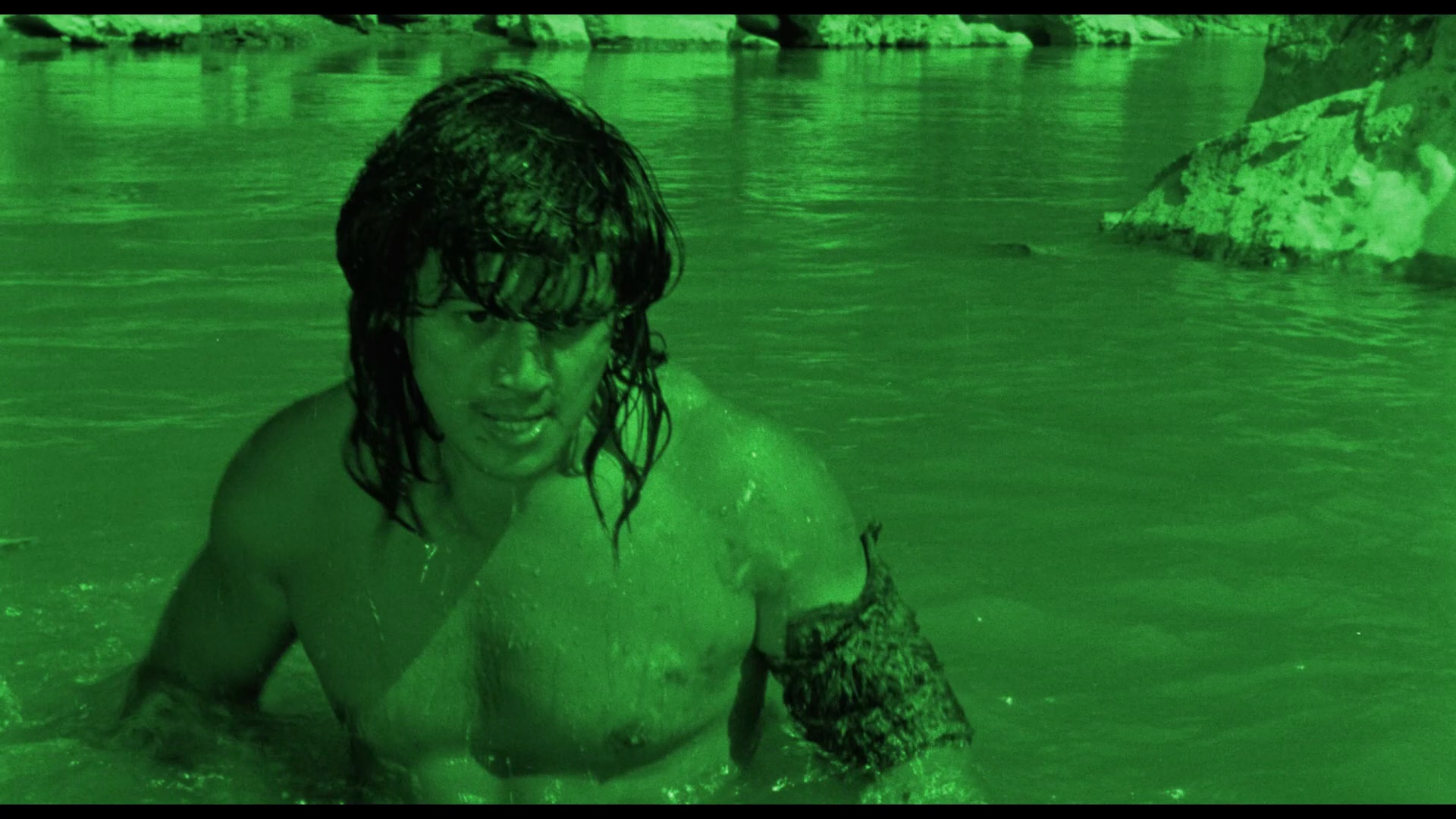 recruited as a pair of ground controllers. Adamson and Cardos also turn up briefly in a newer prologue showing vampire assaults happening all over L.A., which is also the most enjoyable part of the whole enterprise.
recruited as a pair of ground controllers. Adamson and Cardos also turn up briefly in a newer prologue showing vampire assaults happening all over L.A., which is also the most enjoyable part of the whole enterprise.
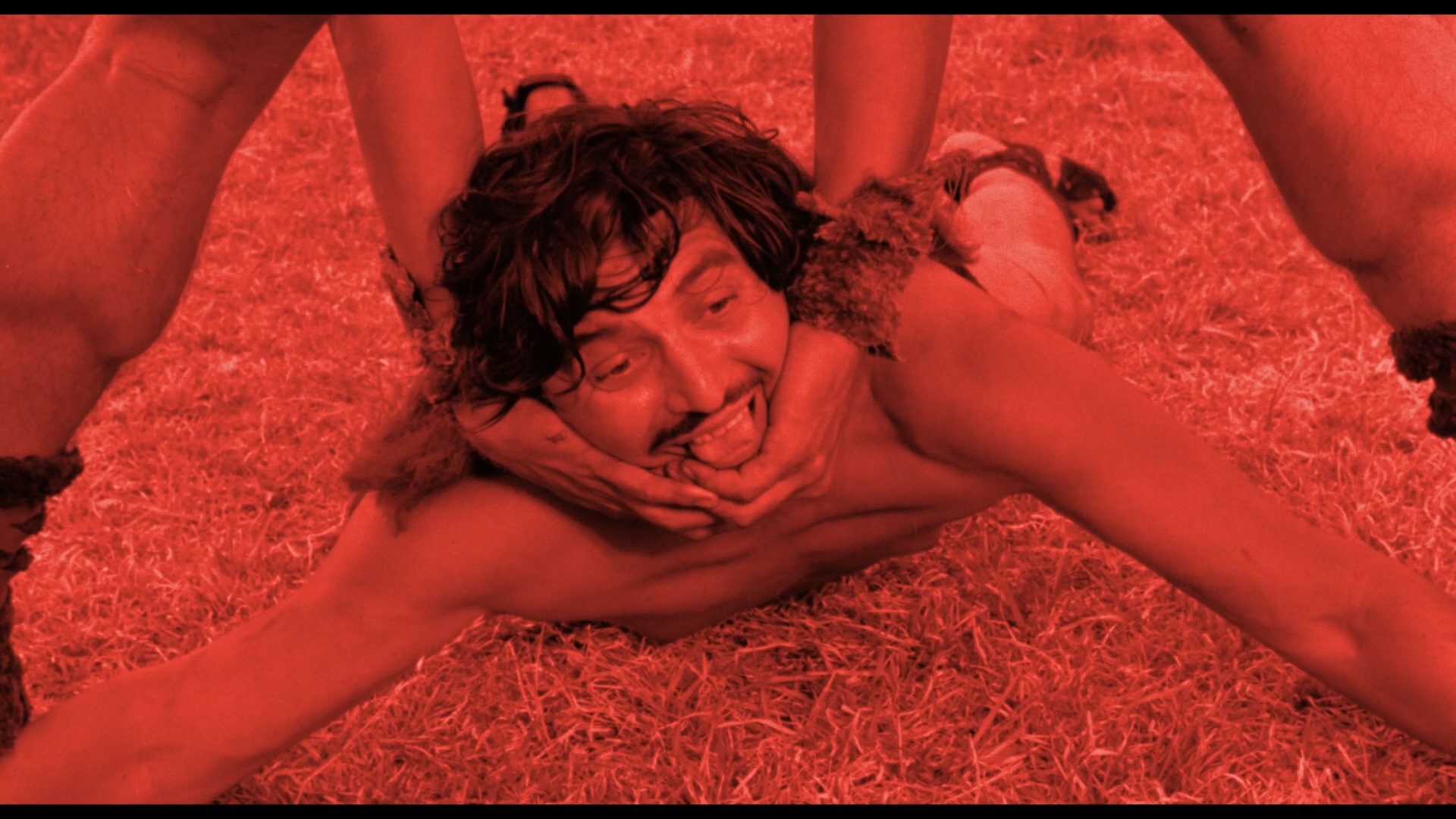 The psychedelic color tinting is certainly a novel approach and probably worked like a charm at drive-ins where distracted patrons had some vibrant background activity unfolding for a while, but seen without context it's an absolutely brain-draining experience. The Severin transfer is leagues better than the old full frame Image DVD with a fresh scan from the original camera negative that absolutely blazes with candy colors all over the place. It may not make much sense, but your eyes will be happy. Sherman's partial audio commentary is ported over here from the DVD and it's actually one of his best with a very precise record of how the film came about, why its title was changed to Vampire Men of the Lost Planet for TV airings, and how and why all the various extra bits were shot to cobble together something that could earn back a few dollars. Also included are later alternate title sequences (Space Mission to the Lost Planet and Vampire Men of the Lost Planet), three astounding theatrical trailers (two narrated by
The psychedelic color tinting is certainly a novel approach and probably worked like a charm at drive-ins where distracted patrons had some vibrant background activity unfolding for a while, but seen without context it's an absolutely brain-draining experience. The Severin transfer is leagues better than the old full frame Image DVD with a fresh scan from the original camera negative that absolutely blazes with candy colors all over the place. It may not make much sense, but your eyes will be happy. Sherman's partial audio commentary is ported over here from the DVD and it's actually one of his best with a very precise record of how the film came about, why its title was changed to Vampire Men of the Lost Planet for TV airings, and how and why all the various extra bits were shot to cobble together something that could earn back a few dollars. Also included are later alternate title sequences (Space Mission to the Lost Planet and Vampire Men of the Lost Planet), three astounding theatrical trailers (two narrated by 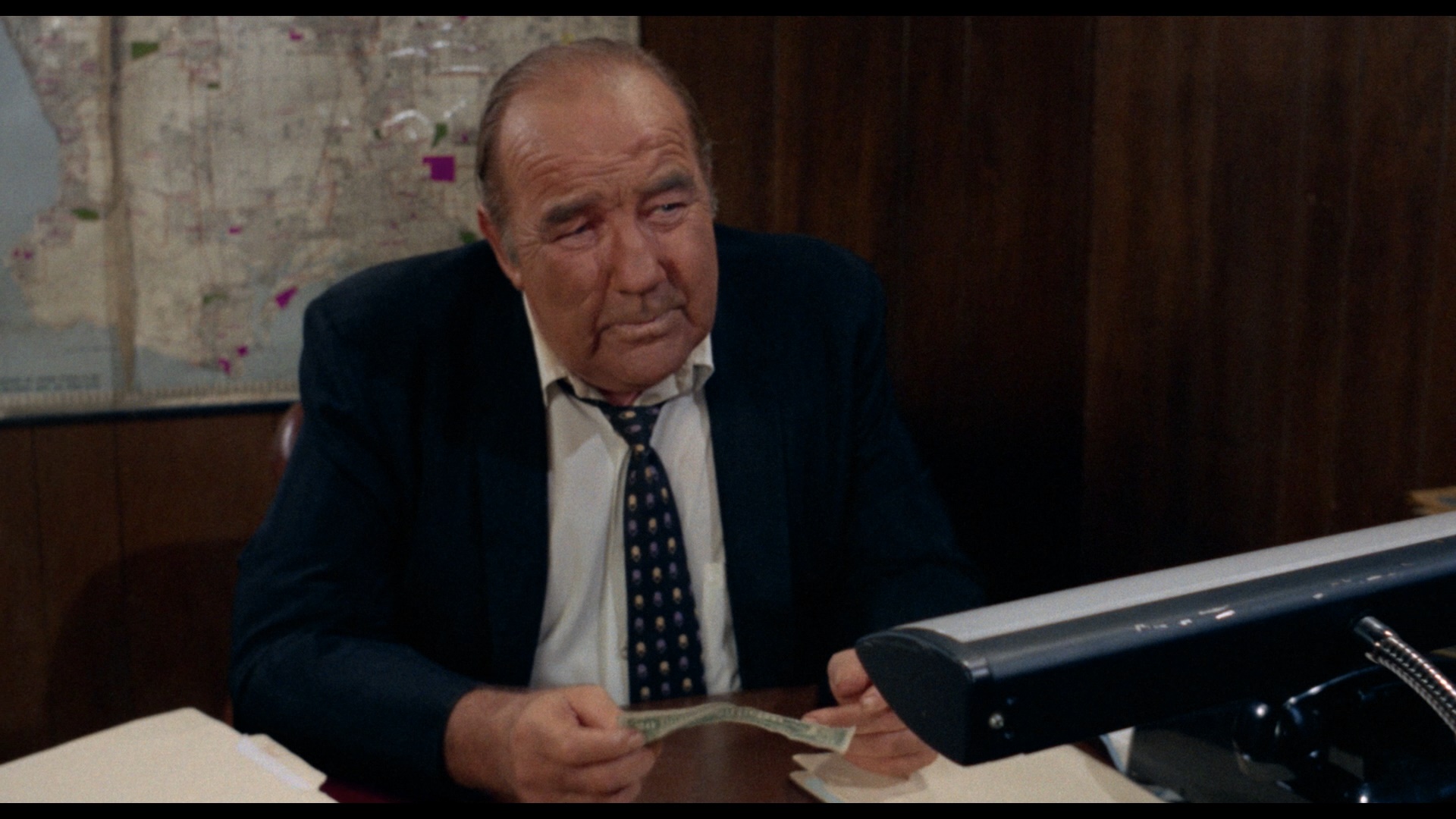 Brother Theodore) and a bonus one for Tagani, TV spots, and a radio spot. Note that the earlier U.S. DVD also featured a reel of discarded B&W Tagani footage from Sherman's archives, so if you're a real maniac for this film, make sure you hang on to it.
Brother Theodore) and a bonus one for Tagani, TV spots, and a radio spot. Note that the earlier U.S. DVD also featured a reel of discarded B&W Tagani footage from Sherman's archives, so if you're a real maniac for this film, make sure you hang on to it.
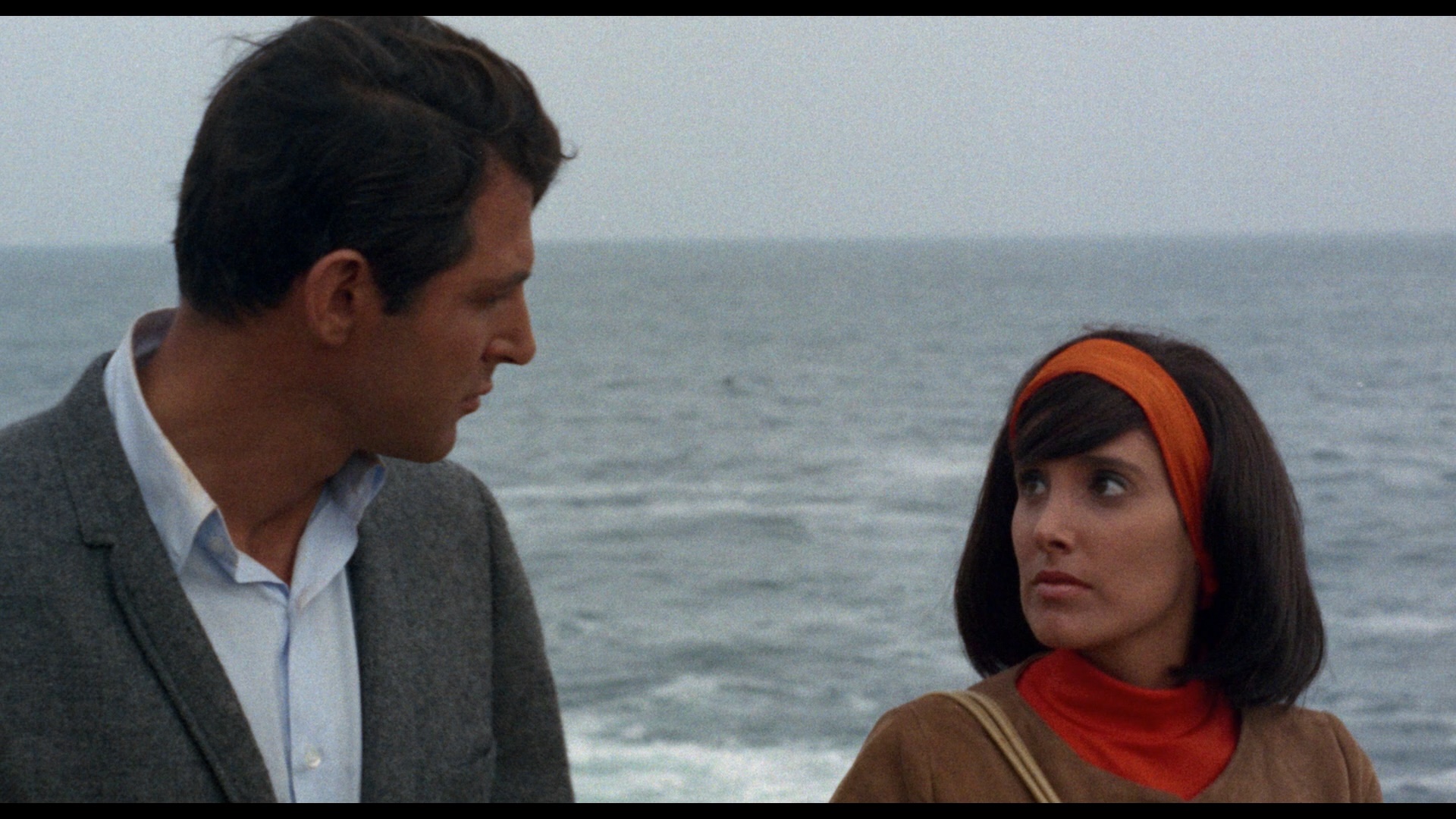 Now on to disc five, which houses one of the loopiest examples of Adamson refashioning one of his own films into a completely different drive-in subgenre. The Fakers, cited on the menu and the replaced title card under the U.K. title Smashing the Crime Syndicate, is a belated 1968 attempt to ride the groovy spy wave inaugurated by James Bond and continued by the likes of the Matt Helm, Jerry Cotton, Derek Flint, and the OSS 117 series. Shot in 1967, it proved to be impossible to market at the time as the start of a series about secret agent Mark Adams (John Gabriel) and his covert government agency headed by none other than Oscar winner Broderick Crawford. Here our undercover hot shot is first seen in the hospital after nearly dying in a catastrophic car crash, and through voiceover he fills us in how he infiltrated a criminal organization involved in a counterfeiting ring financing a new incarnation of the Nazi party run by the fascist Count Otto (Kent Taylor).
Now on to disc five, which houses one of the loopiest examples of Adamson refashioning one of his own films into a completely different drive-in subgenre. The Fakers, cited on the menu and the replaced title card under the U.K. title Smashing the Crime Syndicate, is a belated 1968 attempt to ride the groovy spy wave inaugurated by James Bond and continued by the likes of the Matt Helm, Jerry Cotton, Derek Flint, and the OSS 117 series. Shot in 1967, it proved to be impossible to market at the time as the start of a series about secret agent Mark Adams (John Gabriel) and his covert government agency headed by none other than Oscar winner Broderick Crawford. Here our undercover hot shot is first seen in the hospital after nearly dying in a catastrophic car crash, and through voiceover he fills us in how he infiltrated a criminal organization involved in a counterfeiting ring financing a new incarnation of the Nazi party run by the fascist Count Otto (Kent Taylor).
A very troubled production right down to the jerky and sometimes muddled story, it's still a kitschy diversion for spy movie buffs including a crackerjack animated opening title sequence with a brassy Bond-esque theme song. The film also throws in a lot of action, some of it amusingly inept like a standard revolver somehow emitting silencer sound effects. Finishing 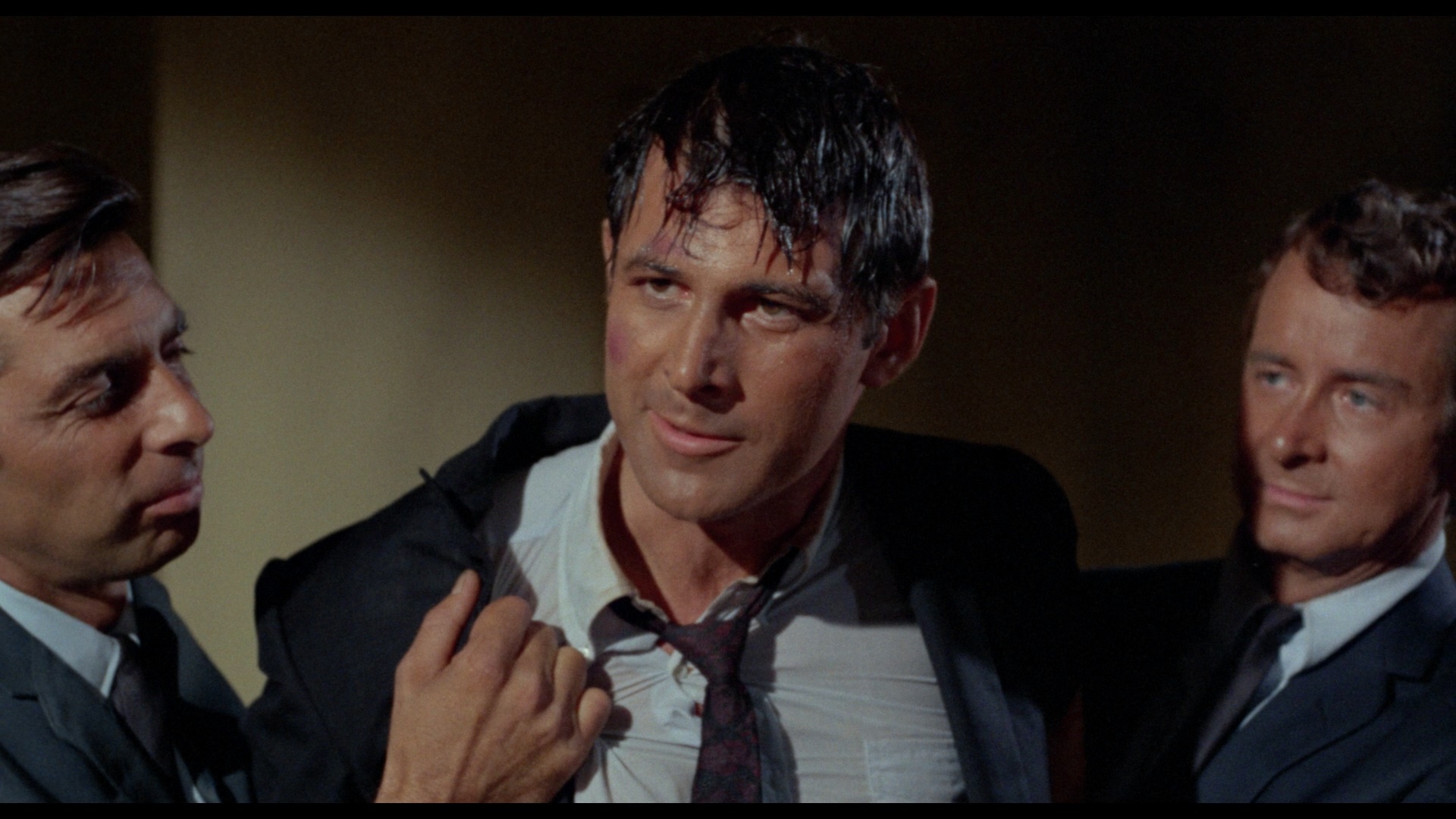 and selling the film proved to be insurmountable due to the suicide of producer Rex Carlton, which left this sitting on the shelf until 1972. In the interim,
and selling the film proved to be insurmountable due to the suicide of producer Rex Carlton, which left this sitting on the shelf until 1972. In the interim, 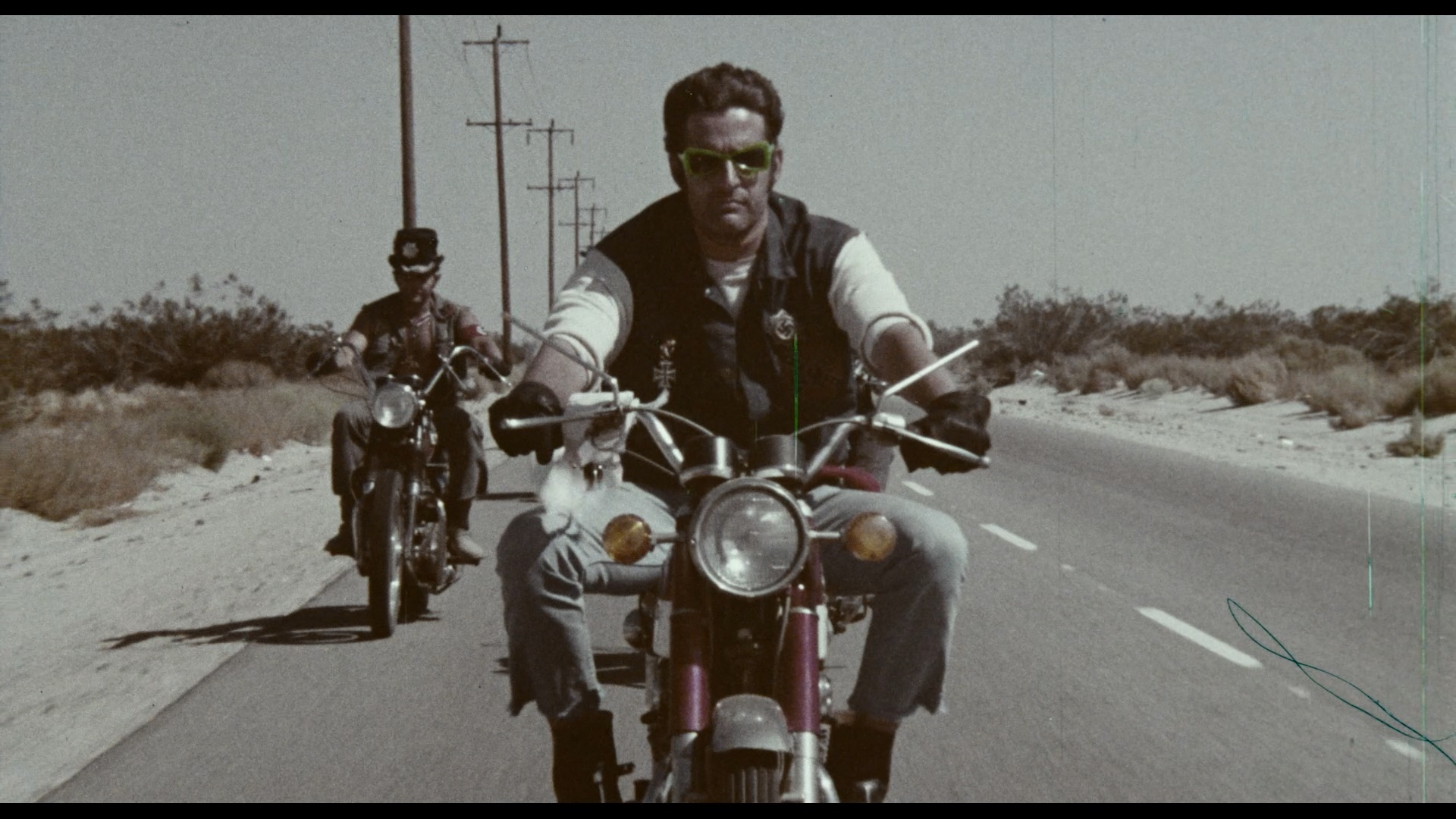 Adamson's association with Sam Sherman and the start of Independent International meant that this one could find a new lease on life as a biker movie in the wake of II's very successful Satan's Sadists (more on that in a moment). Thus new scenes were shot (including Volonte again) to add a very random subplot about Nazi bikers in California serving as operatives for the crime ring, shot in a grubby, herky jerky style very much at odds with the main feature. The end product, Hell's Bloody Devils, is an outrageous collage that must have left drive-in audiences with a major case of whiplash comparable only to the later wave of legit dramas and thrillers spiced up with random hardcore sex inserts in the later '70s. For this release you get a staggeringly good transfer of The Fakers from the original camera negative with all of its ultra saturated late '60s colors intact complete with piercing blue skies and ultra rich wood paneling on all the walls. Hell's Bloody Devils is a more uneven affair by necessity, using the same transfer for the bits from the original film and resorting to a damaged, faded print for the new biker scenes -- which somehow feels appropriate here. Extras include the original The Fakers title sequence from the only existing source (a 1.33: 16mm print), Sherman's partial audio commentary from the 2006 Media Blasters DVD of Hell's Bloody Devils (under its Guilty Pleasures brand), a trailer and TV spot, and an interview with Gabriel by Sherman (20m3s), also from the DVD.
Adamson's association with Sam Sherman and the start of Independent International meant that this one could find a new lease on life as a biker movie in the wake of II's very successful Satan's Sadists (more on that in a moment). Thus new scenes were shot (including Volonte again) to add a very random subplot about Nazi bikers in California serving as operatives for the crime ring, shot in a grubby, herky jerky style very much at odds with the main feature. The end product, Hell's Bloody Devils, is an outrageous collage that must have left drive-in audiences with a major case of whiplash comparable only to the later wave of legit dramas and thrillers spiced up with random hardcore sex inserts in the later '70s. For this release you get a staggeringly good transfer of The Fakers from the original camera negative with all of its ultra saturated late '60s colors intact complete with piercing blue skies and ultra rich wood paneling on all the walls. Hell's Bloody Devils is a more uneven affair by necessity, using the same transfer for the bits from the original film and resorting to a damaged, faded print for the new biker scenes -- which somehow feels appropriate here. Extras include the original The Fakers title sequence from the only existing source (a 1.33: 16mm print), Sherman's partial audio commentary from the 2006 Media Blasters DVD of Hell's Bloody Devils (under its Guilty Pleasures brand), a trailer and TV spot, and an interview with Gabriel by Sherman (20m3s), also from the DVD.
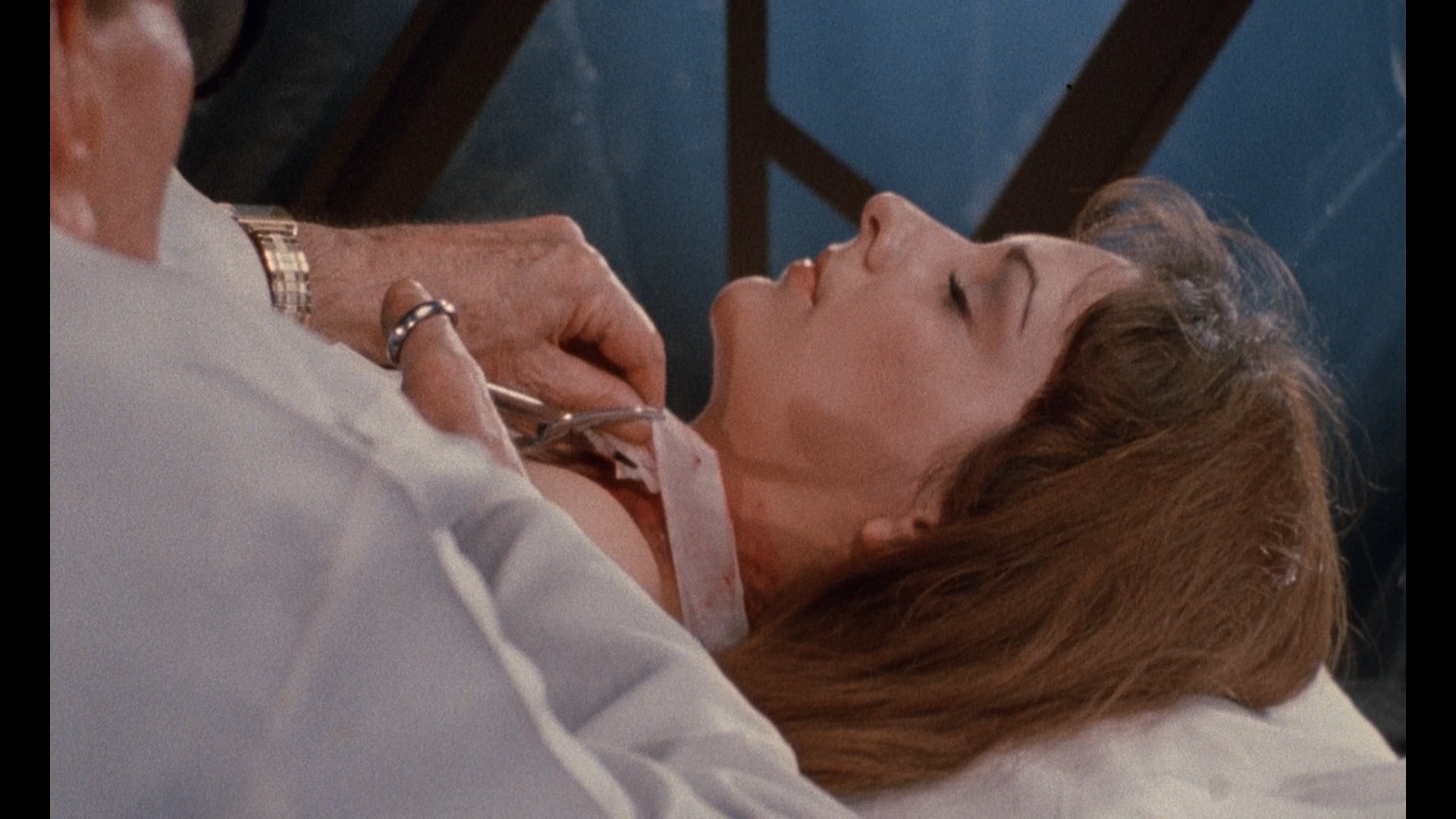 Perhaps
Perhaps 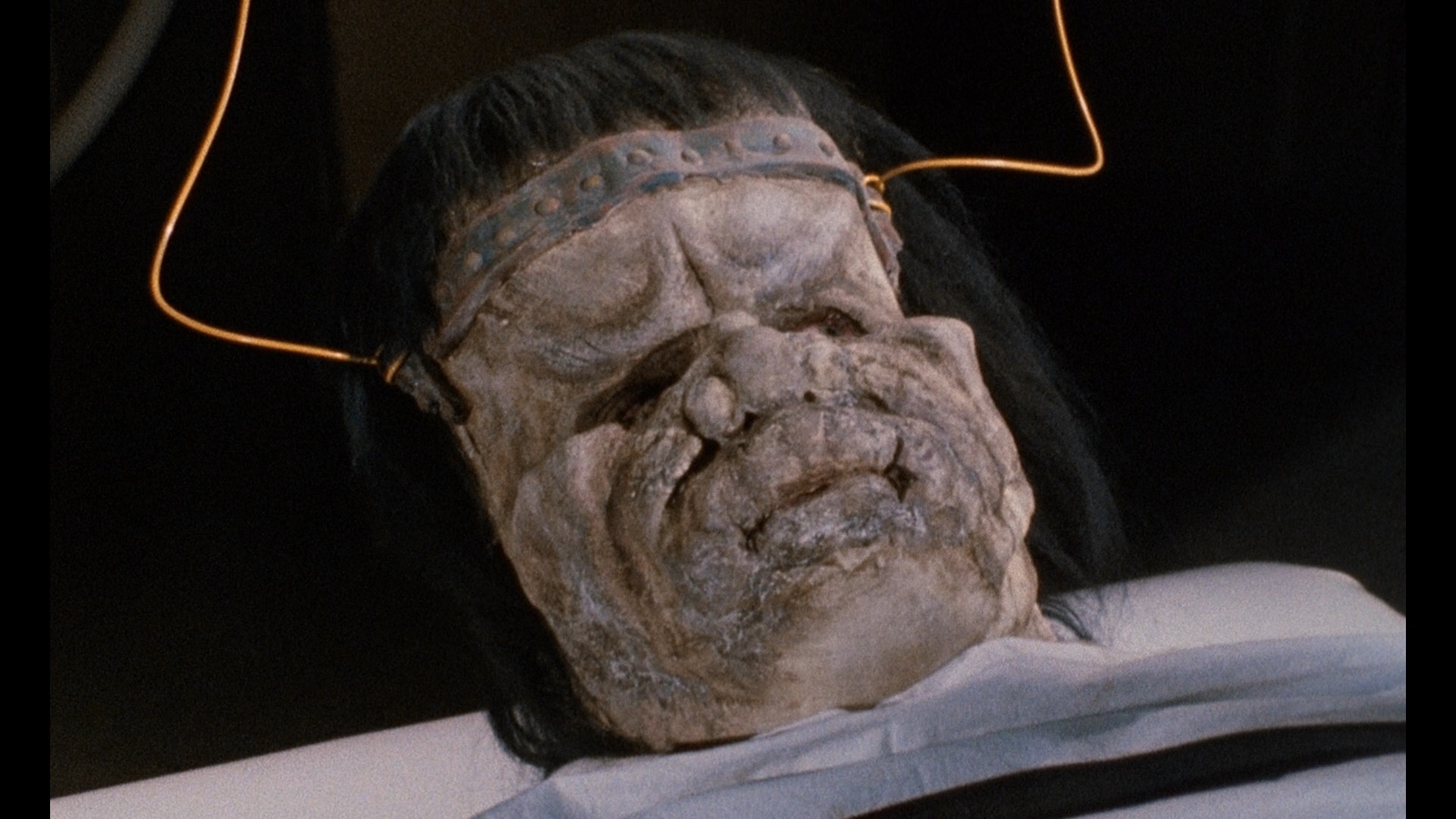 the most famous Adamson film at all (and certainly the one with the longest distribution life on the large and small screens) can be found on disc six: Dracula vs. Frankenstein, a colorful monster mash that also evolved from another, very different project (a biker film called The Blood Seekers) with piecemeal subplots added along the way to turn it into a full-on horror movie. Almost a greatest hits package designed for the Famous Monsters crowd, the film affords parts for classic film legends J. Carrol Naish and Lon Chaney Jr. along with such familiar faces as Regina Carrol, Russ Tamblyn (briefly), Gary Graver, Angelo Rossitto, and Greydon Clark. The somewhat discombobulating plot hinges on the attempts of Vegas showgirl Judith (Carrol) whose sister has become one of the victims of Dr. Duryea (Naish), a member of the Frankenstein family who's carrying on its infamous work in a lab behind a carnival in Venice, California. He finds an unlikely professional alliance with Dracula (Zandor Vorkov, alias Sherman's financial advisor at the time, Roger Engel), who can help bring the Frankenstein monster to life in exchange for access to the doctor's findings to cure his own aversion to daylight. Axe murders, clueless cops, bikers, and Forrest J. Ackerman also turn up.
the most famous Adamson film at all (and certainly the one with the longest distribution life on the large and small screens) can be found on disc six: Dracula vs. Frankenstein, a colorful monster mash that also evolved from another, very different project (a biker film called The Blood Seekers) with piecemeal subplots added along the way to turn it into a full-on horror movie. Almost a greatest hits package designed for the Famous Monsters crowd, the film affords parts for classic film legends J. Carrol Naish and Lon Chaney Jr. along with such familiar faces as Regina Carrol, Russ Tamblyn (briefly), Gary Graver, Angelo Rossitto, and Greydon Clark. The somewhat discombobulating plot hinges on the attempts of Vegas showgirl Judith (Carrol) whose sister has become one of the victims of Dr. Duryea (Naish), a member of the Frankenstein family who's carrying on its infamous work in a lab behind a carnival in Venice, California. He finds an unlikely professional alliance with Dracula (Zandor Vorkov, alias Sherman's financial advisor at the time, Roger Engel), who can help bring the Frankenstein monster to life in exchange for access to the doctor's findings to cure his own aversion to daylight. Axe murders, clueless cops, bikers, and Forrest J. Ackerman also turn up.
A fascinating and possibly accidental deconstruction of the monster magazine culture that was rising to a fever pitch at the time, Adamson's film is an undeniably memorable experience with a surprising amount of visual panache at times. The use of vast expanses of extreme darkness didn't help this one much on drive-in screens, but when seen properly it's an effective approach that allows splashy bursts of color to populate the screen in a fashion not unlike a 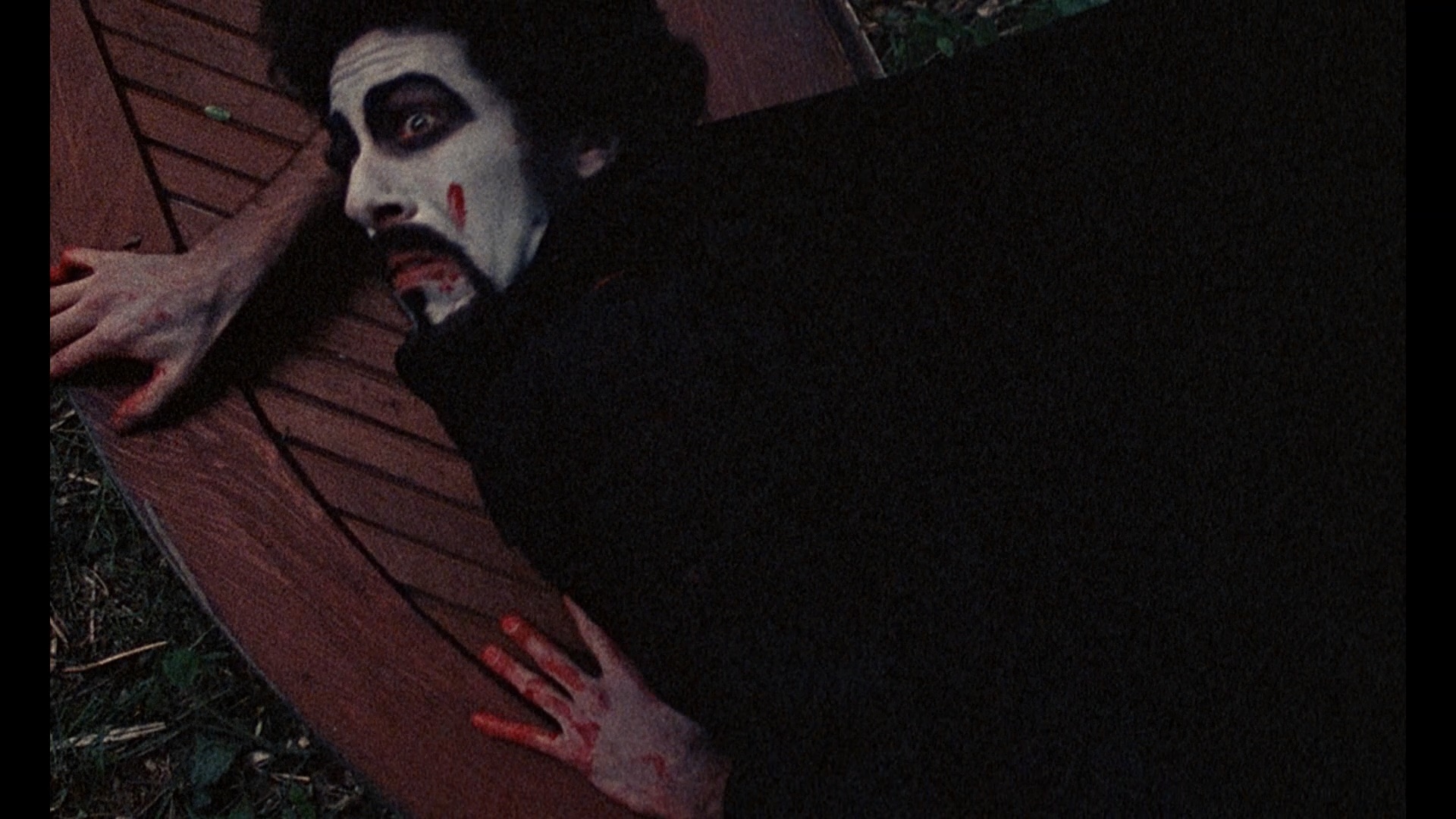 horror comic. The end result plays like an eight-year-old's fever dream skipping from one idea to the next with reckless abandon, climaxing in a monster versus monster showdown that throws anything resembling
horror comic. The end result plays like an eight-year-old's fever dream skipping from one idea to the next with reckless abandon, climaxing in a monster versus monster showdown that throws anything resembling 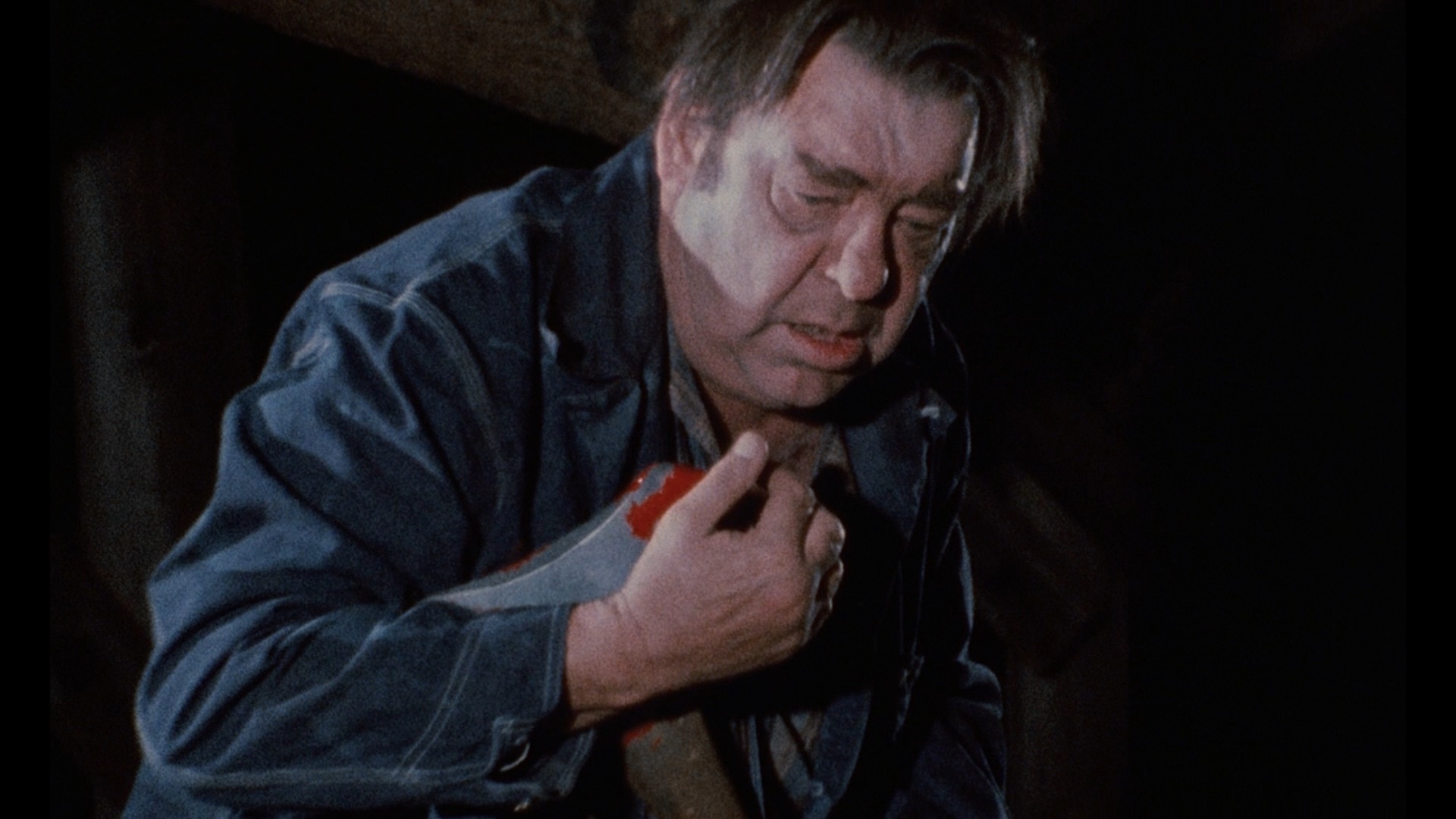 continuity to the wind. As with numerous other films from the same post-Plan 9 from Outer Space era, you can debate whether it's depressing or admirable for a director to give horror icons of yesteryear a cinematic showcase in their twilight years; Chaney in particular was having vast health and personal issues and would be gone by 1973 with this marking his final appearance on film.
continuity to the wind. As with numerous other films from the same post-Plan 9 from Outer Space era, you can debate whether it's depressing or admirable for a director to give horror icons of yesteryear a cinematic showcase in their twilight years; Chaney in particular was having vast health and personal issues and would be gone by 1973 with this marking his final appearance on film.
The first DVD of Dracula vs. Frankenstein out of the gate came from Troma in 2001 and looked pretty dire, featuring an open matte transfer with extremely blown-out whites, drab color, and a complete lack of any day for night color timing that rendered several scenes completely nonsensical. Extras on that disc include a trailer, a TV spot, a gallery, a "Producing Schlock!" overview featurette about Adamson, a Sam Sherman partial commentary, church test footage, deleted scenes, and a Sam Sherman intro (2m4s). In 2014, MGMHD shocked a lot of viewers by debuting a beautiful HD scan of the original camera negative, nicely framed at 1.66:1 and featuring an array of psychedelic colors not even hinted at in the prior DVD. That same scan was used for a 2016 Blu-ray from Media Blasters (under its Shriek Show imprint) featuring a trailer, TV spot, gallery, "Monsters Protest!" (5m28s) Super 8 behind the scenes footage, deleted scenes, a Forrest J. Ackerman interview at Chiller and isolated scene (4m51s), a slightly alternate ending pulled from VHS, "Producing Schlock!," and the same commentary. The Severin Blu-ray compiles all the deleted scenes, alternate ending, and Super 8 footage into one reel (20m33s) and features the trailer, TV spots, and radio spots. A new "Zandor and Friends" (22m36s) featurette with Vorkov, John Bloom, Sherman, and Gary and Sean Graver is chock full of Adamson stories with Vorkov obviously being the big score here as he reveals the story behind his work for Adamson and his real identity. Then "Feed Your Head! Lose Your Head!" (55m43s) is a deep dive video essay with Howard S. Berger extrapolating on the film's themes with a deconstructive approach (and an uncanny Tim Lucas impression) that will have your noggin spinning by the end; if you ever wanted to hear a thorough academic study on the finer points of Adamson, your quest is finally over. Also present on the same 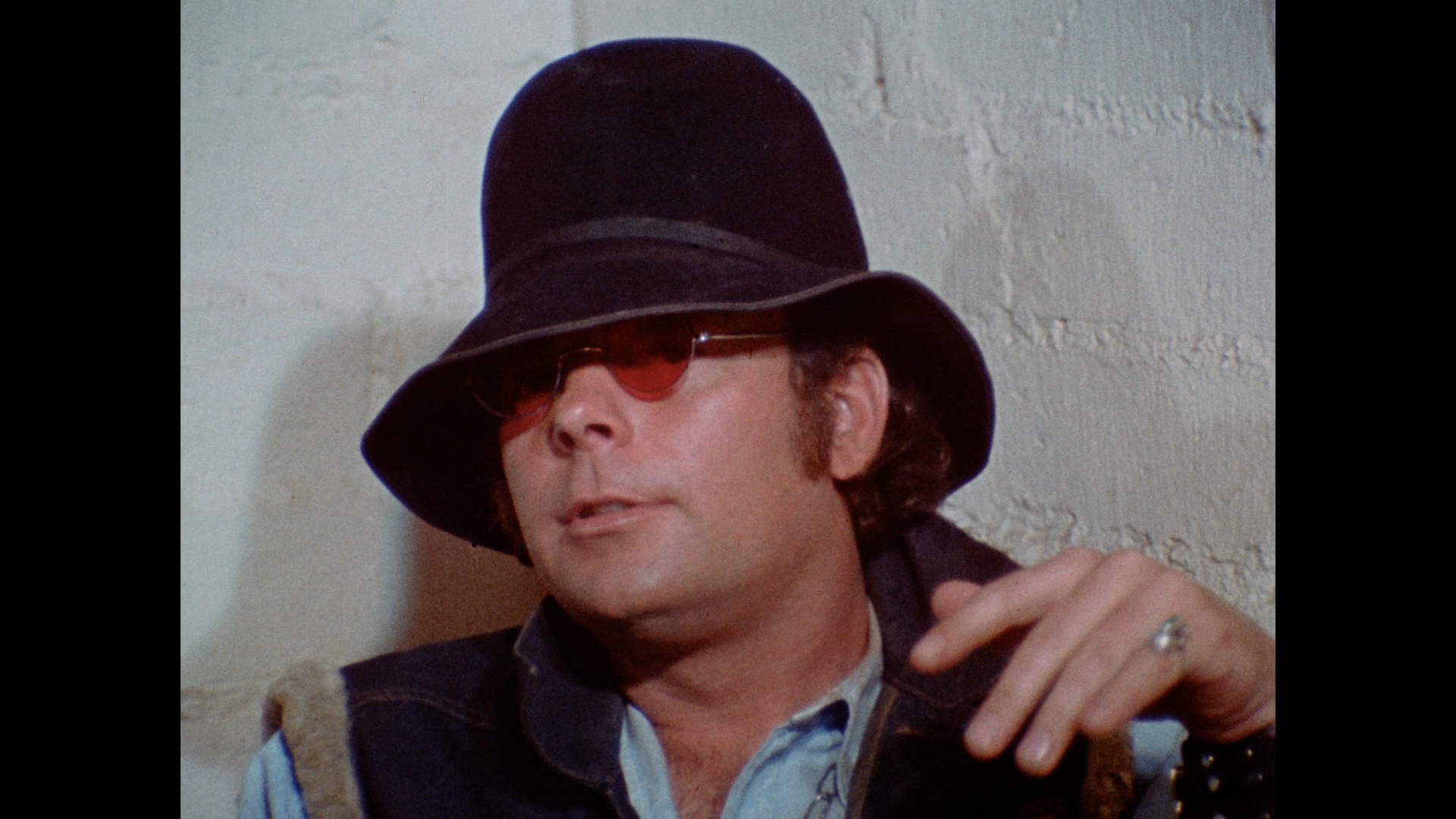 disc is Adamson's Brain of Blood, with a transfer and extras identical to the presentation in Severin's earlier Hemisphere Horrors box (including a Sherman commentary, "Memories of Blood"
disc is Adamson's Brain of Blood, with a transfer and extras identical to the presentation in Severin's earlier Hemisphere Horrors box (including a Sherman commentary, "Memories of Blood" 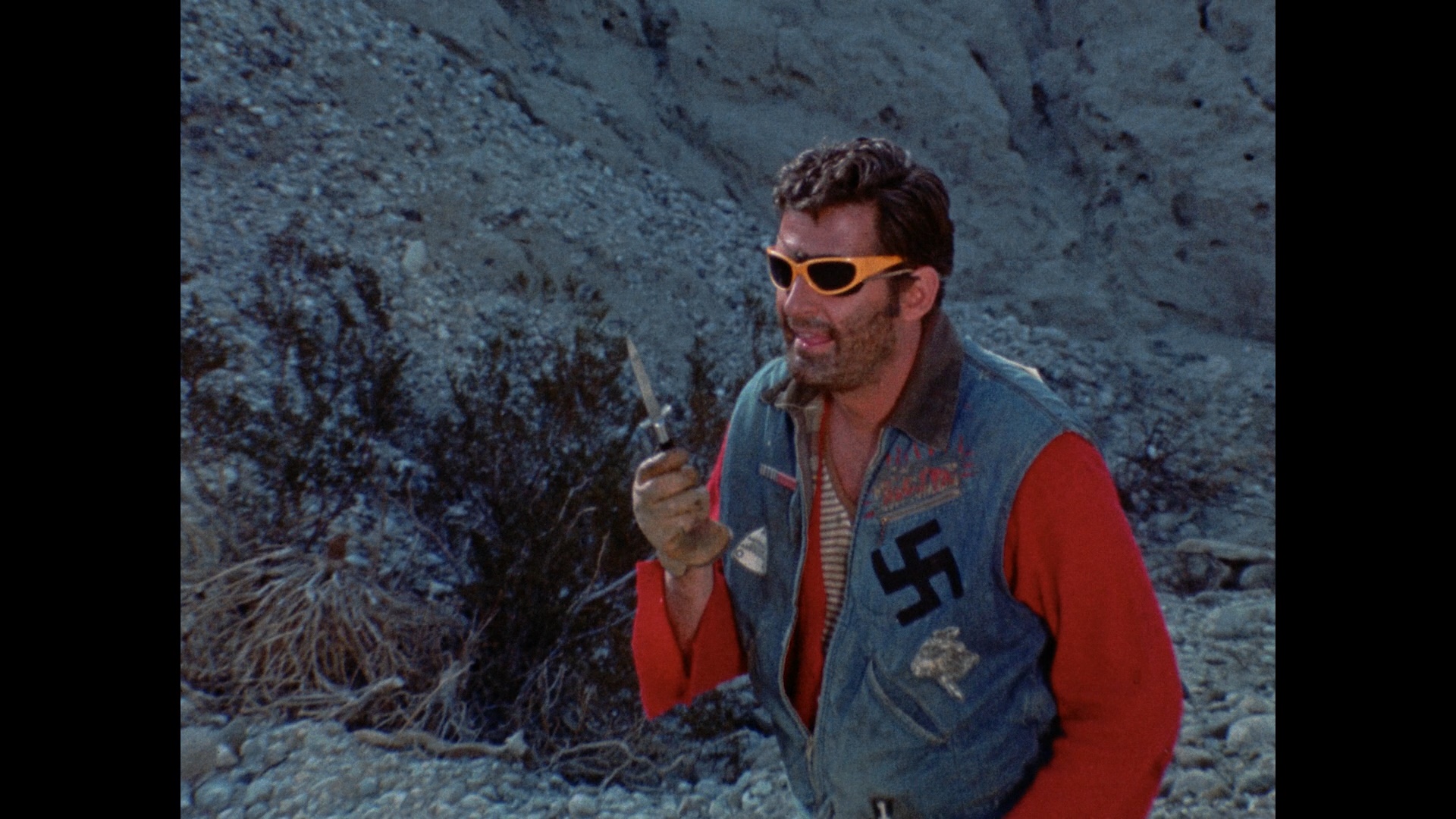 featurette, the trailer, and a TV spot).
featurette, the trailer, and a TV spot).
Of course, Adamson did eventually get around to real biker movies at just the right time to strike box office gold. Cast in point on disc seven: Satan's Sadists, a scuzzy and diverting 1969 offering made in the immediate wake of Easy Rider. This would actually be his first bona fide collaboration with Tamblyn, who was still famous-ish at the time for appearing in West Side Story and Seven Brides for Seven Brothers and whose physicality came in handy for the film's rough and tumble fight sequences. Reissued well into the early '80s, this is also Adamson's most relentlessly violent film as it charts the destruction unleashed by Anchor (Tamblyn) and his biker gang, the Satans, on the residents of a California desert area including any hapless couples who end up in their path. En route to L.A., former Marine Johnny (Kent) ends up escaping one of their attacks along with waitress Tracy (Jacqueline Cole) and uses his well-honed, Rambo-esque survival skills to fight back.
Shot in 16mm and blown up for theatrical exhibition, this film is unusually cynical for Adamson and company as it offers a good opportunity to see his stock players (including Cardos, Clark, and Dix) back in the saddle again. The arid location photography (including the Spahn Ranch again during the Manson family occupation) is 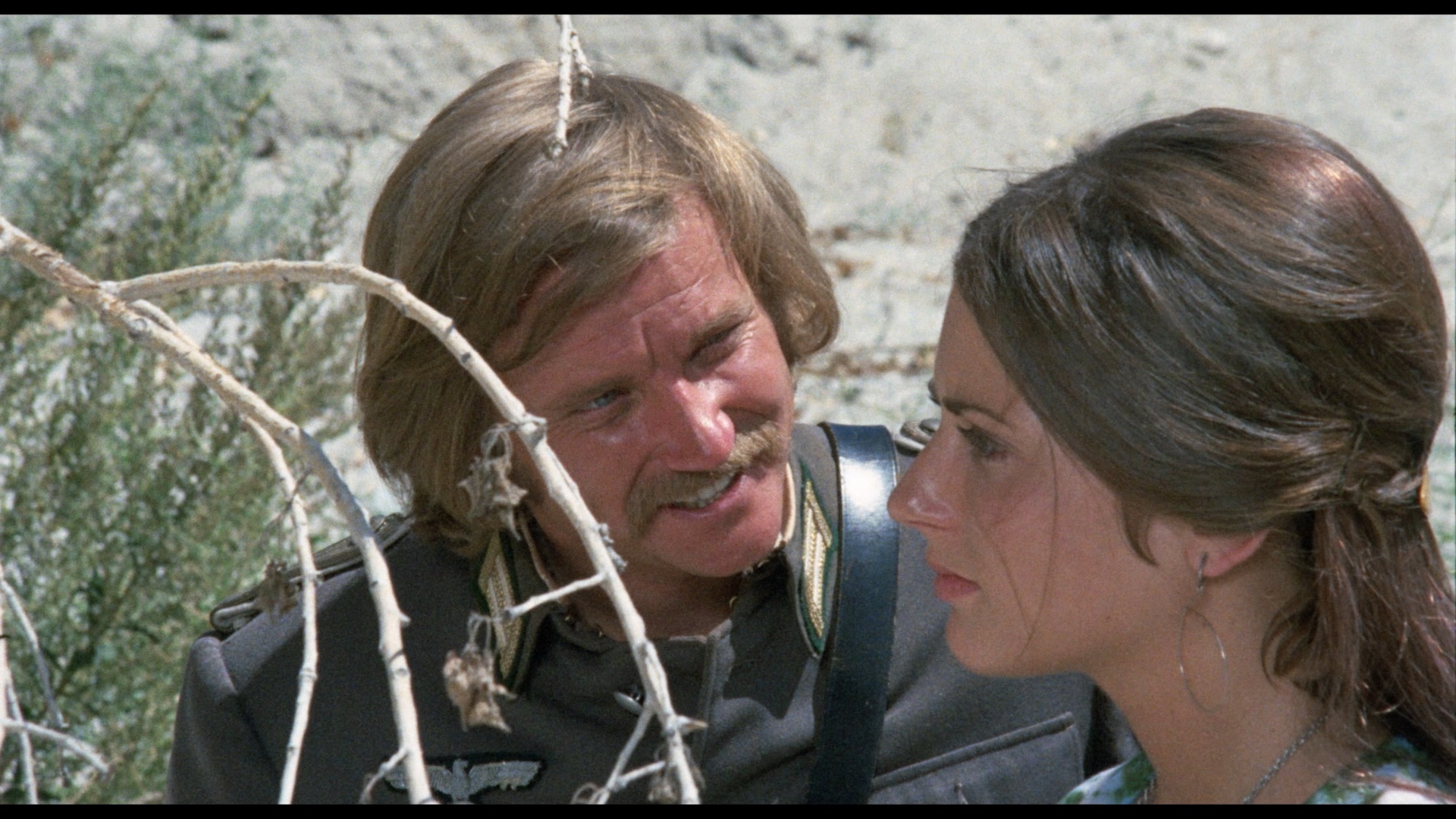 actually unnerving and very evocative
actually unnerving and very evocative 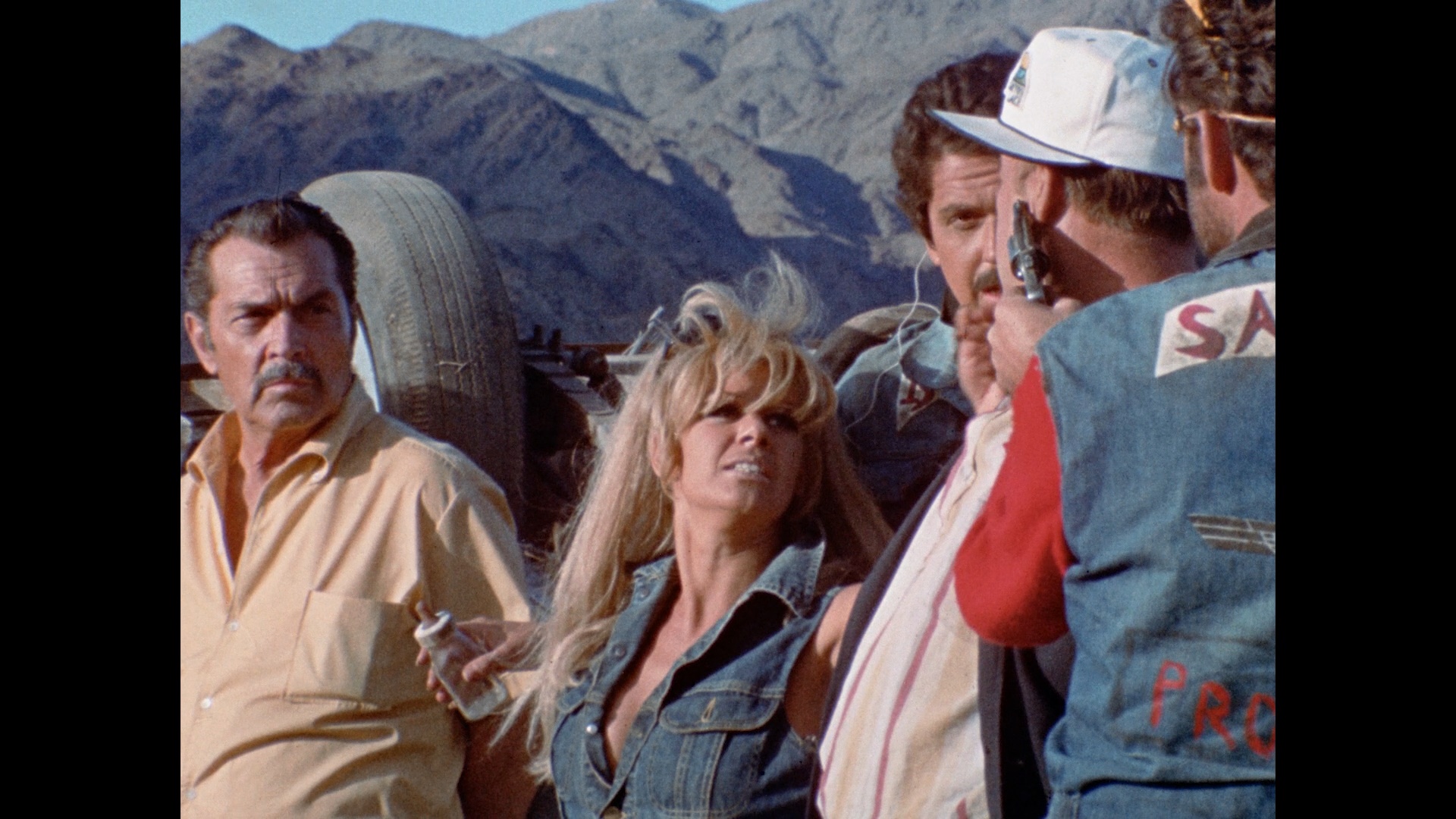 here, and the story moves along at a fast, ruthless pace backed by a heavy psychedelic percussive score. Also released as a Troma DVD in 2006 in a dreary transfer from an old tape master, this one has gotten a nice revisit here with a fresh open matte scan of a 35mm interpositive; it's a big leap from what we've had before and looks nice and crisp throughout. Ported over from the DVD is a partial Sherman commentary plus a reel of silent outtakes (8m57s) and a trailer, TV spots, and radio spot. The extensive and enjoyable radio interview with Regina Carroll remains exclusive to the Troma release, so collectors take note.
here, and the story moves along at a fast, ruthless pace backed by a heavy psychedelic percussive score. Also released as a Troma DVD in 2006 in a dreary transfer from an old tape master, this one has gotten a nice revisit here with a fresh open matte scan of a 35mm interpositive; it's a big leap from what we've had before and looks nice and crisp throughout. Ported over from the DVD is a partial Sherman commentary plus a reel of silent outtakes (8m57s) and a trailer, TV spots, and radio spot. The extensive and enjoyable radio interview with Regina Carroll remains exclusive to the Troma release, so collectors take note.
Also on the same disc is the far more obscure Angel's Wild Women, which straggled along in 1972 as the demand for biker films was waning very quickly. Also shot at the Spahn Ranch and paired up in its initial run with Adamson's other biker movies, this one was produced after the Manson slayings and reflects that with the addition of a hippie cult run by King (William Bonner). The bulk of it plays out like a nicer version of H.G. Lewis' She-Devils on Wheels as a chain-wielding girl biker gang operating ostensibly at the behest of Speed (Ross Hagen) get into lots of trouble and spend their down time improvising dialogue about their station in life. Loaded with just about all of Adamson's surviving stock players at the time, this is a far more casual hangout film compared to 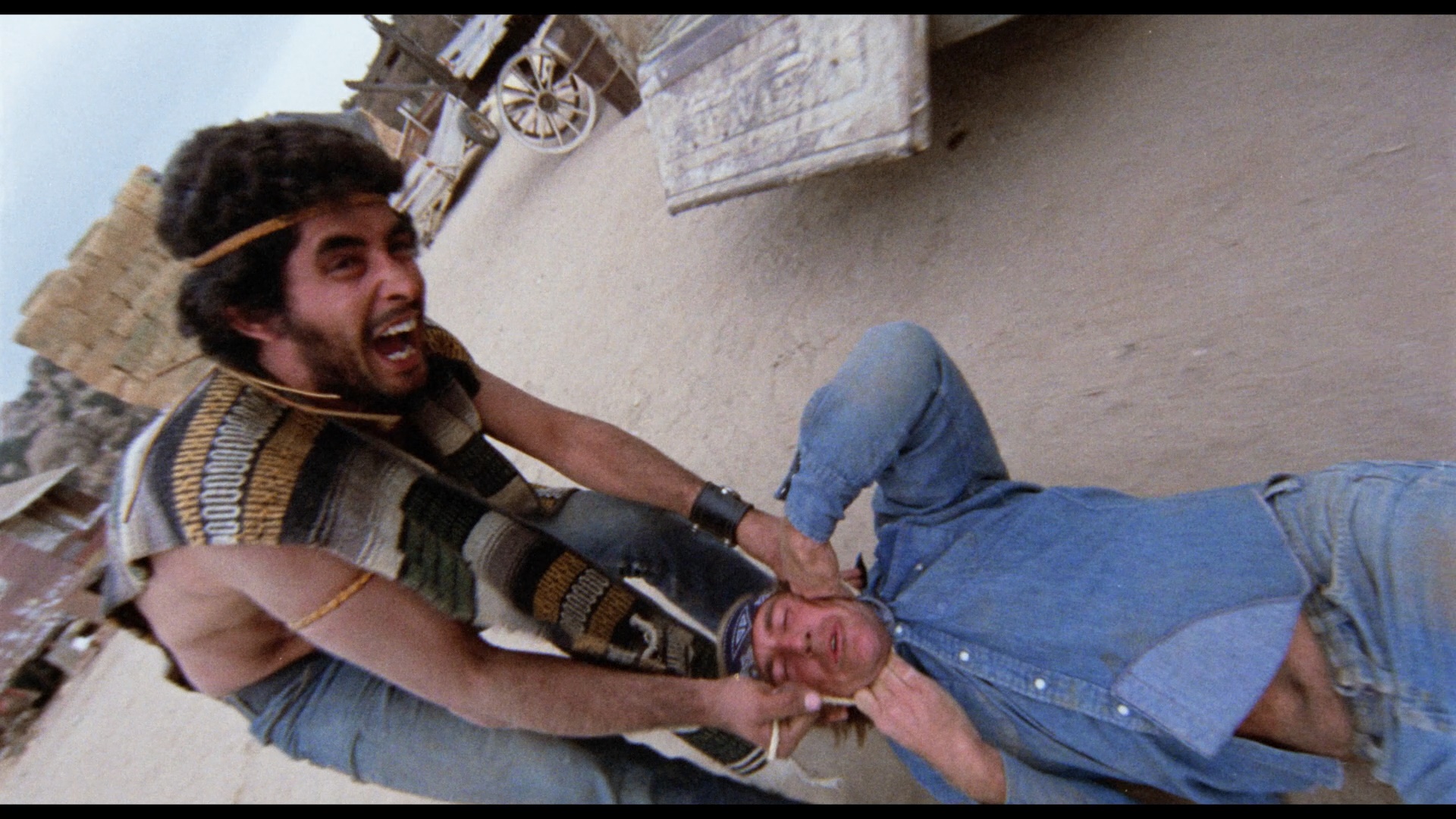 Sadists but has a groove of its own (including copious pot smoking and wide angle lenses) that's quite appealing if you're in the right mood (preferably late at night). This one also hit DVD from Troma (in one iteration as a double feature with Sadists) with a partial Sherman commentary that's carried over for the Blu-ray, which also sports the
Sadists but has a groove of its own (including copious pot smoking and wide angle lenses) that's quite appealing if you're in the right mood (preferably late at night). This one also hit DVD from Troma (in one iteration as a double feature with Sadists) with a partial Sherman commentary that's carried over for the Blu-ray, which also sports the  trailer, a TV spot, and a radio spot. The new transfer from the original camera negative (likely untouched since the '70s) is virtually immaculate and looks fantastic throughout.
trailer, a TV spot, and a radio spot. The new transfer from the original camera negative (likely untouched since the '70s) is virtually immaculate and looks fantastic throughout.
Disc eight (which suffered from a defect in the initial pressing of preorders directly from the company site that rendered that batch unplayable) features two of Adamson's highest profile films of the '70s, 1974's The Naughty Stewardesses and 1975's Blazing Stewardesses, both produced in the wake of Roger Corman's lucrative nurse and stewardess drive-in hits as well as the successful German import, The Swinging Stewardesses. The first film offers a worthwhile showcase for actress Marilyn Joi, a charismatic performer who would work for Adamson several times, as well as the presence of busy exploitation starlet Sandy Carey. Basically it follows the formula of three working girls during a layover in L.A. as they find romance and danger 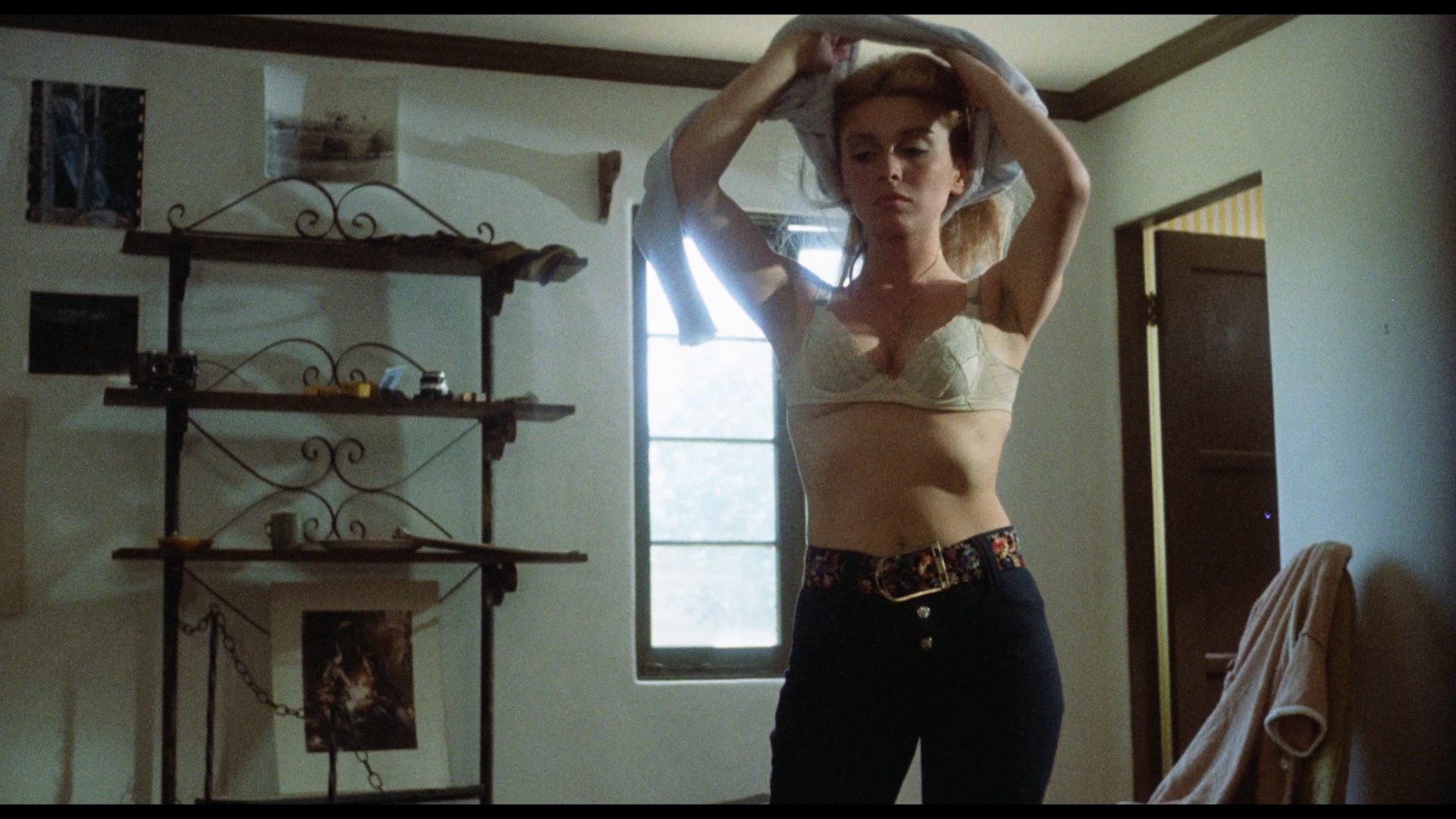 at every turn. Along the way they also cross paths with the underground porn crowd including sleaze regular Richard Smedly as the director of an afternoon quickie called Locked Loins.
at every turn. Along the way they also cross paths with the underground porn crowd including sleaze regular Richard Smedly as the director of an afternoon quickie called Locked Loins.
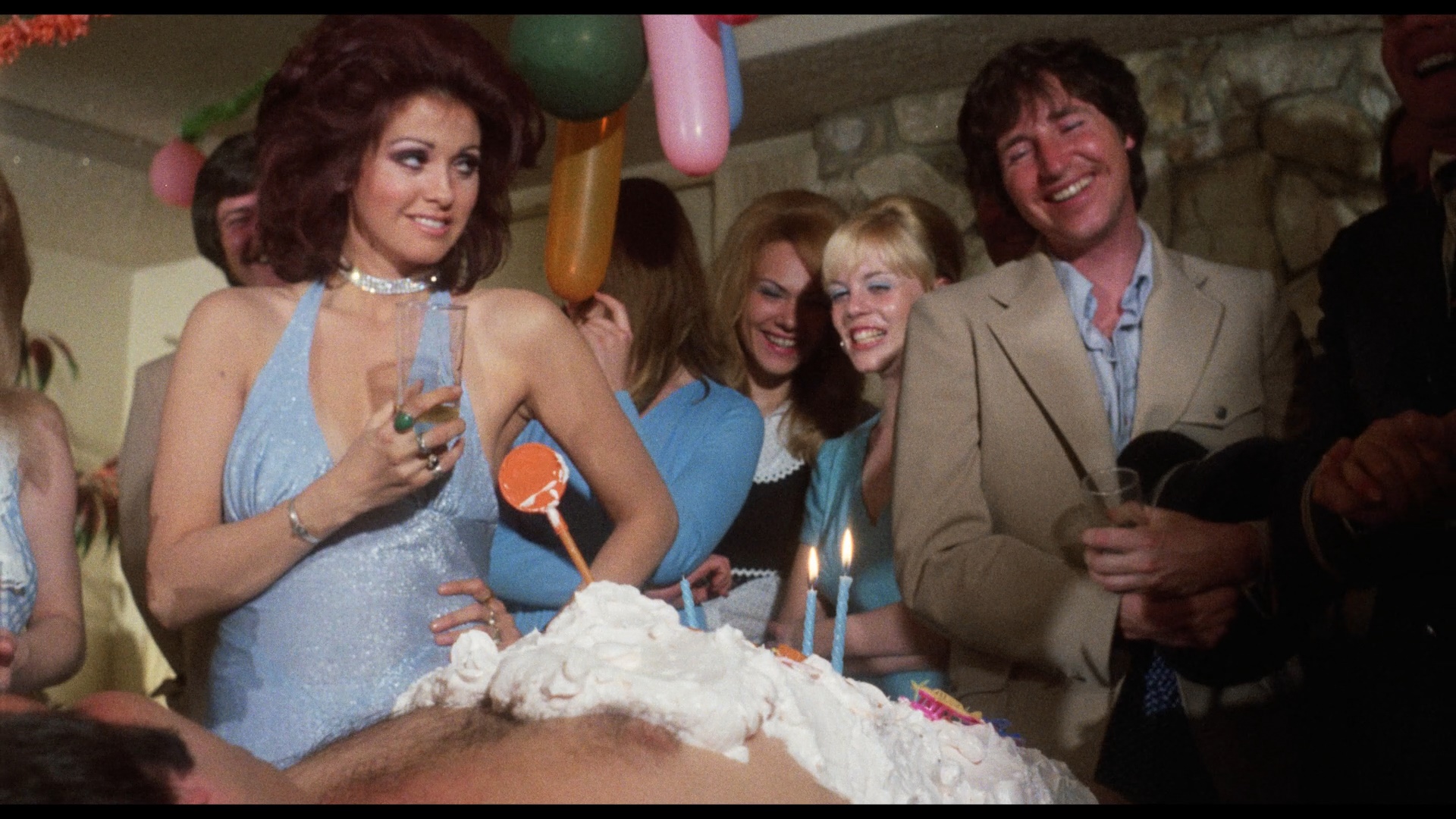 The second film takes the unexpected route of essentially spoofing the material and adding some old school Hollywood star power with, uh, Yvonne De Carlo as a brothel owner and the Ritz Brothers for no discernible reason (stepping in for the original casting choice, the Three Stooges). This time our ladies on leave (Joi again with Carrol and Connie Hoffman) end up at a ranch beset by bandits, with much comic confusion ensuing. Everyone seems to be having a good time with this one, and not surprisingly, Adamson himself ranked it as one of his favorites, likely given that he and Sherman got to cram in about thirty different ideas into one production.
The second film takes the unexpected route of essentially spoofing the material and adding some old school Hollywood star power with, uh, Yvonne De Carlo as a brothel owner and the Ritz Brothers for no discernible reason (stepping in for the original casting choice, the Three Stooges). This time our ladies on leave (Joi again with Carrol and Connie Hoffman) end up at a ranch beset by bandits, with much comic confusion ensuing. Everyone seems to be having a good time with this one, and not surprisingly, Adamson himself ranked it as one of his favorites, likely given that he and Sherman got to cram in about thirty different ideas into one production.
Both films were issued (together and separately) on DVD by Retro-Seduction Cinema, while the Blu-ray features scans from the camera negative except for the inclusion of two bonus "hot" European sequences for both films pulled from other sources; Blazing also has some missing 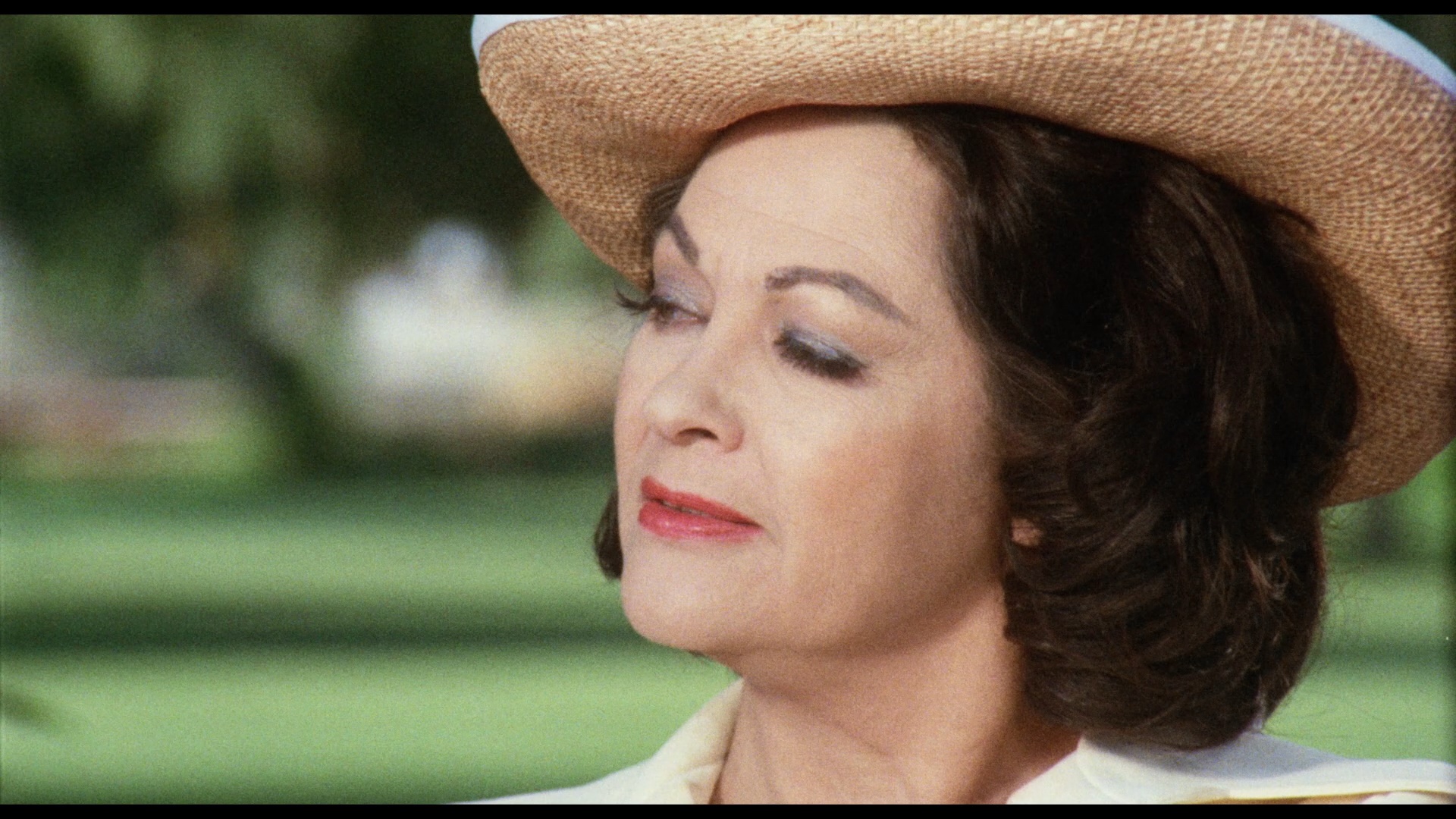 additional material from the neg replaced here via an answer print. Both represent the most complete versions released to date, with Blazing earning extra points for the
additional material from the neg replaced here via an answer print. Both represent the most complete versions released to date, with Blazing earning extra points for the 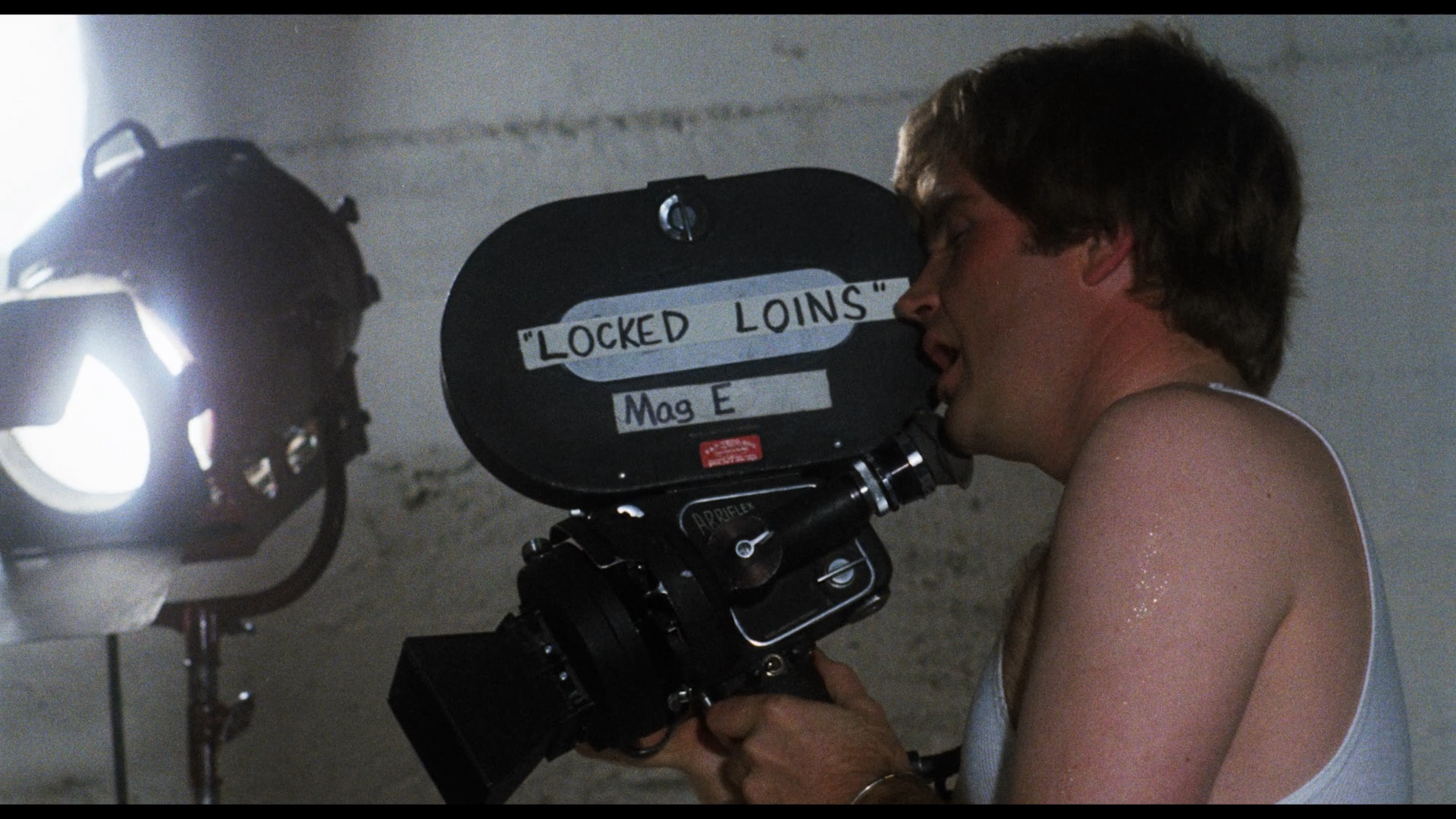 ridiculous upside-down sex scene featuring semi-hardcore actor Sheldon Lee. Both transfers look excellent on the Blu-ray and easily outclass the DVD, while extras include Sherman's commentaries for both films from the DVDs (the Blazing one is the more fascinating as it charts the film's ties to his German imports at the time), a fascinating "Fly Girls" featurette (13m43s) by Kier-La Janisse about stewardessploitation and the real-life cultural shifts behind it from Frank Sinatra to Jimmy Carter, TV and radio spots, trailers, a combo trailer, and an alternate Blazing title sequence as The Great Truck Robbery. You also get a Females for Hire combo TV spot and the extra scenes directed by Adamson for Independent International's German acquisition, Bedroom Stewardesses (18m22s), which is a whole lot less salacious than you'd expect but fascinating as a kind of fractured short film on its own.
ridiculous upside-down sex scene featuring semi-hardcore actor Sheldon Lee. Both transfers look excellent on the Blu-ray and easily outclass the DVD, while extras include Sherman's commentaries for both films from the DVDs (the Blazing one is the more fascinating as it charts the film's ties to his German imports at the time), a fascinating "Fly Girls" featurette (13m43s) by Kier-La Janisse about stewardessploitation and the real-life cultural shifts behind it from Frank Sinatra to Jimmy Carter, TV and radio spots, trailers, a combo trailer, and an alternate Blazing title sequence as The Great Truck Robbery. You also get a Females for Hire combo TV spot and the extra scenes directed by Adamson for Independent International's German acquisition, Bedroom Stewardesses (18m22s), which is a whole lot less salacious than you'd expect but fascinating as a kind of fractured short film on its own.
Adamson's '70s output took a really odd turn as evidenced by disc nine, which starts off with a film well known to '80s VHS junkies as I Spit on Your Corpse! Actually titled Girls for Rent here and on its initial release, this is easily one of Adamson's best films and an unlikely starring vehicle for none other than Georgina Spelvin, 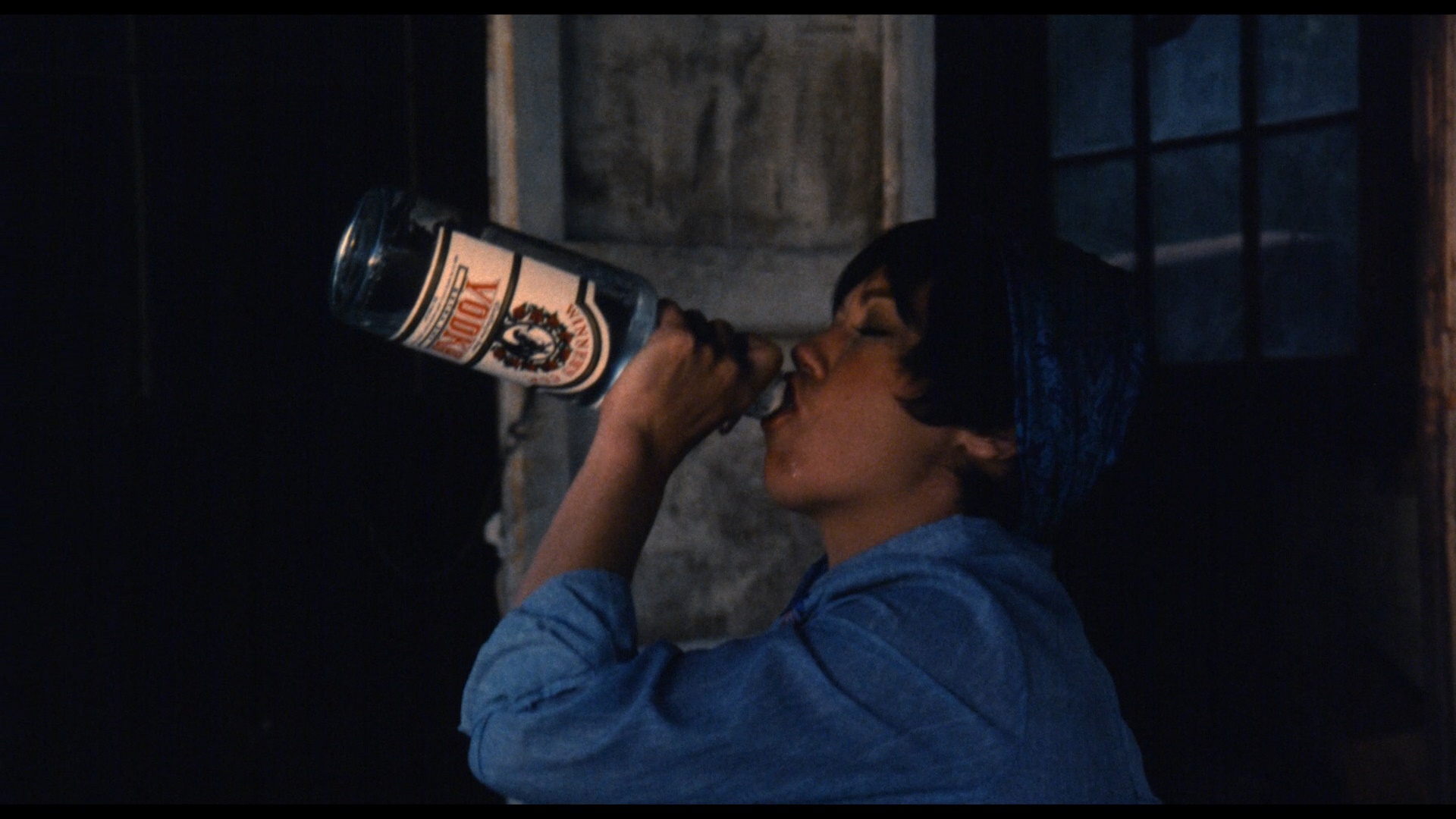 the legendary star of the porno chic classic Devil in Miss Jones.
the legendary star of the porno chic classic Devil in Miss Jones. 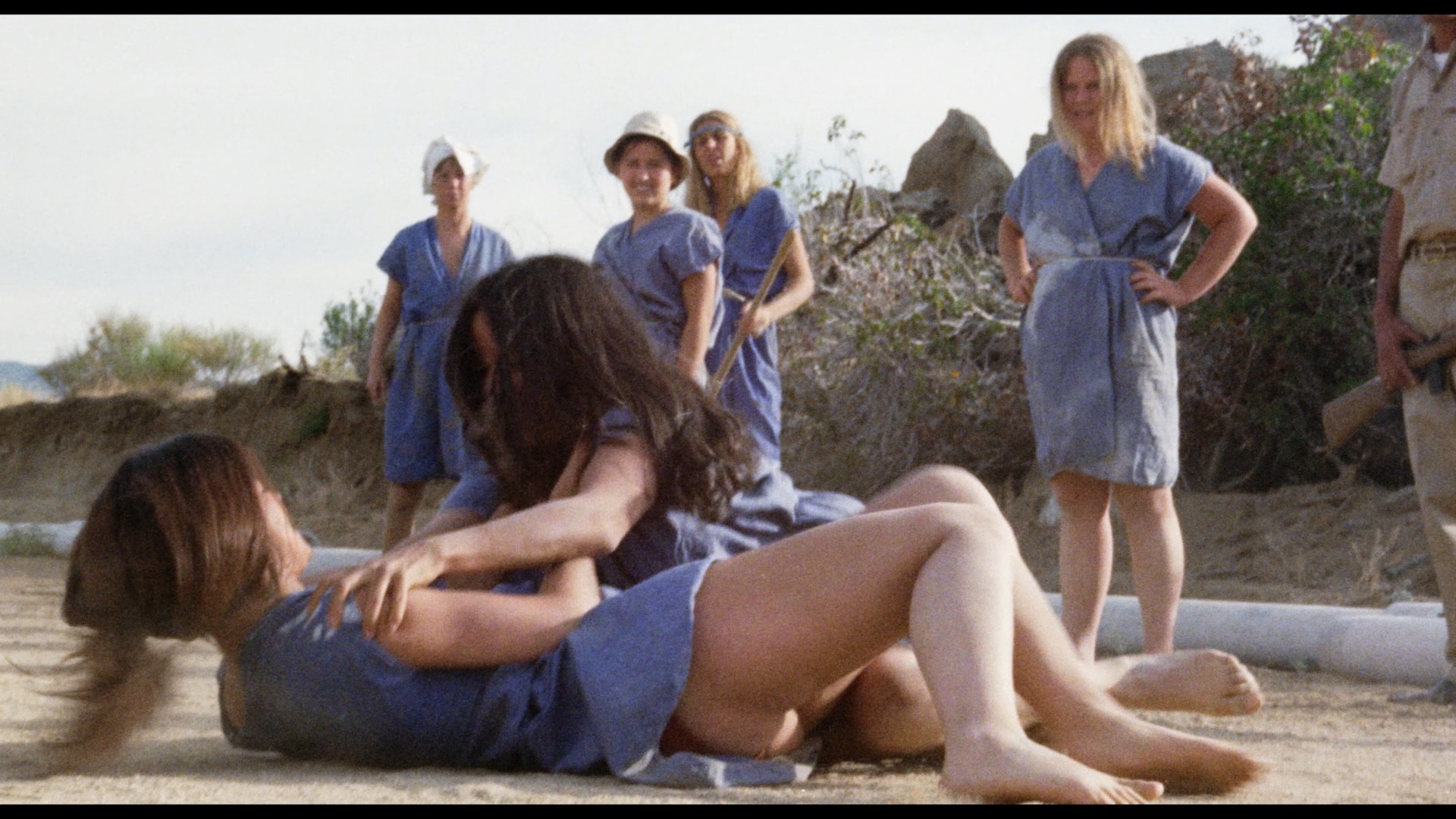 (There's also a small role for The Private Afternoons of Pamela Mann's Barbara Bourbon, who was mainly the makeup girl on the set, and the "Door to Paradise" library track theme from that film also turns up as the main title music here, weirdly enough). Here Spelvin plays Sandra, a former madam who gets sprung from jail via a conveniently staged cat fight to become a paid assassin(!) thanks to her cunning mind and solid sense of discretion. After setting up a job against a politicians, she ends up pursuing Susie (Susie Ewing, a.k.a. Susan McIver) across various dusty locales to silence her role in the murder for hire plot. Violent and pretty taut by Adamson standards, this one also has some Russ Meyer echoes at times (especially a visit to a ranch run by a creepy old rancher and his mentally addled son) and even a bit of a spaghetti western vibe at times. The new transfer from the negative here is a bit of an eye opener compared to the grungy old VHS and DVD editions, again looking quite fresh and striking, though a significant chunk in the middle was missing and had to be replaced via a more faded print (which still looks better than what we had before).
(There's also a small role for The Private Afternoons of Pamela Mann's Barbara Bourbon, who was mainly the makeup girl on the set, and the "Door to Paradise" library track theme from that film also turns up as the main title music here, weirdly enough). Here Spelvin plays Sandra, a former madam who gets sprung from jail via a conveniently staged cat fight to become a paid assassin(!) thanks to her cunning mind and solid sense of discretion. After setting up a job against a politicians, she ends up pursuing Susie (Susie Ewing, a.k.a. Susan McIver) across various dusty locales to silence her role in the murder for hire plot. Violent and pretty taut by Adamson standards, this one also has some Russ Meyer echoes at times (especially a visit to a ranch run by a creepy old rancher and his mentally addled son) and even a bit of a spaghetti western vibe at times. The new transfer from the negative here is a bit of an eye opener compared to the grungy old VHS and DVD editions, again looking quite fresh and striking, though a significant chunk in the middle was missing and had to be replaced via a more faded print (which still looks better than what we had before).
Accompanying that film on the same disc is Jessi's Girls, Adamson's return to both the western and girl gang concepts but here under the auspices of up and coming drive-in force Manson 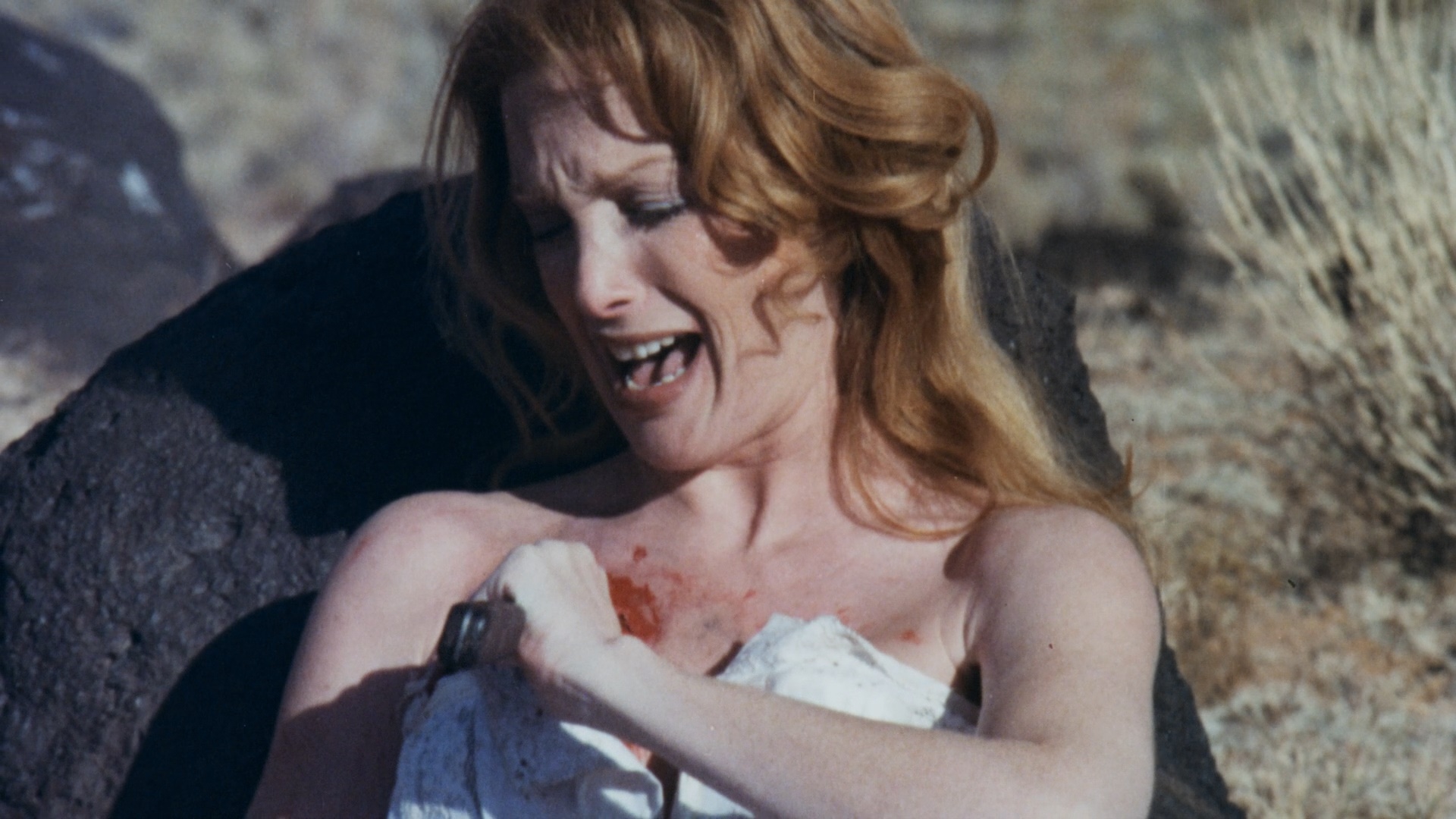 Distributing instead of Independent International. The still busy Sondra Currie (Policewomen, Mama's Dirty Girls) stars as Jessica, a Mormon on
Distributing instead of Independent International. The still busy Sondra Currie (Policewomen, Mama's Dirty Girls) stars as Jessica, a Mormon on 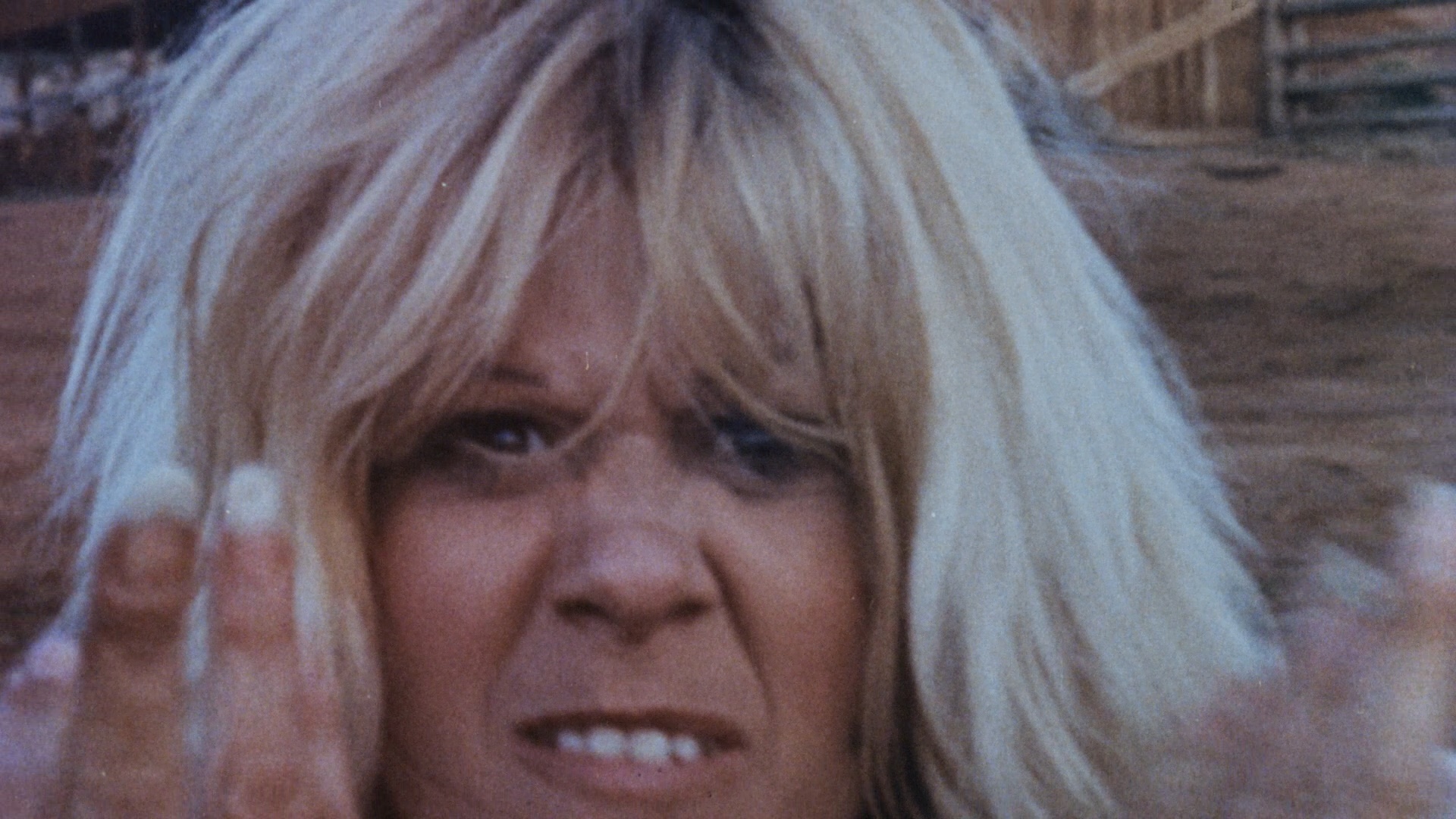 her way to Utah with her ill-fated husband who gets killed off in an ambush. Shot and left for dead as well following a vicious sexual assault, Jessica vows revenge and teams up with a traveling sheriff (Land again) and his three female convicts in transit (including Jennifer Bishop and Regina Carrol, the latter doing her first and only, body double-assisted sex scene). Much violence and backstabbing soon follows. The obligatory Hollywood old timer this time is onetime oater star Rod Cameron, and the tone here feels like an updating of Five Bloody Graves with a stronger emphasis on exploitation than before even if the film itself doesn't feel all that strong (after the initial attack, anyway). Currie is solid as always and manages to wield a mean rifle, and Adamson makes the most out of his arid desert locales as usual. This was actually one of the first Adamson films out of the gate in HD thanks to a streaming option offered from Multicom; that transfer from what are presumably the best print elements still around looks fine if a bit faded and fares better here than the online option thanks to the more generous bit rate.
her way to Utah with her ill-fated husband who gets killed off in an ambush. Shot and left for dead as well following a vicious sexual assault, Jessica vows revenge and teams up with a traveling sheriff (Land again) and his three female convicts in transit (including Jennifer Bishop and Regina Carrol, the latter doing her first and only, body double-assisted sex scene). Much violence and backstabbing soon follows. The obligatory Hollywood old timer this time is onetime oater star Rod Cameron, and the tone here feels like an updating of Five Bloody Graves with a stronger emphasis on exploitation than before even if the film itself doesn't feel all that strong (after the initial attack, anyway). Currie is solid as always and manages to wield a mean rifle, and Adamson makes the most out of his arid desert locales as usual. This was actually one of the first Adamson films out of the gate in HD thanks to a streaming option offered from Multicom; that transfer from what are presumably the best print elements still around looks fine if a bit faded and fares better here than the online option thanks to the more generous bit rate.
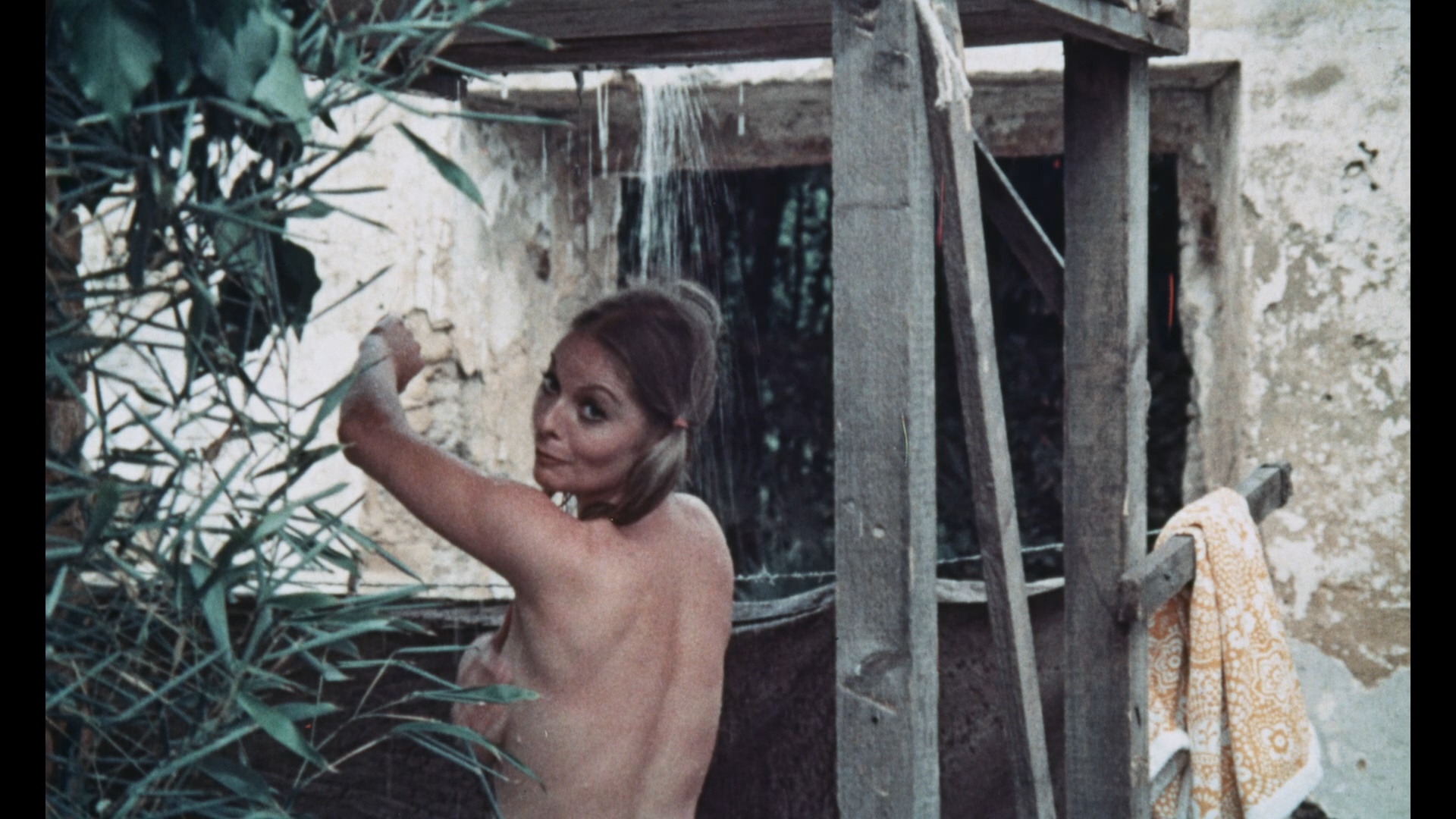 A third feature is also on here, and it's a real puzzler: Nurses for Sale, yet another German import from 1971 directed by Rolf Olsen that was pulled in
A third feature is also on here, and it's a real puzzler: Nurses for Sale, yet another German import from 1971 directed by Rolf Olsen that was pulled in 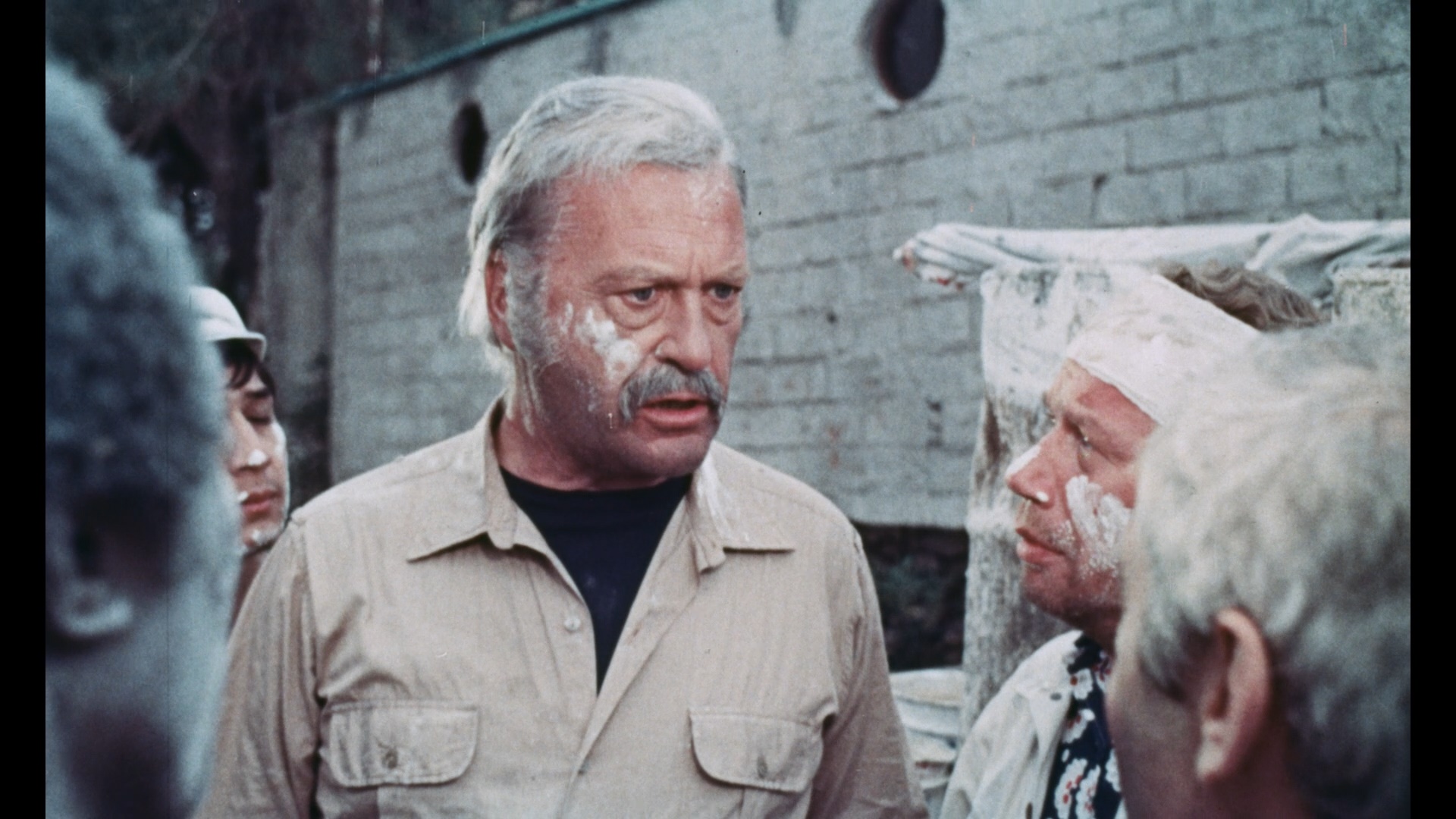 by Independent International to ride the success of Girls for Sale (and its II forerunner, the German hit Women for Sale, a.k.a. The Young Tigers of Hong Kong). Future James Bond villain Curd Jurgens headlines here as a captain who has to step in time to time to help some sexy nurses heading to the jungle who get into trouble with local mercenaries. Unfortunately the original film has been hacked down to less than an hour, with ten minutes of new Adamson footage to flesh out the nurses' characters (mostly their sex lives) added to make it easier to sell to American viewers. The result is truly bewildering and blatantly suffers from the heavy cutting, resulting in a film that feels more like a deranged lengthy trailer than a real movie. The transfer here comes from a theatrical print and, as they say, looks very grindhouse. Consider this more of a glorified bonus feature than a real movie. Girls for Rent gets the lion's share of the extras including Sherman's audio commentary from the DVD release, an alternate title sequence as I Spit on Your Corpse!, a TV spot, a trailer, and a spot; also included are the Nurses for Sale and Jessi's Girls theatrical trailers.
by Independent International to ride the success of Girls for Sale (and its II forerunner, the German hit Women for Sale, a.k.a. The Young Tigers of Hong Kong). Future James Bond villain Curd Jurgens headlines here as a captain who has to step in time to time to help some sexy nurses heading to the jungle who get into trouble with local mercenaries. Unfortunately the original film has been hacked down to less than an hour, with ten minutes of new Adamson footage to flesh out the nurses' characters (mostly their sex lives) added to make it easier to sell to American viewers. The result is truly bewildering and blatantly suffers from the heavy cutting, resulting in a film that feels more like a deranged lengthy trailer than a real movie. The transfer here comes from a theatrical print and, as they say, looks very grindhouse. Consider this more of a glorified bonus feature than a real movie. Girls for Rent gets the lion's share of the extras including Sherman's audio commentary from the DVD release, an alternate title sequence as I Spit on Your Corpse!, a TV spot, a trailer, and a spot; also included are the Nurses for Sale and Jessi's Girls theatrical trailers.
Of 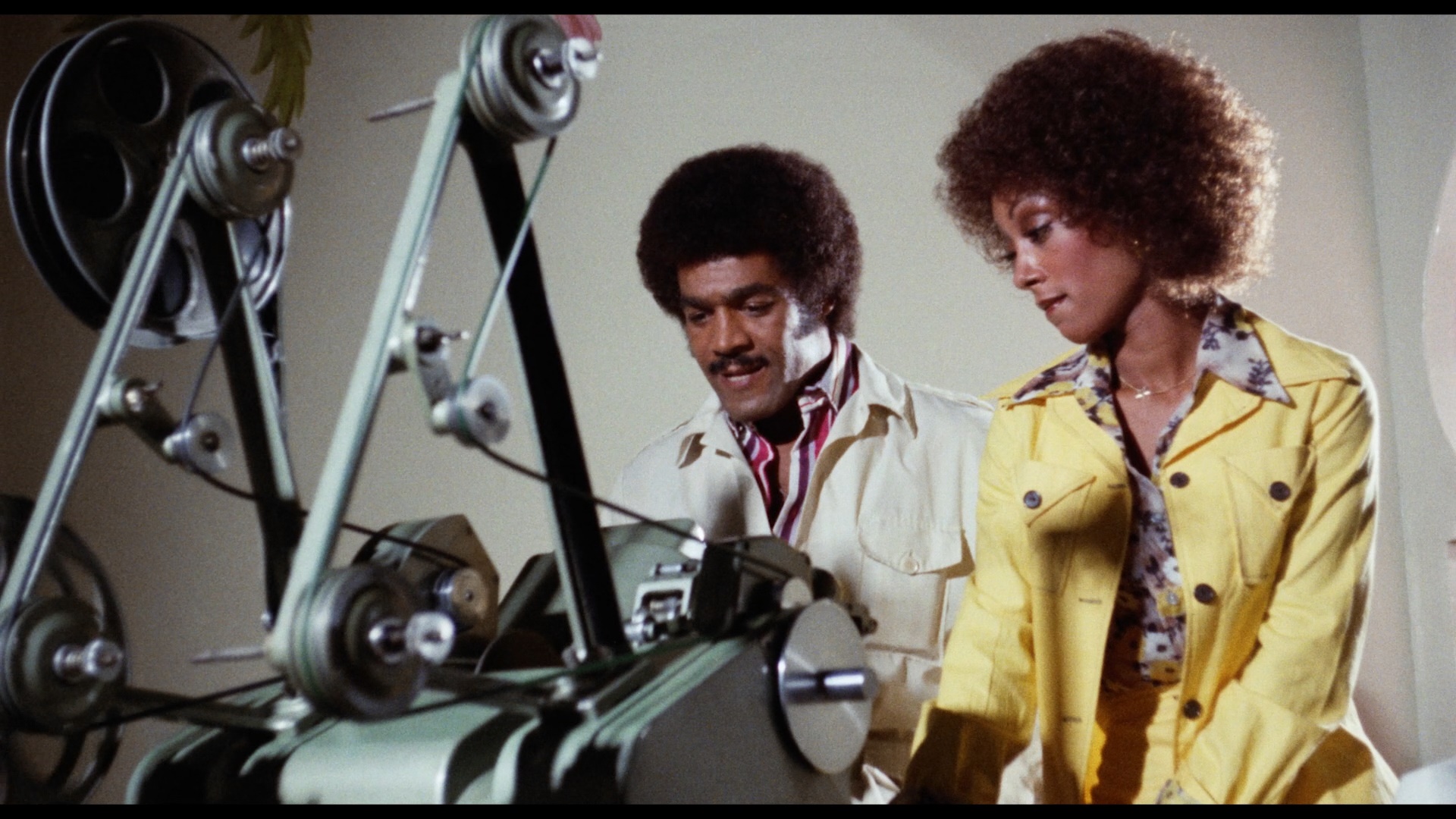 c ourse, as inevitable as it was that Adamson would dip his toes into the biker and stewardess fads, he would also have to take a shot at one of the biggest box office juggernauts of
c ourse, as inevitable as it was that Adamson would dip his toes into the biker and stewardess fads, he would also have to take a shot at one of the biggest box office juggernauts of 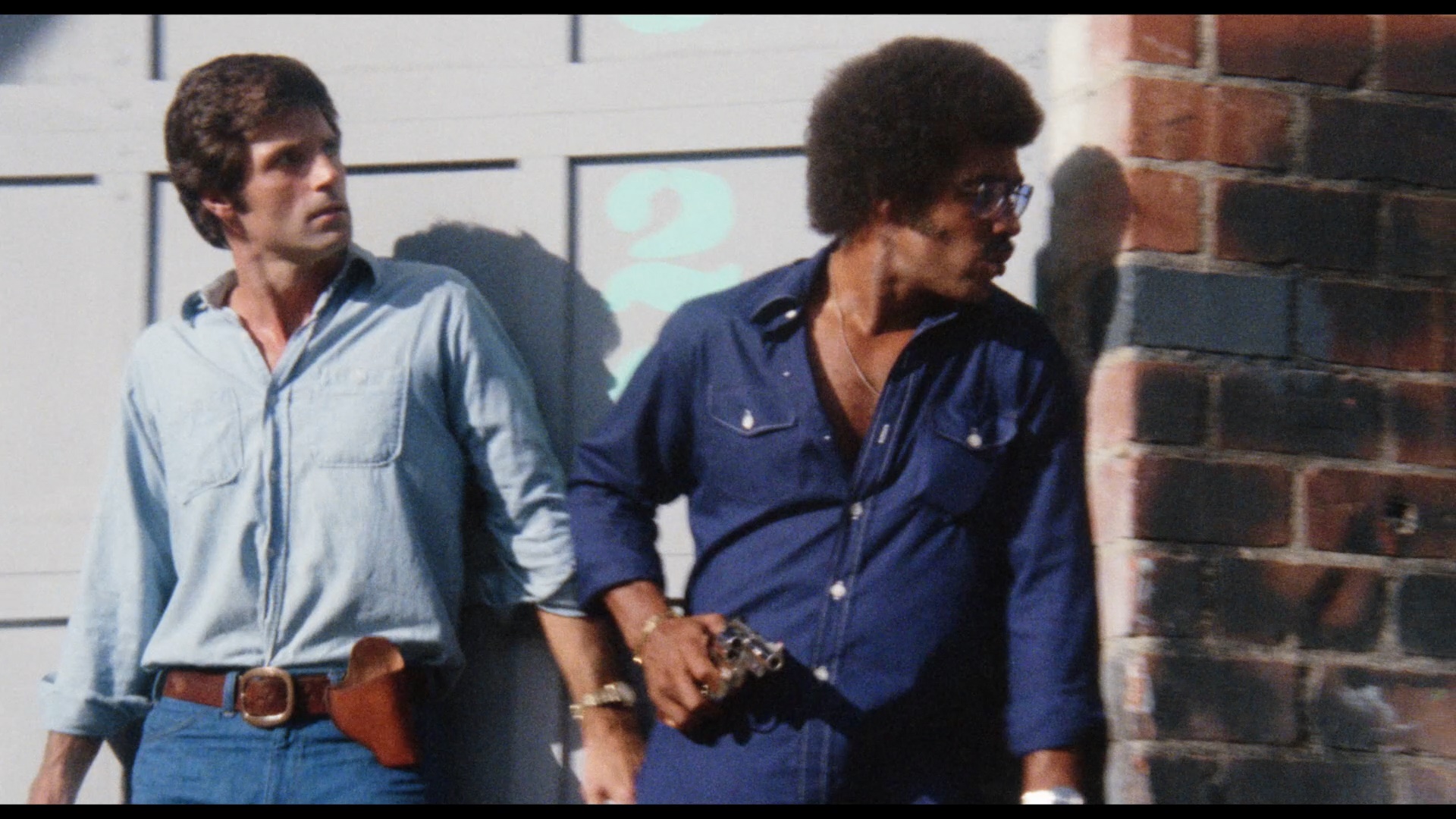 the mid-'70s: blaxploitation. His contributions in this set come a bit out of chronological sequence and are placed more for ideal viewing enjoyment, staring off with disc ten's Black Heat (also released under other titles like The Murder Gang, Girls' Hotel, and Syndicate Vice). The gist here involves black cop Kicks (NFL player Timothy Brown) and his white partner, Tony (Land), who know the streets of L.A. and all the seedy characters populating it. The biggest thorn in their side is Ziggy (Tamblyn in his last Adamson outing), a weapons and drug operator who strikes a little too close to home. Unfazed by this lawless disrespect for human life, Kicks uses his girlfriend (Tanya Boyd) to get the dirt on Ziggy at a nightclub (which employs Regina Carrol as a showgirl, of course). Mayhem ensues on the way to a climax that smacks more than a little bit of Foxy Brown. The treatment of women here is definitely not in keeping with today's climate, but Adamson really seems to be in his element here with a nutty crime story that particularly lets Tamblyn off the leash with a wild-eyed performance (and hairdo) that has to be seen to be believed. Transferred from the original camera negative, this is one of the strongest looking titles in the set with a shocking amount of detail and depth on display, especially if you've seen this in any past editions. It's a real beauty. A partial Sherman commentary is ported over from the earlier Shock-o-Rama DVD (mainly focusing on the odd genesis of the film and the reason for its multiple ad campaigns depending on the territory), an aspect reflected in the two trailers, the alternate Murder Gang opener, and most valuable by far, the surviving extra opening shot for the Girls' Hotel version (6m41s) with Land and Carrol on hand to play up the prostitution angle (though not very explicitly).
the mid-'70s: blaxploitation. His contributions in this set come a bit out of chronological sequence and are placed more for ideal viewing enjoyment, staring off with disc ten's Black Heat (also released under other titles like The Murder Gang, Girls' Hotel, and Syndicate Vice). The gist here involves black cop Kicks (NFL player Timothy Brown) and his white partner, Tony (Land), who know the streets of L.A. and all the seedy characters populating it. The biggest thorn in their side is Ziggy (Tamblyn in his last Adamson outing), a weapons and drug operator who strikes a little too close to home. Unfazed by this lawless disrespect for human life, Kicks uses his girlfriend (Tanya Boyd) to get the dirt on Ziggy at a nightclub (which employs Regina Carrol as a showgirl, of course). Mayhem ensues on the way to a climax that smacks more than a little bit of Foxy Brown. The treatment of women here is definitely not in keeping with today's climate, but Adamson really seems to be in his element here with a nutty crime story that particularly lets Tamblyn off the leash with a wild-eyed performance (and hairdo) that has to be seen to be believed. Transferred from the original camera negative, this is one of the strongest looking titles in the set with a shocking amount of detail and depth on display, especially if you've seen this in any past editions. It's a real beauty. A partial Sherman commentary is ported over from the earlier Shock-o-Rama DVD (mainly focusing on the odd genesis of the film and the reason for its multiple ad campaigns depending on the territory), an aspect reflected in the two trailers, the alternate Murder Gang opener, and most valuable by far, the surviving extra opening shot for the Girls' Hotel version (6m41s) with Land and Carrol on hand to play up the prostitution angle (though not very explicitly). 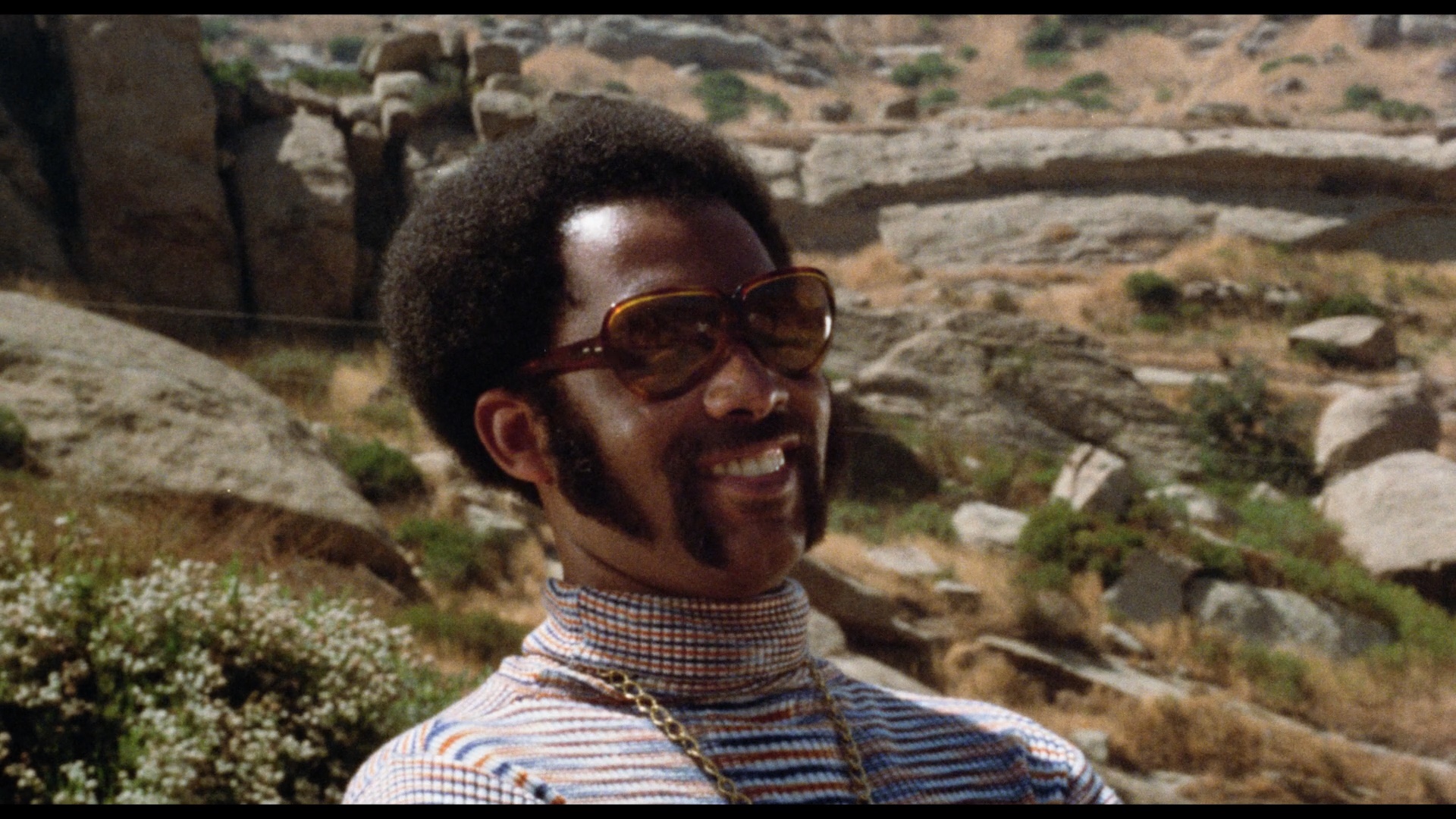
 On the same disc is a more unorthodox blaxploitation title, The Dynamite Brothers, which collides with that other big city box office draw, martial arts. Brown returns here (though this was shot two years earlier) as Stud Brown, who gets framed for a crime he didn't commit and ends up handcuffed to Larry (Alan Tang), who's recently come to California looking for his missing brother (though not for the reasons you might assume). Naturally Larry is highly skilled in kung fu and makes for the perfect opponent for the bad guys run by that dirty cop, Burke (Aldo Ray), and the mastermind behind it all, Wei Chin (James Hong!). Though clunkyly shot, this one absolutely delivers on the action front due to the wise decision to bring in a number of Hong King cinema stunt men who ramp up the excitement level considerably. There's nothing here plot-wise that will take you even remotely by surprise, but as a showcase for Tang and company, it's a pretty solid night of kung fu cinema viewing. Fortunately the camera negative for this one survived intact as well and makes for a gorgeous presentation here; the opening titles alone are filled with lustrous primary colors that set the tone for what amounts to a live action comic book. TV spots are included under the original title and a reissue as Stud Brown.
On the same disc is a more unorthodox blaxploitation title, The Dynamite Brothers, which collides with that other big city box office draw, martial arts. Brown returns here (though this was shot two years earlier) as Stud Brown, who gets framed for a crime he didn't commit and ends up handcuffed to Larry (Alan Tang), who's recently come to California looking for his missing brother (though not for the reasons you might assume). Naturally Larry is highly skilled in kung fu and makes for the perfect opponent for the bad guys run by that dirty cop, Burke (Aldo Ray), and the mastermind behind it all, Wei Chin (James Hong!). Though clunkyly shot, this one absolutely delivers on the action front due to the wise decision to bring in a number of Hong King cinema stunt men who ramp up the excitement level considerably. There's nothing here plot-wise that will take you even remotely by surprise, but as a showcase for Tang and company, it's a pretty solid night of kung fu cinema viewing. Fortunately the camera negative for this one survived intact as well and makes for a gorgeous presentation here; the opening titles alone are filled with lustrous primary colors that set the tone for what amounts to a live action comic book. TV spots are included under the original title and a reissue as Stud Brown.
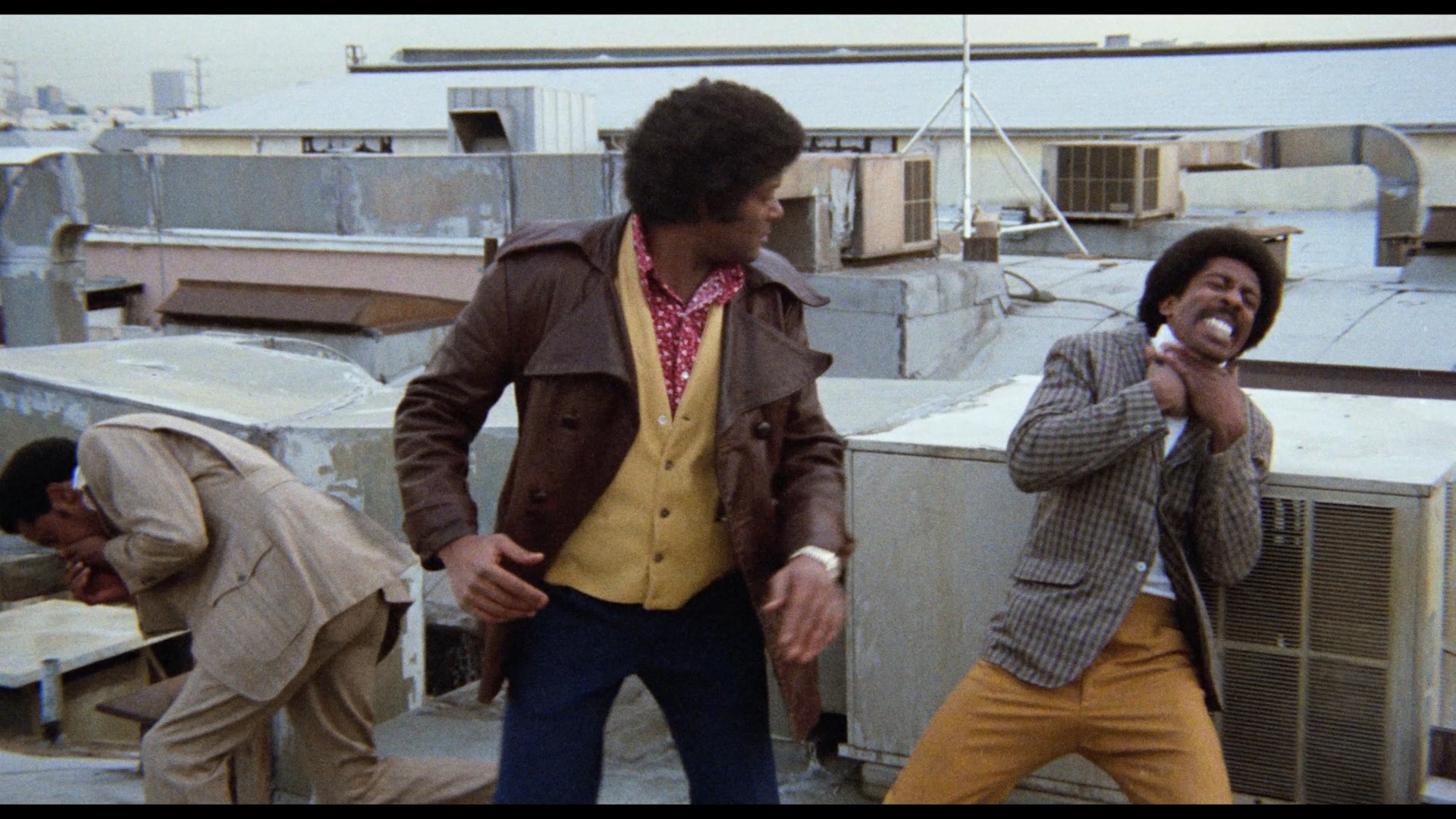 If
If 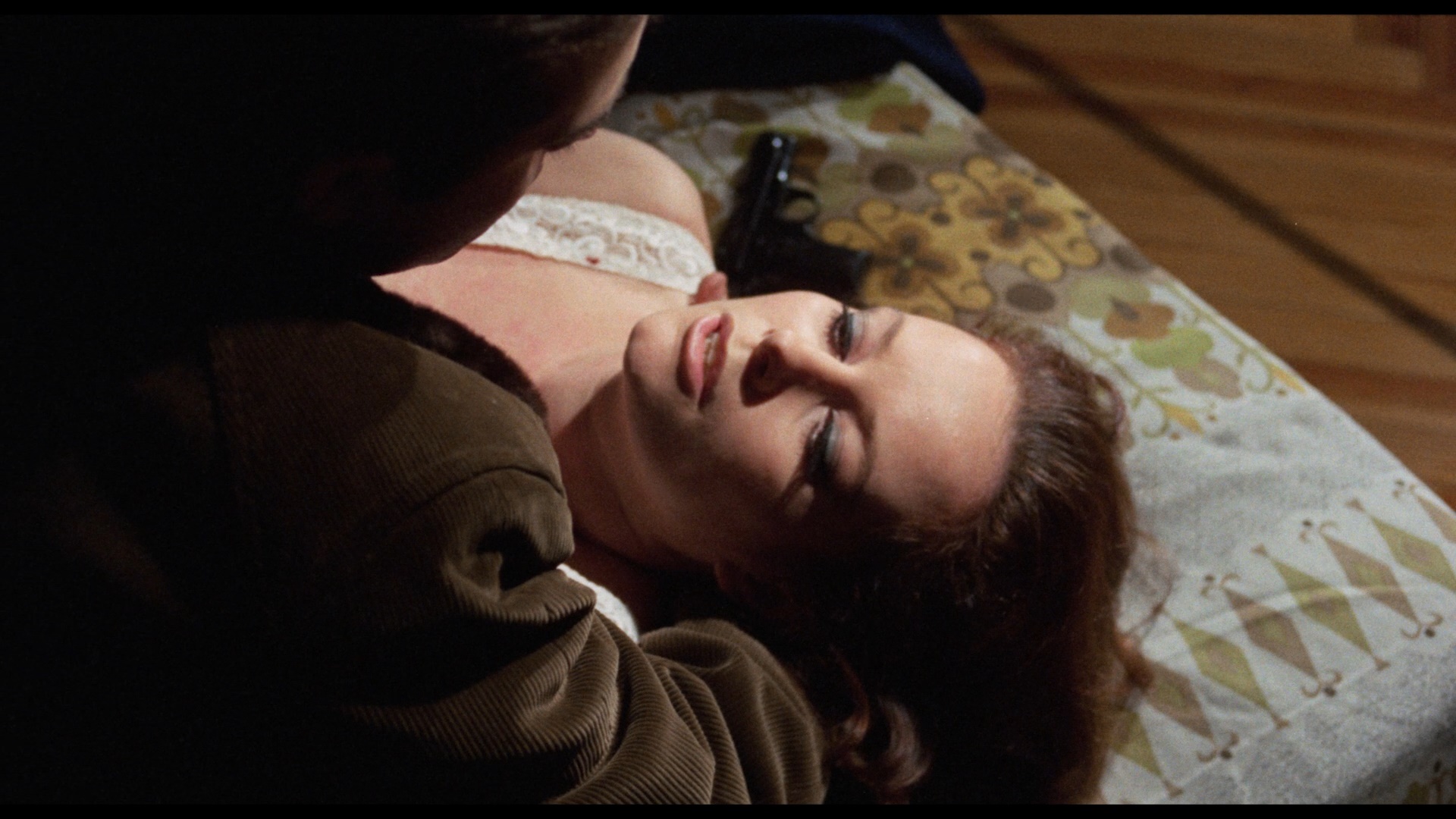 you thought Adamson was past the whole patchwork approach to other people's movies by that point, well, disc eleven proves otherwise with two peculiar examples proving he hadn't lost his touch-- though this time they both have a blaxploitation angle of one kind or another. The first chronological Adamson blaxploitation film, 1974s Mean Mother, started life as a 1971 Euro thriller by none other than León Klimovsky called Run for Your Life featuring Thunderball star Luciana Paluzzi and Dennis Safren. A whole new protagonist is added here, Vietnam vet Beauregard Jones (Dobie Gray), with Safren brought back for continuity and Marilyn Joi along for the ride as well. The film is also tricked out with a funky soundtrack and stylish opening credits to complete the dubious illusion of a single feature about two men who served together and have now become embroiled in the crime world including a smuggling ring and counterfeiters in Rome. (The fact that Safren doesn't look at all the same due to the intervening years is never really addressed.) Meanwhile Beauregard beats up lots of people and fires a gun a lot. It's an adorable mess of a film that certainly isn't boring, though audiences at the time were probably doubting their sanity by the half-hour mark. Again this one comes to Blu-ray straight from the original negative and looks excellent, with extras including Sherman's partial commentary from the earlier DVD (a useful thumbnail sketch of how the string of black action films started and how they came about putting this puzzle of a film together), a trailer, and "The Joy of Marilyn Joi" (17m), a great new interview with the always charming and enthusiastic actress about her days with Adamson, her healthy attitude about nudity, her club days, and the fun she had getting to play a wide
you thought Adamson was past the whole patchwork approach to other people's movies by that point, well, disc eleven proves otherwise with two peculiar examples proving he hadn't lost his touch-- though this time they both have a blaxploitation angle of one kind or another. The first chronological Adamson blaxploitation film, 1974s Mean Mother, started life as a 1971 Euro thriller by none other than León Klimovsky called Run for Your Life featuring Thunderball star Luciana Paluzzi and Dennis Safren. A whole new protagonist is added here, Vietnam vet Beauregard Jones (Dobie Gray), with Safren brought back for continuity and Marilyn Joi along for the ride as well. The film is also tricked out with a funky soundtrack and stylish opening credits to complete the dubious illusion of a single feature about two men who served together and have now become embroiled in the crime world including a smuggling ring and counterfeiters in Rome. (The fact that Safren doesn't look at all the same due to the intervening years is never really addressed.) Meanwhile Beauregard beats up lots of people and fires a gun a lot. It's an adorable mess of a film that certainly isn't boring, though audiences at the time were probably doubting their sanity by the half-hour mark. Again this one comes to Blu-ray straight from the original negative and looks excellent, with extras including Sherman's partial commentary from the earlier DVD (a useful thumbnail sketch of how the string of black action films started and how they came about putting this puzzle of a film together), a trailer, and "The Joy of Marilyn Joi" (17m), a great new interview with the always charming and enthusiastic actress about her days with Adamson, her healthy attitude about nudity, her club days, and the fun she had getting to play a wide 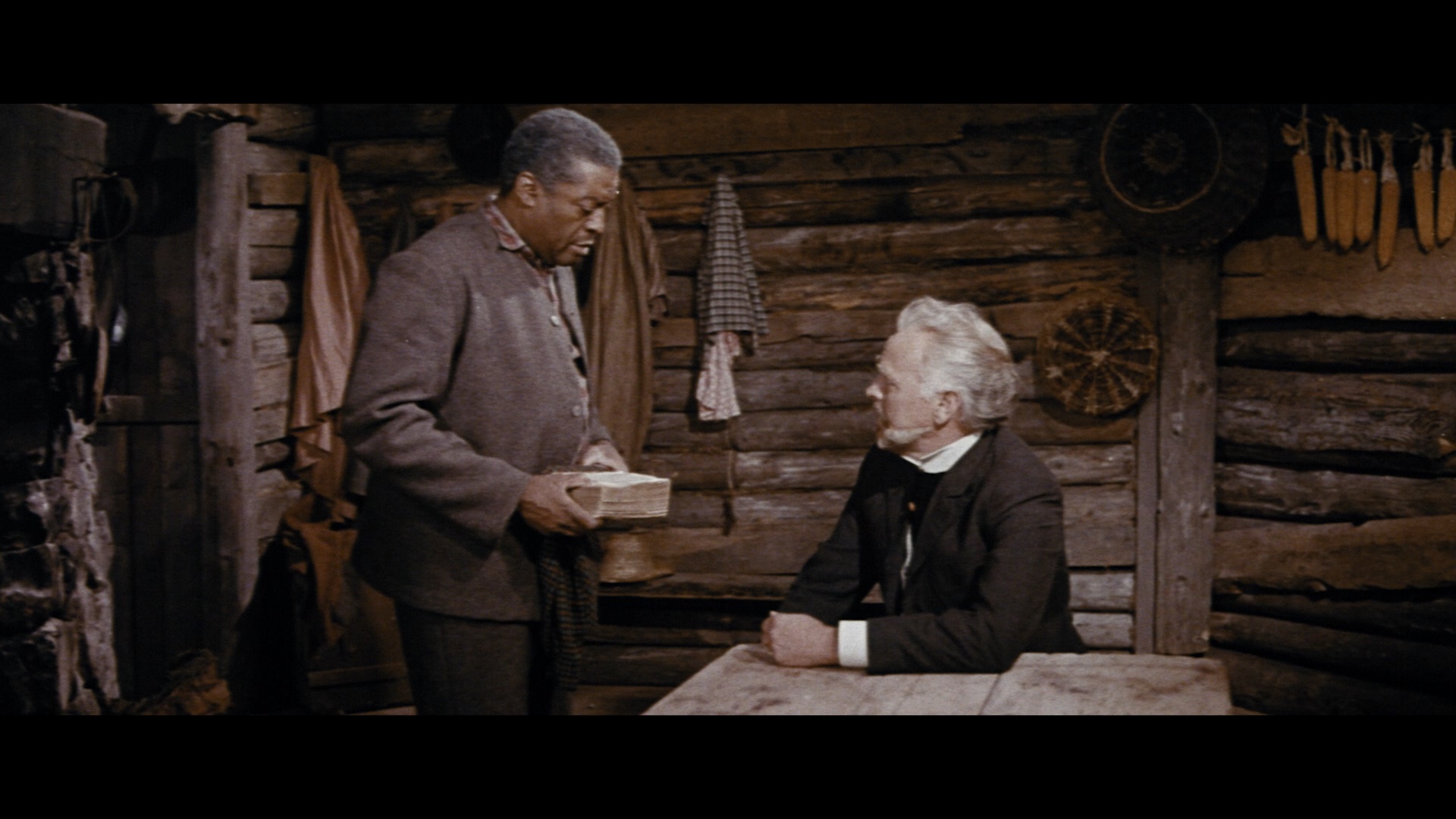 range of characters and act with legends like Jim Kelly.
range of characters and act with legends like Jim Kelly.
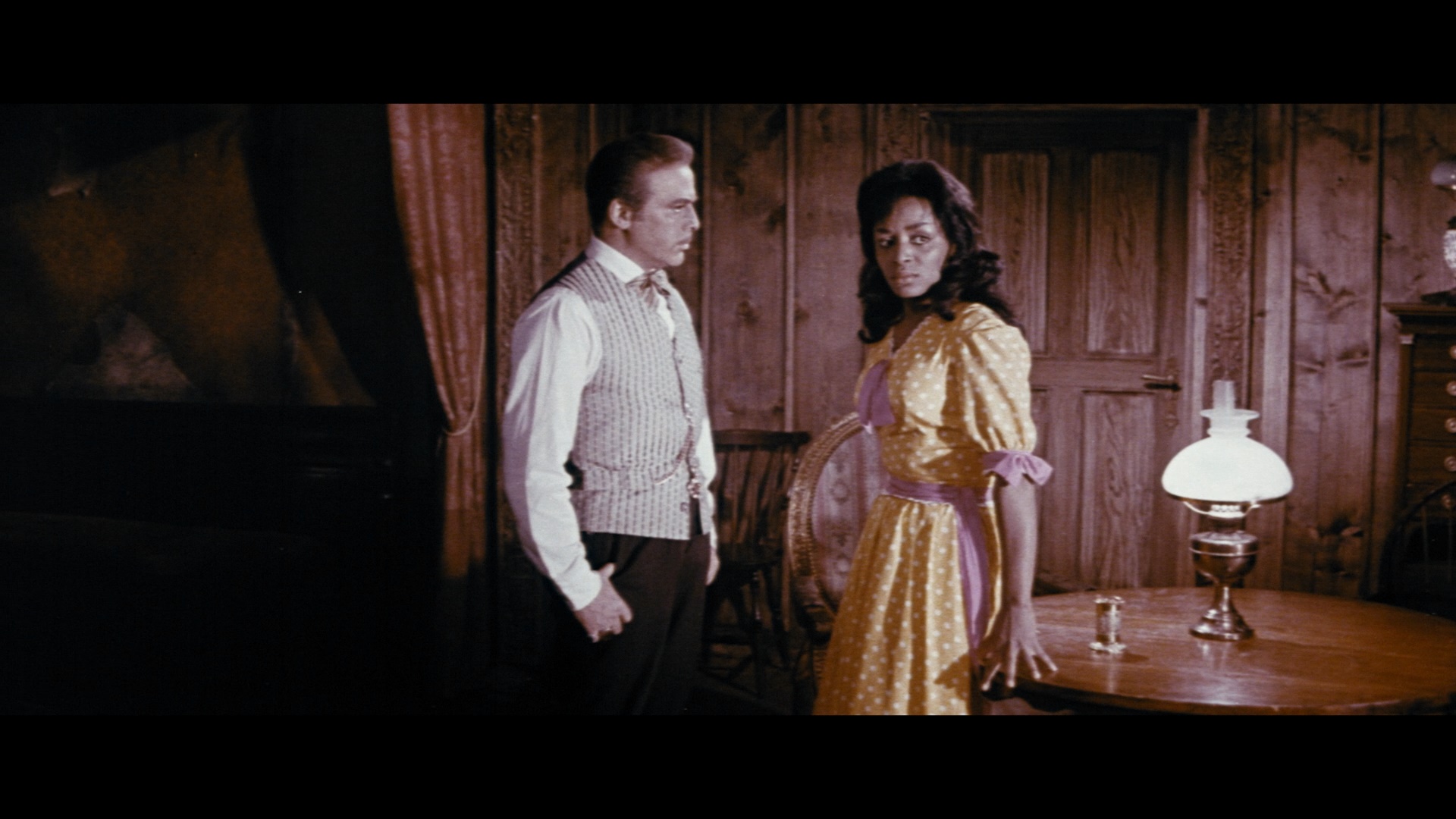 That disc's co-feature is 1976's Uncle Tom's Cabin, a reworking of a much longer and more prestigious German production from 1964 starring Herbert Lom and Dr. No's John Kitzmiller as the title character. The story is pretty much lifted verbatim from its famous source material, the trailblazing novel by Harriet Beecher Stowe, with Lom cast as one of the era's most legendary villains, the wicked slaver Simon Legree, who fends off a slave revolt and leads a pursuit against the escaped men and women who slipped through his fingers. This version is a far cry from what audiences originally saw in Europe, a respectable epic running nearly three hours; when that proved out of fashion with what American audiences would see at the time, it was eventually shorn of over an hour by Kroger Babb and issued to a very muted response. Adamson and Sherman decided to augment it with some juicy scenes of sex and violence more in line with something like Mandingo (albeit not that extreme), even bringing back Marilyn Joi for the new footage. The end result is certainly something to behold, a Frankenstein of a film that finds Adamson's aesthetic rubbing shoulders with a high-toned European treatise on American racism. There's still a lot to enjoy here, mainly what's left of Lom's performance in his usual glorious villain mode warming up for what he would unleash soon after in Mark of the Devil. The transfer of this one comes from multiple faded surviving 35mm prints (all pre-
That disc's co-feature is 1976's Uncle Tom's Cabin, a reworking of a much longer and more prestigious German production from 1964 starring Herbert Lom and Dr. No's John Kitzmiller as the title character. The story is pretty much lifted verbatim from its famous source material, the trailblazing novel by Harriet Beecher Stowe, with Lom cast as one of the era's most legendary villains, the wicked slaver Simon Legree, who fends off a slave revolt and leads a pursuit against the escaped men and women who slipped through his fingers. This version is a far cry from what audiences originally saw in Europe, a respectable epic running nearly three hours; when that proved out of fashion with what American audiences would see at the time, it was eventually shorn of over an hour by Kroger Babb and issued to a very muted response. Adamson and Sherman decided to augment it with some juicy scenes of sex and violence more in line with something like Mandingo (albeit not that extreme), even bringing back Marilyn Joi for the new footage. The end result is certainly something to behold, a Frankenstein of a film that finds Adamson's aesthetic rubbing shoulders with a high-toned European treatise on American racism. There's still a lot to enjoy here, mainly what's left of Lom's performance in his usual glorious villain mode warming up for what he would unleash soon after in Mark of the Devil. The transfer of this one comes from multiple faded surviving 35mm prints (all pre- 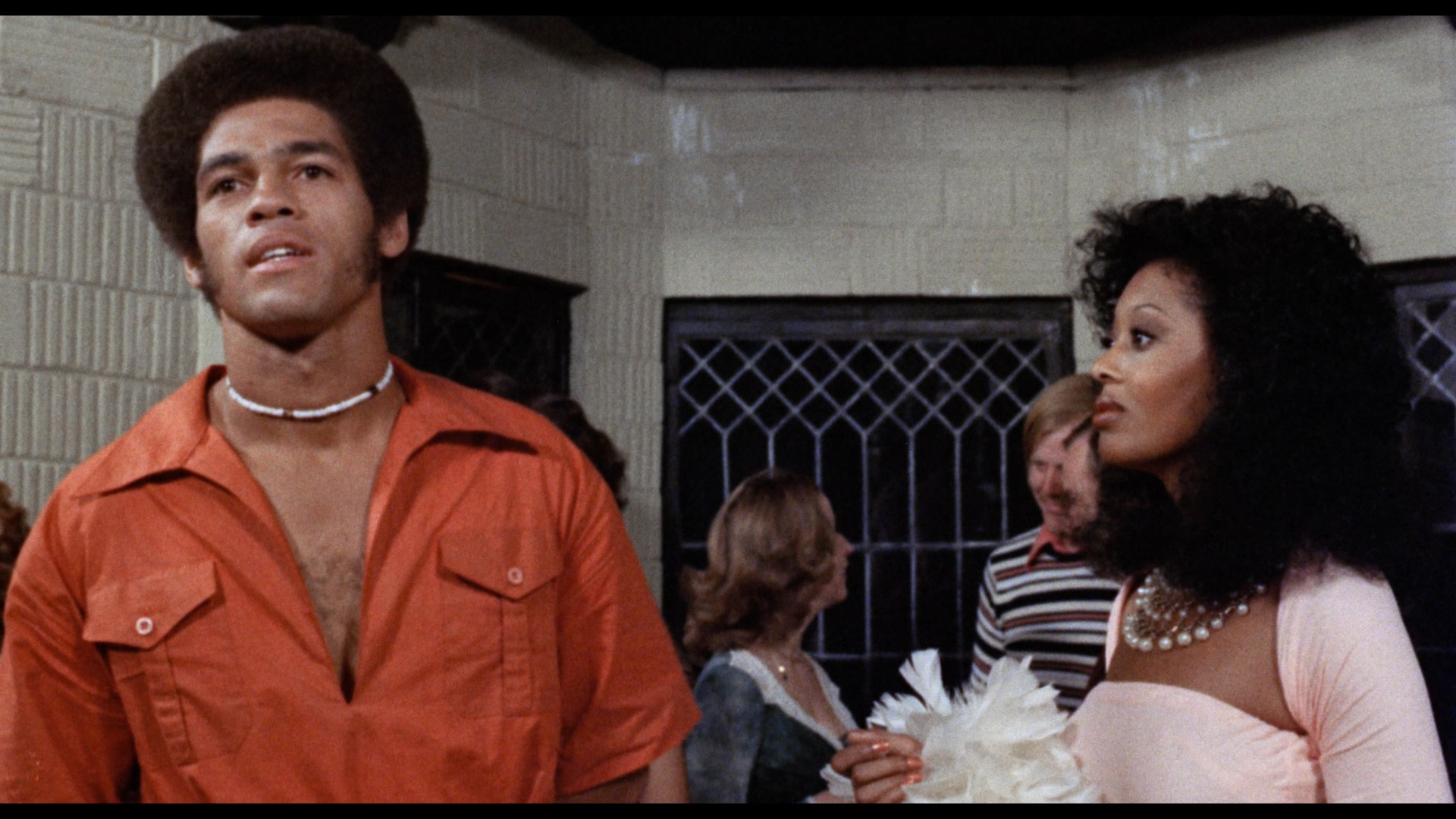
The 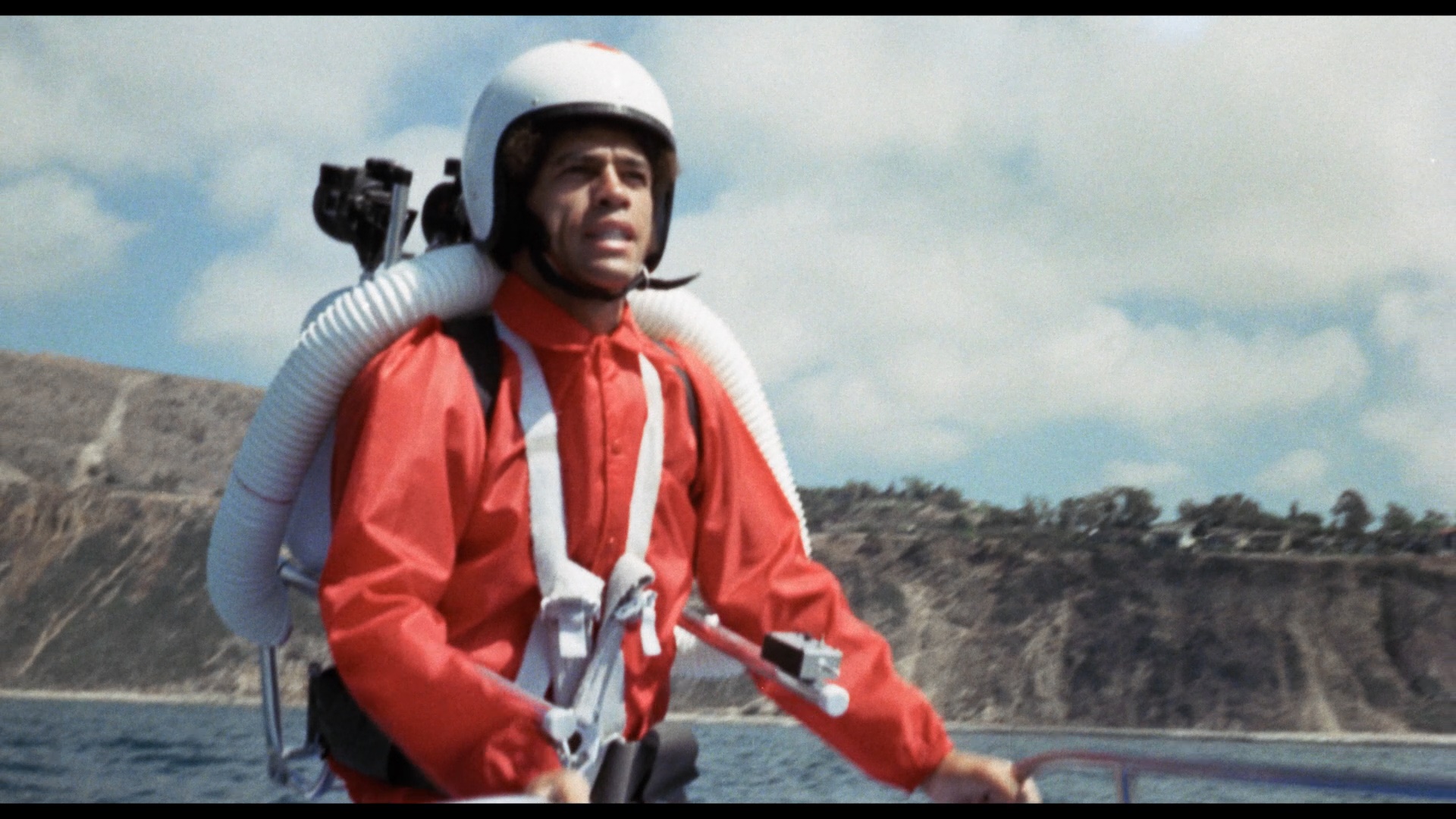 apex of Adamson's blaxploitation period comes with disc twelve, a pair of films starring Jim Kelly. A trained martial artist with an athletic physique and graceful sense of movement, Kelly shot to stardom opposite Bruce Lee in Enter the Dragon in 1973 and had parlayed that into such vehicles as Black Belt Jones, Three the Hard Way, and Take a Hard Ride. He ended up teaming with Adamson first for 1977's Black Samurai, which is a great title even if the film itself features kung fu instead of any discernible samurai action. Here he plays Robert Sand, a skilled agent for the secret organization D.R.A.G.O.N. (huh, wonder where they got that name?), who's pressed into service when his girlfriend, ambassador's daughter Toki (Essie Lin Chia), falls into the clutches of a criminal organization trying to extort access to a powerful weapon. Sand ends up using his fists and even a jet pack as he hops across the globe battling an army of bad guys in one fist-fighting showdown after another. Marilyn Joi comes along as his fellow crime fighter, and there's even some voodoo thrown into the mix in a cockeyed nod to Live and Let Die. For some reason this was cut down to a PG rating (shorn of all nudity and profanity) for a reissue, a source that's been used for the cheapie DVD editions floating around out there. Luckily this transfer from the best surviving material (a CRI) not only looks great but is also the complete uncensored version at last; it's a real joy
apex of Adamson's blaxploitation period comes with disc twelve, a pair of films starring Jim Kelly. A trained martial artist with an athletic physique and graceful sense of movement, Kelly shot to stardom opposite Bruce Lee in Enter the Dragon in 1973 and had parlayed that into such vehicles as Black Belt Jones, Three the Hard Way, and Take a Hard Ride. He ended up teaming with Adamson first for 1977's Black Samurai, which is a great title even if the film itself features kung fu instead of any discernible samurai action. Here he plays Robert Sand, a skilled agent for the secret organization D.R.A.G.O.N. (huh, wonder where they got that name?), who's pressed into service when his girlfriend, ambassador's daughter Toki (Essie Lin Chia), falls into the clutches of a criminal organization trying to extort access to a powerful weapon. Sand ends up using his fists and even a jet pack as he hops across the globe battling an army of bad guys in one fist-fighting showdown after another. Marilyn Joi comes along as his fellow crime fighter, and there's even some voodoo thrown into the mix in a cockeyed nod to Live and Let Die. For some reason this was cut down to a PG rating (shorn of all nudity and profanity) for a reissue, a source that's been used for the cheapie DVD editions floating around out there. Luckily this transfer from the best surviving material (a CRI) not only looks great but is also the complete uncensored version at last; it's a real joy 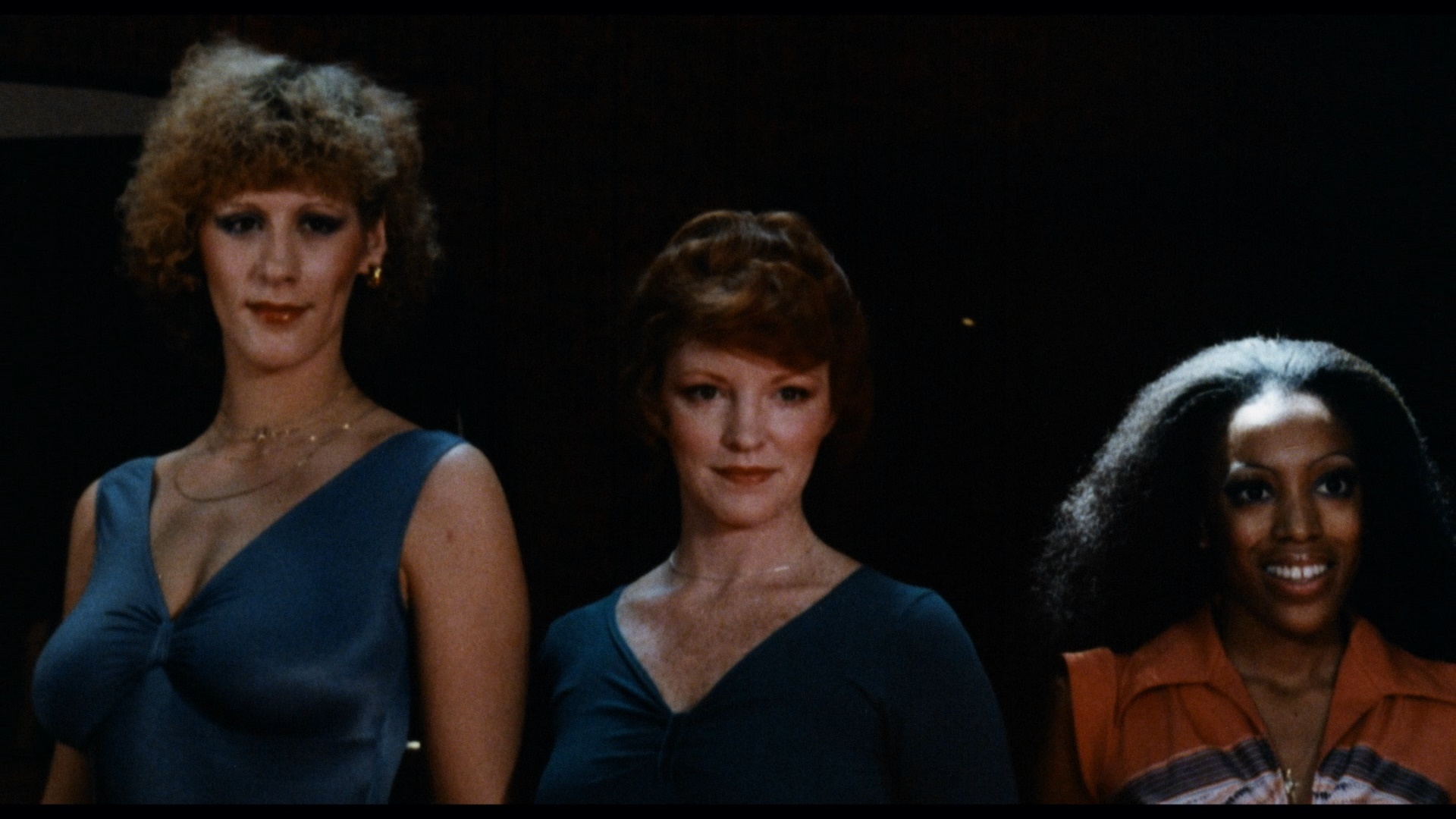 to behold and makes the film even more fun to watch (preferably after a beer or two to break down your brain's defenses).
to behold and makes the film even more fun to watch (preferably after a beer or two to break down your brain's defenses). 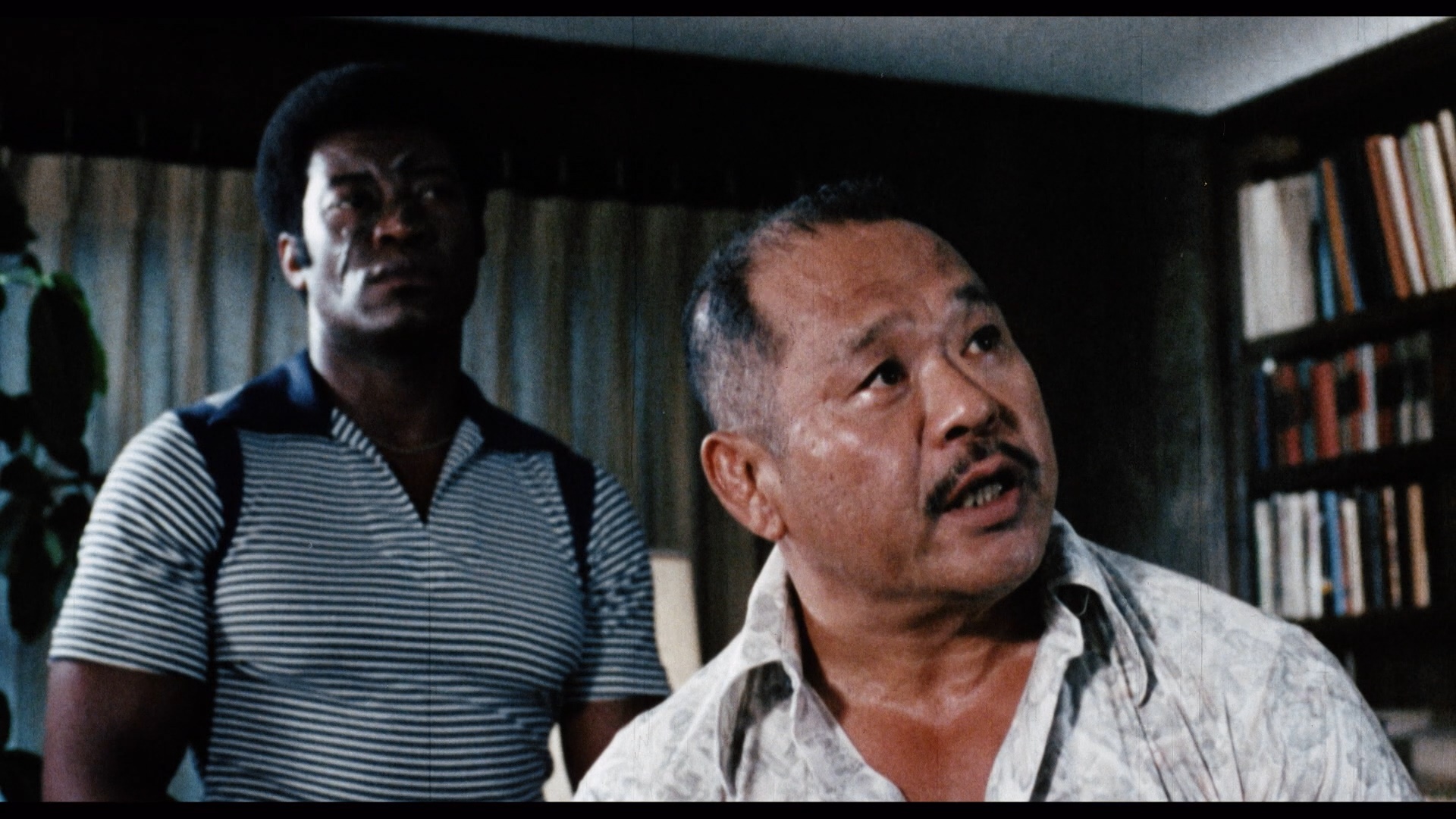
The other Kelly film, Death Dimension, started life under the title Revenge of the Dragon and was also known as Freeze Bomb (among many other titles). Kelly has a lot less screen time here, but that's compensated for (at least with James Bond fans) by the presence of Goldfinger's Harold Sakata and On Her Majesty's Secret Service's George Lazenby, a trio that makes this one of the coolest casts in the Adamson roster. Here Kelly plays Ash, a cop enlisted by his boss (Lazenby) to team up with Li (Myron Lee, a one-shot Bruce Lee imitator) to find a young woman housing a microchip that's key to a powerful freezing weapon sought after by a villainous mastermind known as the Pig (Sakata). Plus you get Aldo Ray and a snapping turtle. Much more random and ratty than the prior Kelly film, this is still tons of fun and really sings when its star bolts into his big action scenes (including a truly maniacal climax). Also presented here uncut, this is taken from visibly inferior elements cited as a 35mm protection print with a standard print used to fill in for one missing reel. Damage is evident and colors aren't as strong, but again, it's the best this has ever looked on home video and a very welcome presentation. Trailers for both films are included along with an alternate French title sequence for Death Dimension.
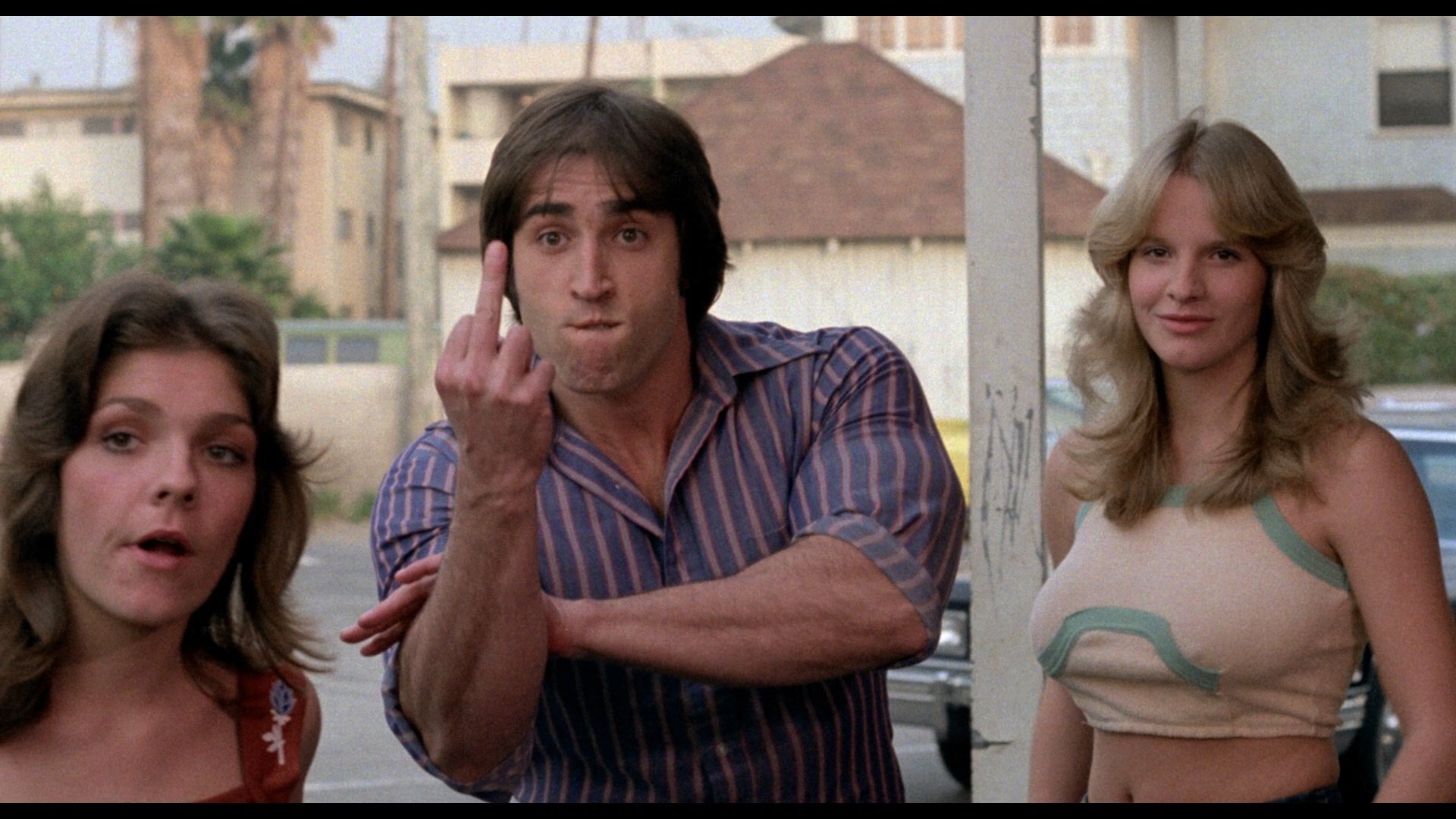 On we go to disc thirteen, a triple feature of completely unconnected films that provides a snapshot of where Adamson
On we go to disc thirteen, a triple feature of completely unconnected films that provides a snapshot of where Adamson 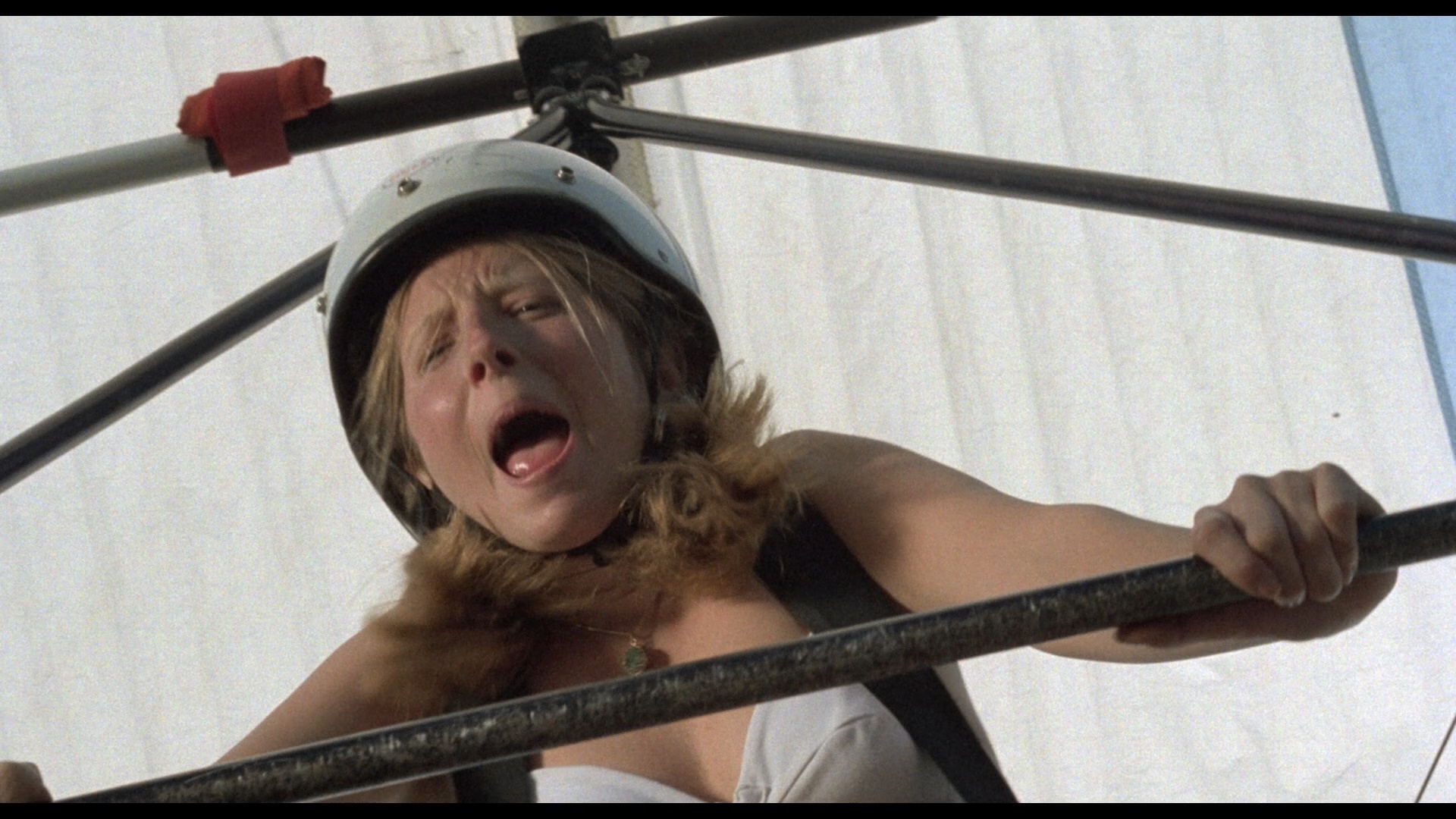 was around the turn of the decade. Made during the first wave of teen sex comedies (The Cheerleaders, The Pom Pom Girls, etc.) before it exploded to a whole new level in the '80s, Sunset Cove is a credible if strangely laugh-deprived addition to the subgenre with plenty of nudity, hijinks, and... real estate protesting. The title stretch of land is a favorite hangout for a bunch of free-spirited, horny California teenagers whose ongoing rift between two camps must be resolved so they can fight a common enemy: a plan to turn their turf into condos. Lots of skinny dipping, protesting, pool parties, and other nonsense soon follow, even including a naked getaway on motorcycle at one point. It's all harmless, time-killing fluff with a bit of screen time for John Carradine as a former judge and legal ally for the kids (all of whom look like they're way past college age), shot with a look that uncannily mimics the Crown International aesthetic despite the fact that this was one of the inaugural films from the short-lived Cal-Am Productions (who also gave us The Toolbox Murders). Rumors abounded that film elements for this one had ceased to exist sometime back in the '80s after this hit European VHS, making it something of a lost film (with the trailer far easier to see). Fortunately the original camera negative was dug up, and again it makes for a really sparkling transfer with those beachscapes and bright summer clothing looking superb throughout. Think of those pristine Crown transfers off the negs and you'll have an idea of what to expect. The trailer and a TV spot are also included, but the big extra is "Sunset Toolbox" (11m31s), an interview with producer Tony Didio about the Cal-Am era, his involvement with Adamson on multiple projects, and the creation of the horror hit that remains the company's biggest legacy.
was around the turn of the decade. Made during the first wave of teen sex comedies (The Cheerleaders, The Pom Pom Girls, etc.) before it exploded to a whole new level in the '80s, Sunset Cove is a credible if strangely laugh-deprived addition to the subgenre with plenty of nudity, hijinks, and... real estate protesting. The title stretch of land is a favorite hangout for a bunch of free-spirited, horny California teenagers whose ongoing rift between two camps must be resolved so they can fight a common enemy: a plan to turn their turf into condos. Lots of skinny dipping, protesting, pool parties, and other nonsense soon follow, even including a naked getaway on motorcycle at one point. It's all harmless, time-killing fluff with a bit of screen time for John Carradine as a former judge and legal ally for the kids (all of whom look like they're way past college age), shot with a look that uncannily mimics the Crown International aesthetic despite the fact that this was one of the inaugural films from the short-lived Cal-Am Productions (who also gave us The Toolbox Murders). Rumors abounded that film elements for this one had ceased to exist sometime back in the '80s after this hit European VHS, making it something of a lost film (with the trailer far easier to see). Fortunately the original camera negative was dug up, and again it makes for a really sparkling transfer with those beachscapes and bright summer clothing looking superb throughout. Think of those pristine Crown transfers off the negs and you'll have an idea of what to expect. The trailer and a TV spot are also included, but the big extra is "Sunset Toolbox" (11m31s), an interview with producer Tony Didio about the Cal-Am era, his involvement with Adamson on multiple projects, and the creation of the horror hit that remains the company's biggest legacy.
Bestowing 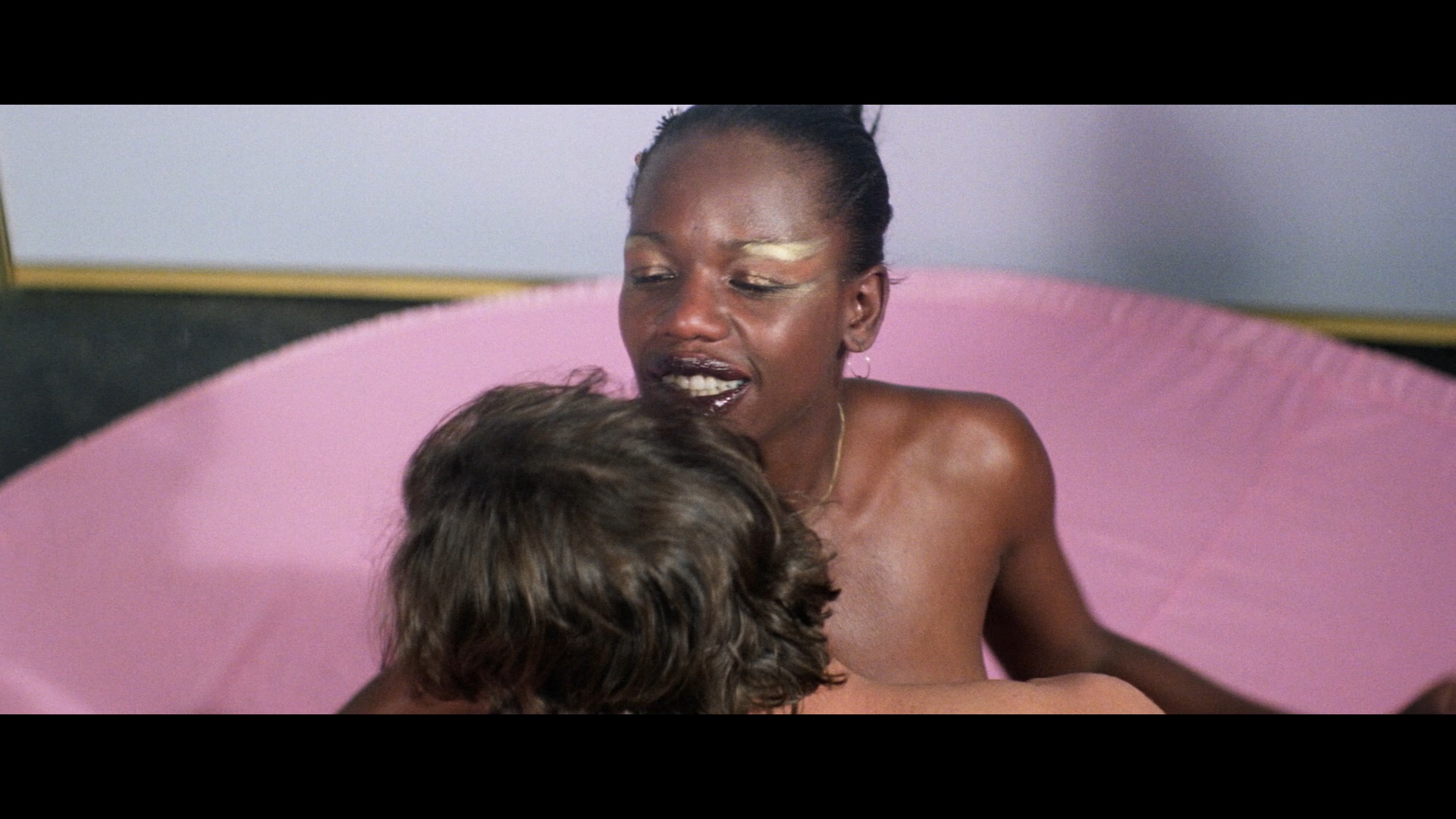 the title of craziest Al Adamson film might seem like a challenge, but one surefire contender (and likely winner) has to be 1977's Cinderella 2000. Inspired in equal parts by
the title of craziest Al Adamson film might seem like a challenge, but one surefire contender (and likely winner) has to be 1977's Cinderella 2000. Inspired in equal parts by 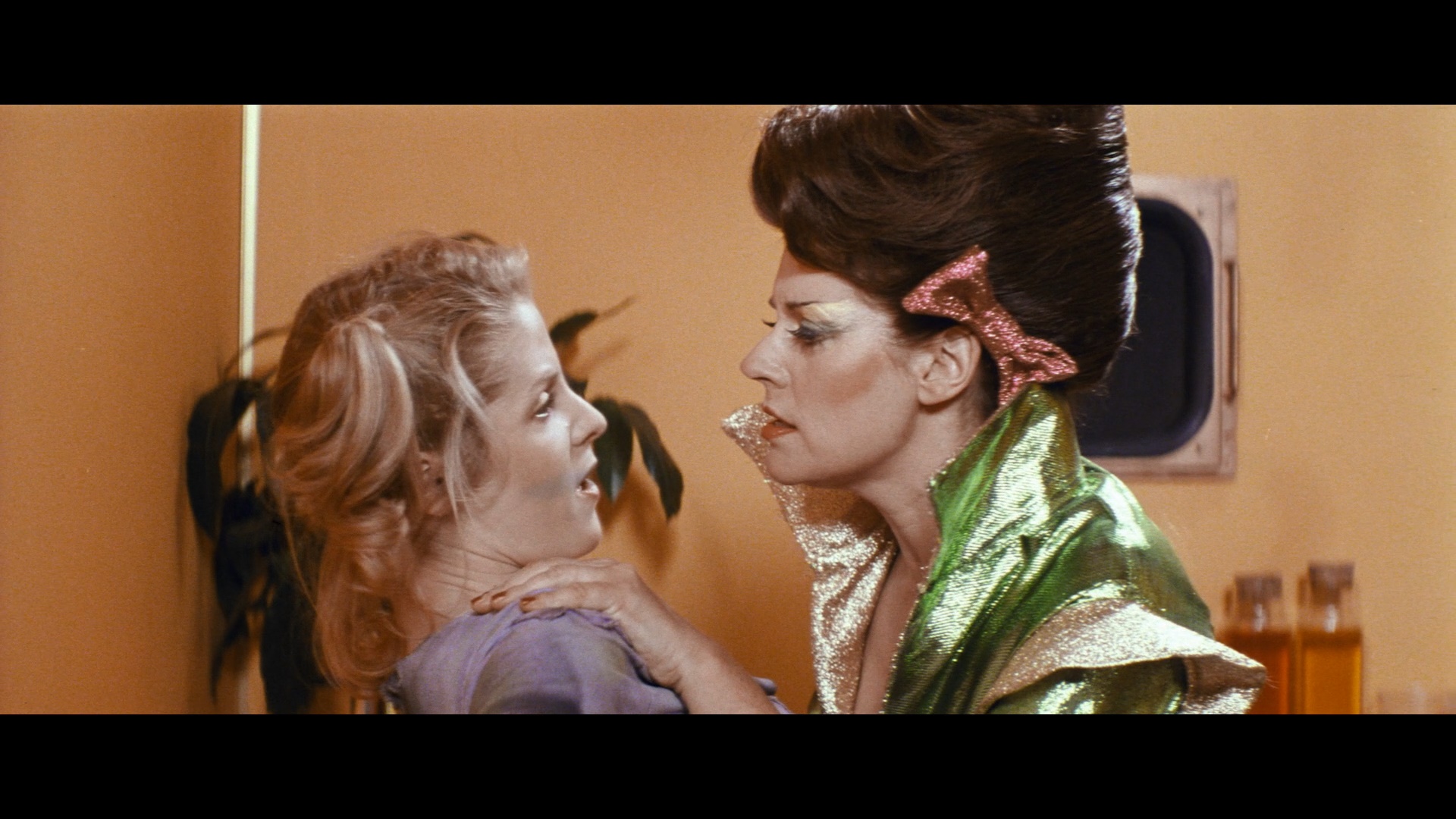 the X-rated version of Alice in Wonderland and the kitschy future shock of Radley Metzger's Camille 2000, this is a sci-fi musical softcore version of the enduring fairy tale set in a society where sex can only be performed by governmental permission -- enforced by robots who can shrink any offenders down to Bert I. Gordon-style doll size. Tormented by her domineering stepmother (none other than Renee Harmon) and her two stepsisters, Cindy (Through the Looking Glass' Catherine Burgess, billed as Catharine Erhardt) ends up getting a musical forest consultation for her Fairy Godfather (Jay B. Larson) fresh off of a UFO. Meanwhile government official Tom Prince (frequent Star Trek actor Vaughn Armstrong) has his wandering eye captured by Cindy at a masquerade ball only to lose her before... well, you know the rest, except it doesn't involve finding the right slipper. Absolutely bonkers and truly compelling in a "what planet did this come from?" way, this one throws in everything but the kitchen sink including some peppy songs and an avalanche of nudity (even moreso in the stronger European version, which features a surprising look at Armstrong at full mast and a lengthy fantasy sequence based on Snow White with Angelo Rossitto). Adamson really uses every inch of the wide scope framing, an aspect completely lost on the massacred DVD and VHS editions that rendered the whole thing unwatchable. (At least the DVD included the full-strength Euro cut and the watered-down U.S. one.) Seeing it in all its glory on Blu-ray is a wondrous thing if you're in the right mindset; apart from the first reel taken from multiple good quality prints, it's sourced from the original negative and easily tramples on any of its home video predecessors. It's also the full-strength international cut, too,
the X-rated version of Alice in Wonderland and the kitschy future shock of Radley Metzger's Camille 2000, this is a sci-fi musical softcore version of the enduring fairy tale set in a society where sex can only be performed by governmental permission -- enforced by robots who can shrink any offenders down to Bert I. Gordon-style doll size. Tormented by her domineering stepmother (none other than Renee Harmon) and her two stepsisters, Cindy (Through the Looking Glass' Catherine Burgess, billed as Catharine Erhardt) ends up getting a musical forest consultation for her Fairy Godfather (Jay B. Larson) fresh off of a UFO. Meanwhile government official Tom Prince (frequent Star Trek actor Vaughn Armstrong) has his wandering eye captured by Cindy at a masquerade ball only to lose her before... well, you know the rest, except it doesn't involve finding the right slipper. Absolutely bonkers and truly compelling in a "what planet did this come from?" way, this one throws in everything but the kitchen sink including some peppy songs and an avalanche of nudity (even moreso in the stronger European version, which features a surprising look at Armstrong at full mast and a lengthy fantasy sequence based on Snow White with Angelo Rossitto). Adamson really uses every inch of the wide scope framing, an aspect completely lost on the massacred DVD and VHS editions that rendered the whole thing unwatchable. (At least the DVD included the full-strength Euro cut and the watered-down U.S. one.) Seeing it in all its glory on Blu-ray is a wondrous thing if you're in the right mindset; apart from the first reel taken from multiple good quality prints, it's sourced from the original negative and easily tramples on any of its home video predecessors. It's also the full-strength international cut, too, 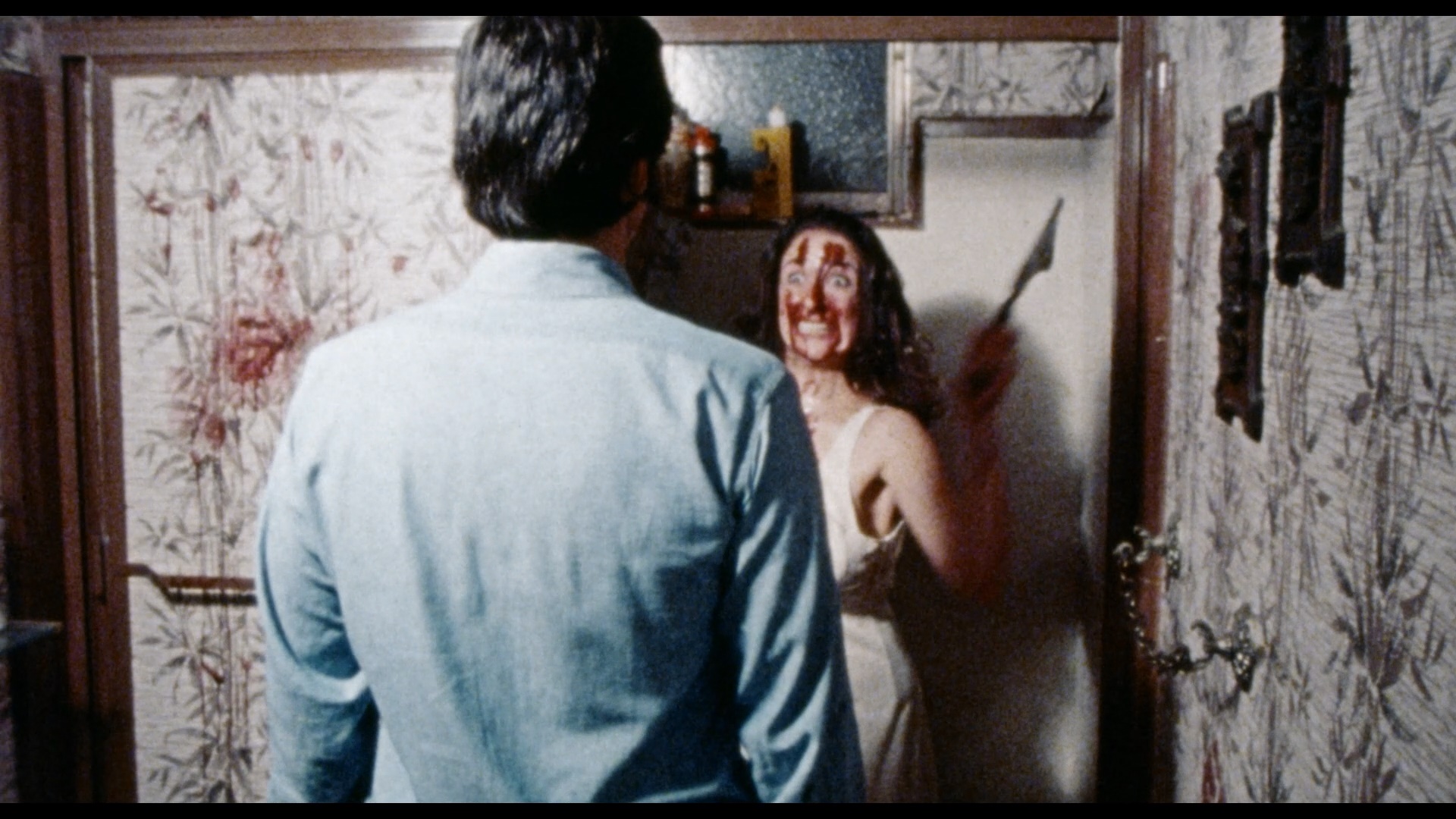 so prepare for a truly wild ride. Carried over from the earlier DVD is another partial Sherman commentary about the creation of the film (including the casting and the multiple versions as
so prepare for a truly wild ride. Carried over from the earlier DVD is another partial Sherman commentary about the creation of the film (including the casting and the multiple versions as 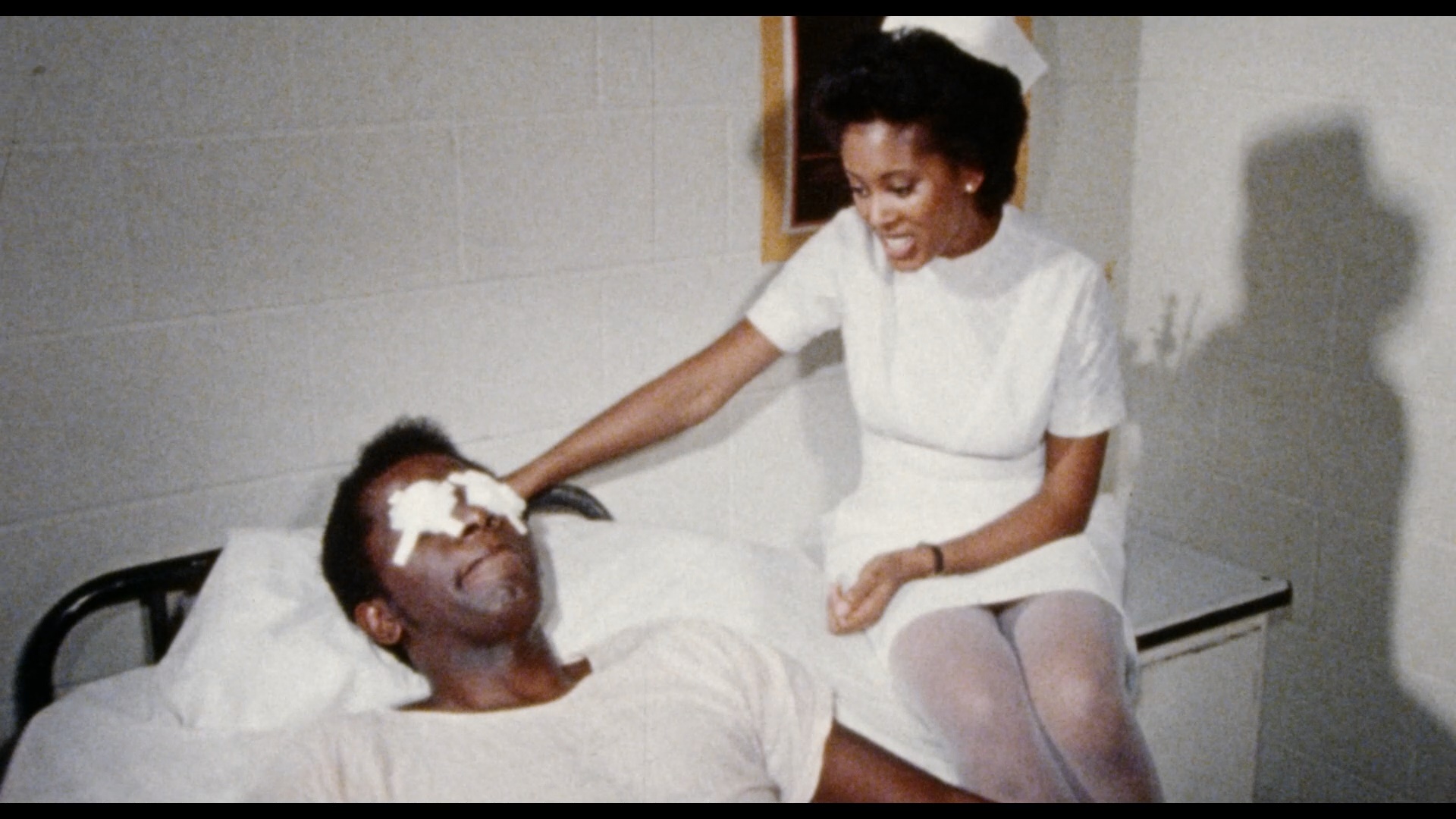 well as its release history), a radio spot, and a theatrical trailer. Rounding out the disc is Nurse Sherri, which has been released separately on Blu-ray by Vinegar Syndrome. However, the big news here is that it's a new film-sourced scan of the 84-minute sexy cut of the film, which was previously included only on a bonus DVD in that prior set; it's a great gesture and definitely not to be overlooked, with quality comparable to the Blu-ray of the standard theatrical cut. Also included are a trailer, a TV spot, a radio spot, and in another nice gesture, the isolated Adamson-directed scenes from Doctor Dracula, which is available on Blu-ray from Vinegar Syndrome along with the film it was chiseled from, Lucifer's Women.
well as its release history), a radio spot, and a theatrical trailer. Rounding out the disc is Nurse Sherri, which has been released separately on Blu-ray by Vinegar Syndrome. However, the big news here is that it's a new film-sourced scan of the 84-minute sexy cut of the film, which was previously included only on a bonus DVD in that prior set; it's a great gesture and definitely not to be overlooked, with quality comparable to the Blu-ray of the standard theatrical cut. Also included are a trailer, a TV spot, a radio spot, and in another nice gesture, the isolated Adamson-directed scenes from Doctor Dracula, which is available on Blu-ray from Vinegar Syndrome along with the film it was chiseled from, Lucifer's Women.
Rounding out the set is disc fourteen featuring Adamson's last two films, Carnival Magic and Lost; that one has been issued separately as a Severin Kids' title as well, and you can read all about it here. The whole thing comes packaged in a very impressive, sturdy box with attractive poster artwork for each title in the packaging holding the discs, but the real gold mine beyond the films themselves is a very thorough 120-page book, The Blood and Flesh Files, with Bill Ackerman and Amanda Reyes chronicling each film in great detail along with a number of unrealized projects and the lost Lash of Lust (which is represented by some tantalizing, never before published stills). Definitely keep it handy while you're going through this set at whatever pace helps maintain your sanity. No matter how you may feel about Adamson's colorful array of films, there's no doubt that this look like the release to beat this year.
BLOOD OF DRACULA'S CASTLE (Severin Blu-ray) (Theatrical Version)
BLOOD OF DRACULA'S CASTLE (Severin Blu-ray) (TV Version)
BLOOD OF DRACULA'S CASTLE (Scorpion Releasing DVD)
BLOOD OF DRACULA'S CASTLE (Rhino DVD)
DRACULA VS. FRANKENSTEIN (Severin Blu-ray)
DRACULA VS. FRANKENSTEIN (Media Blasters Blu-ray)
DRACULA VS. FRANKENSTEIN (Troma DVD)
Updated review on May 27, 2020.
![]()

